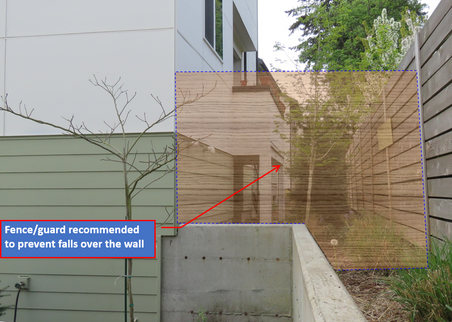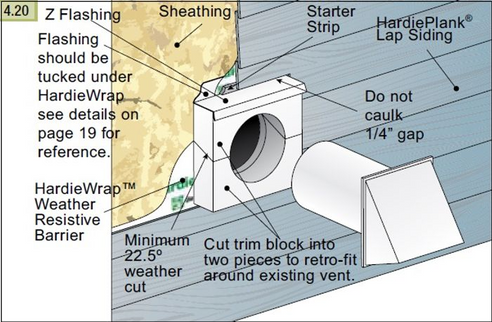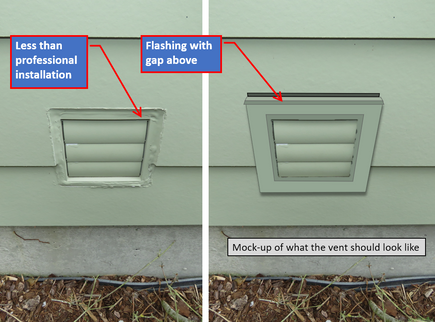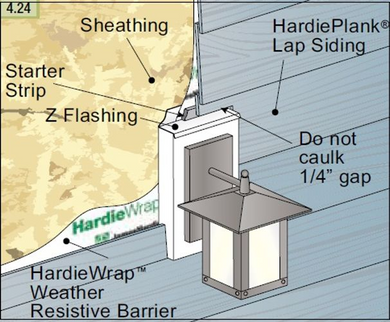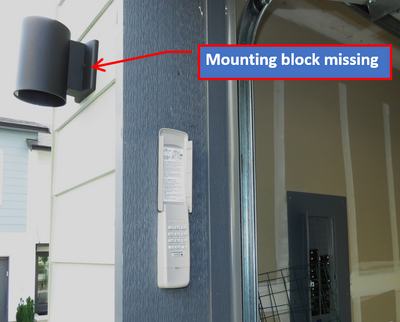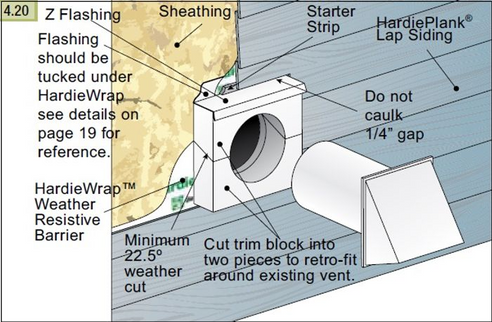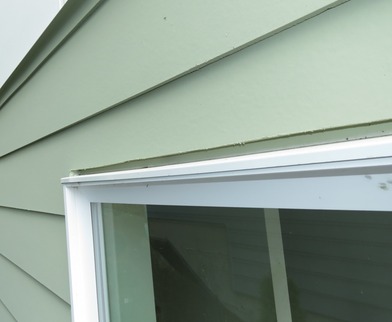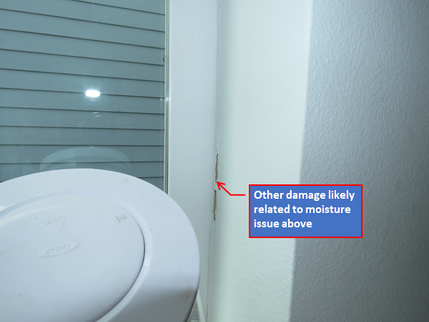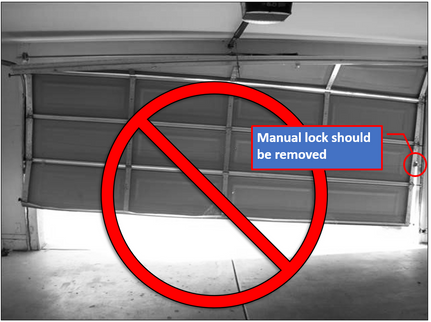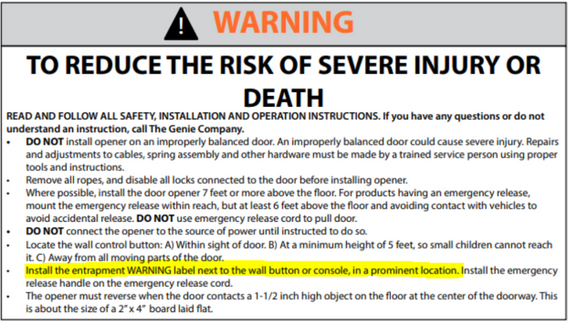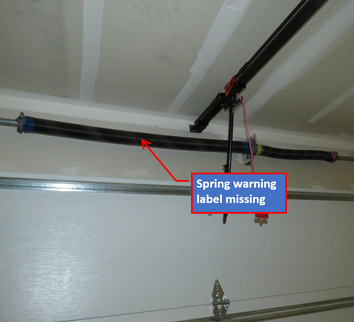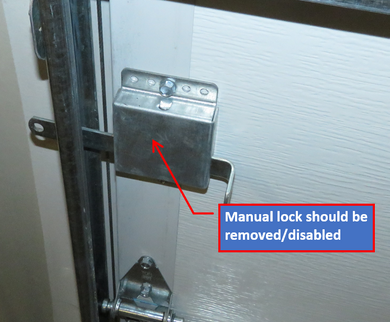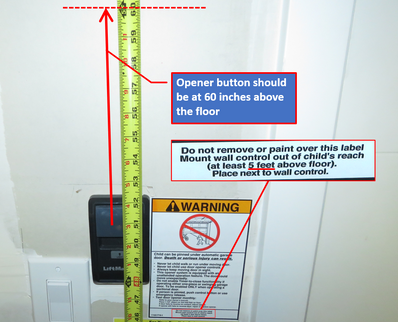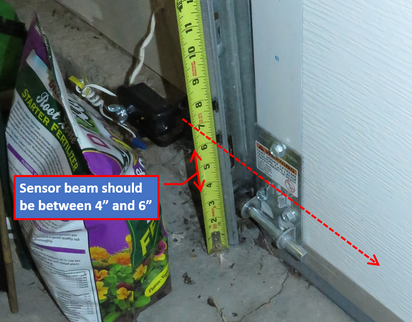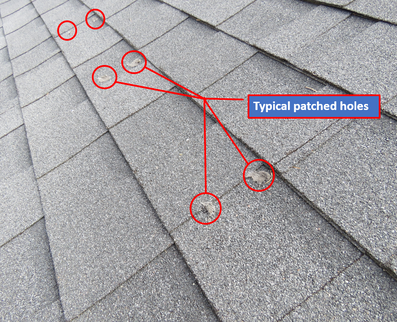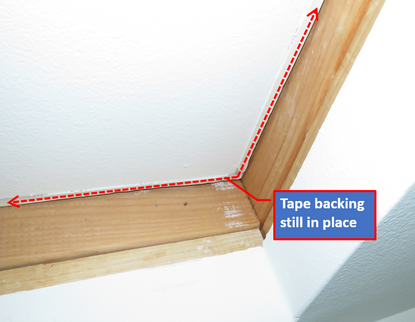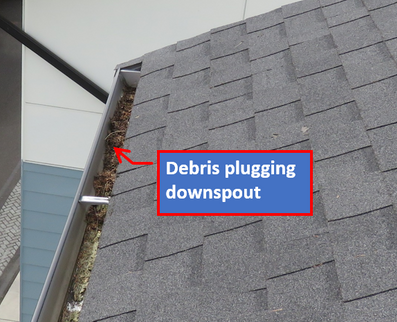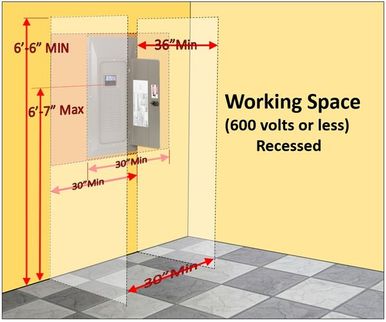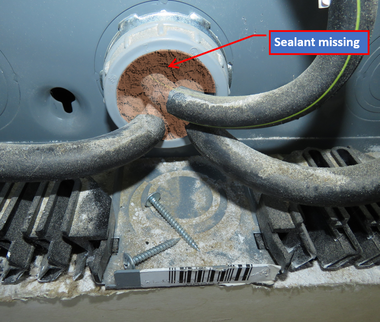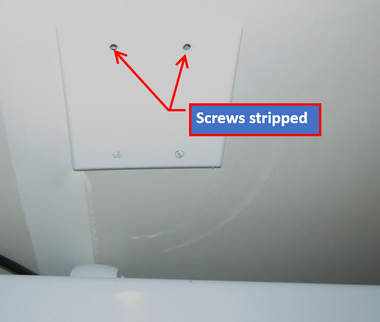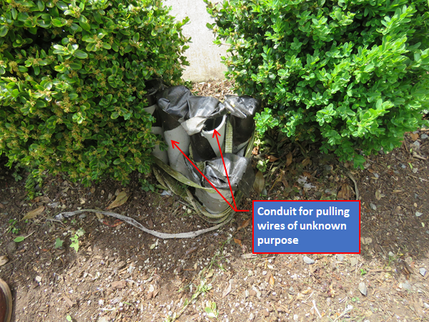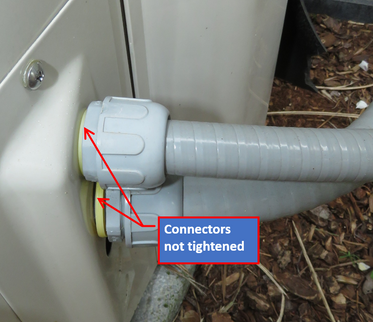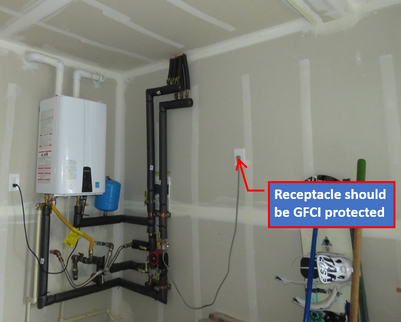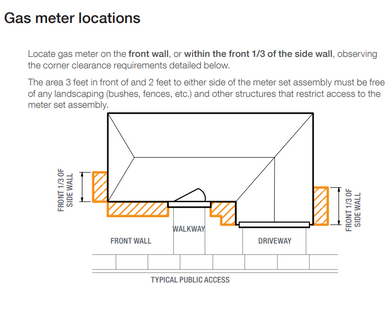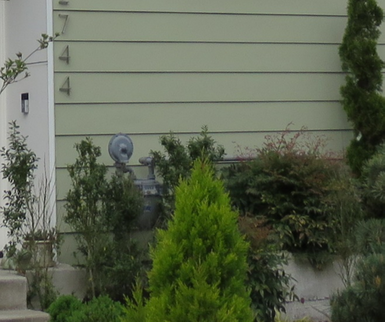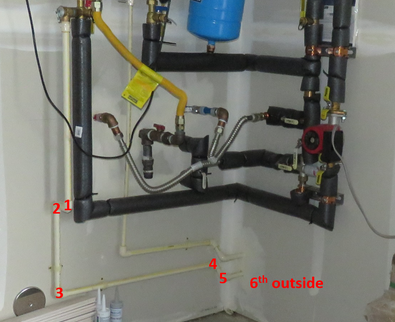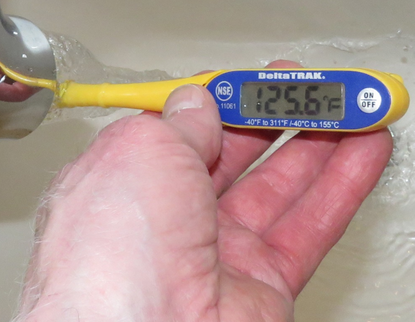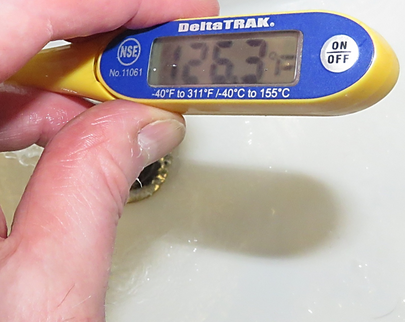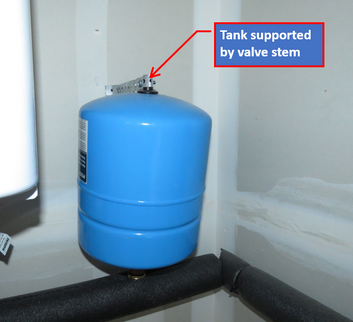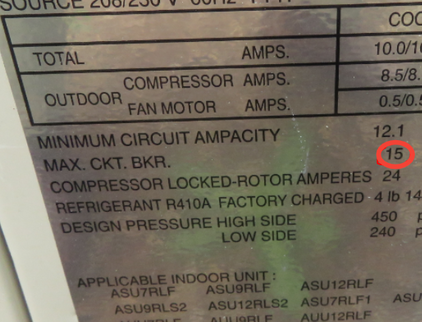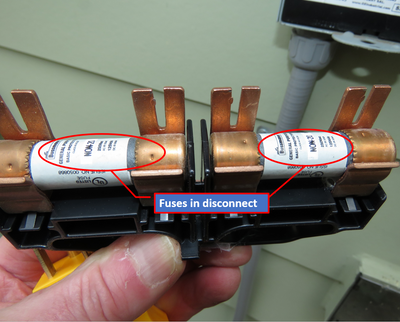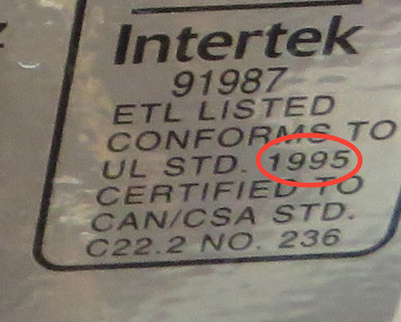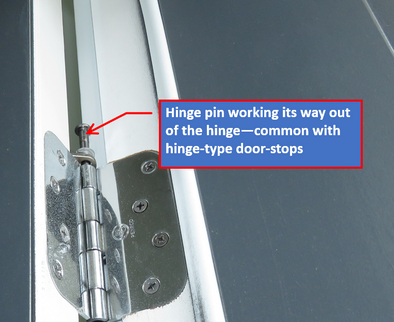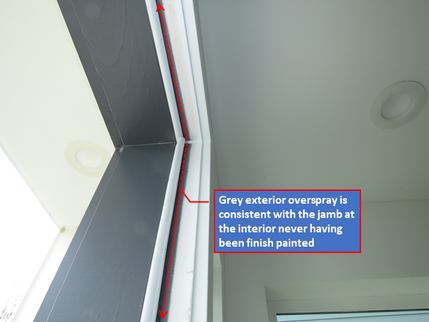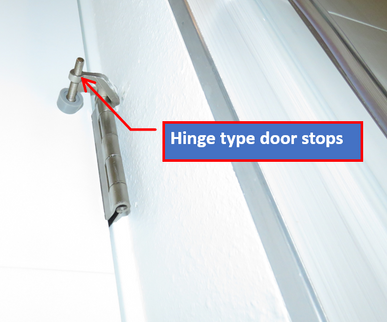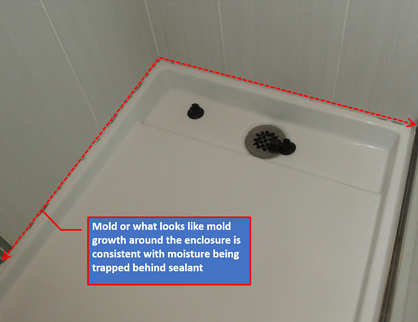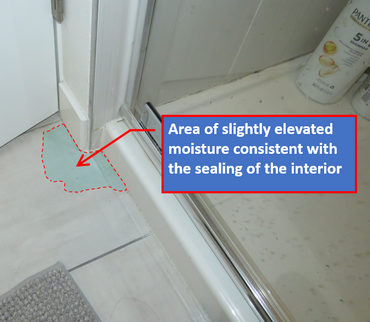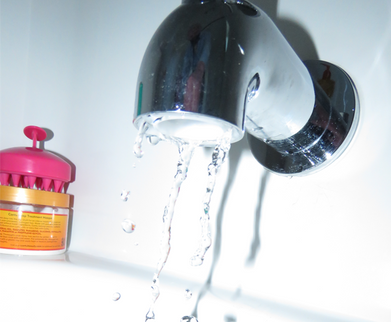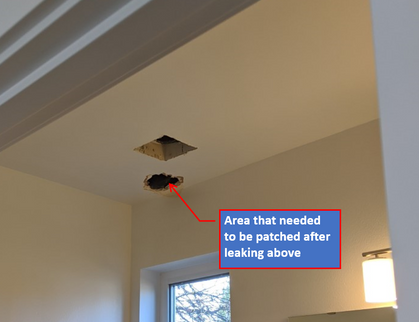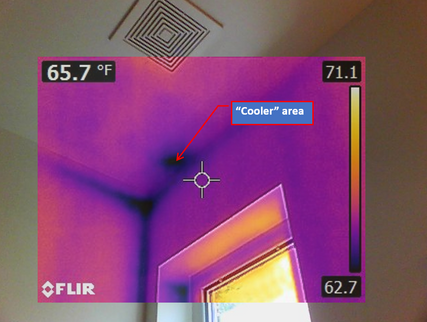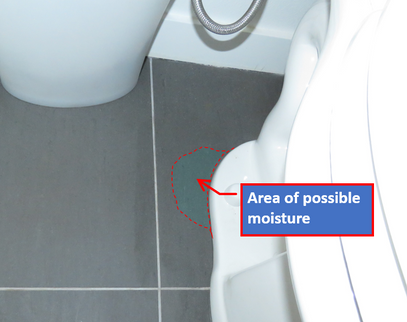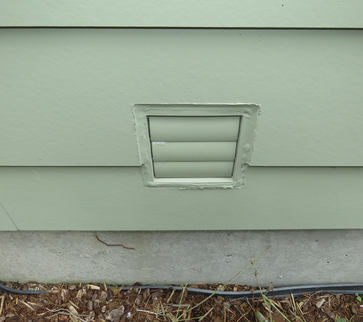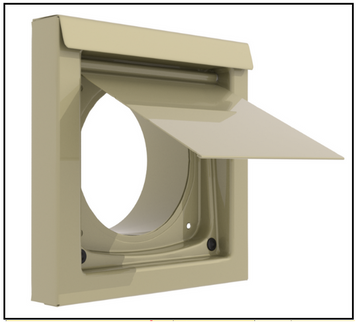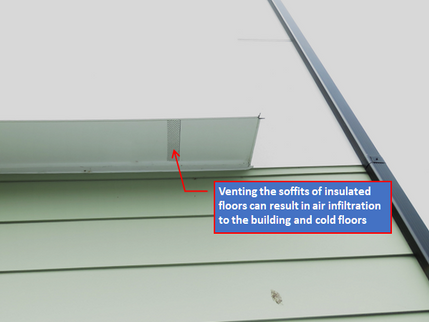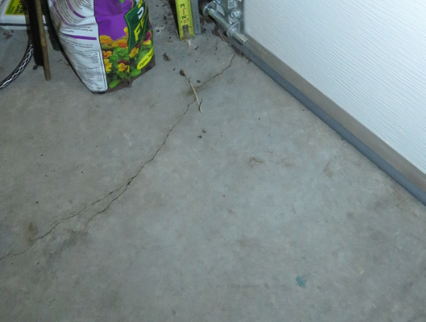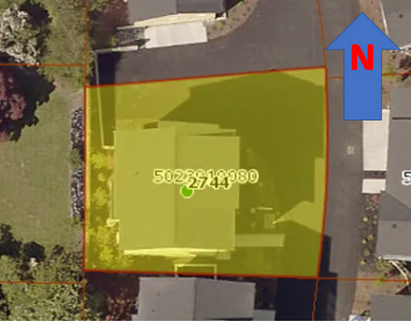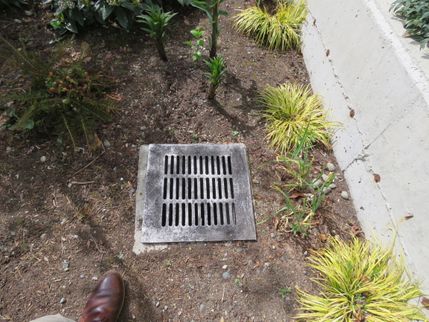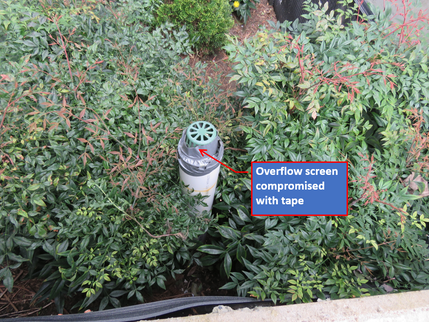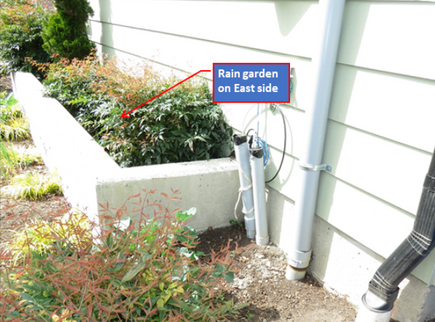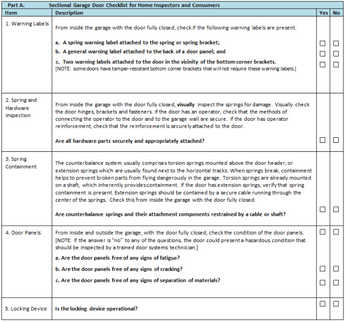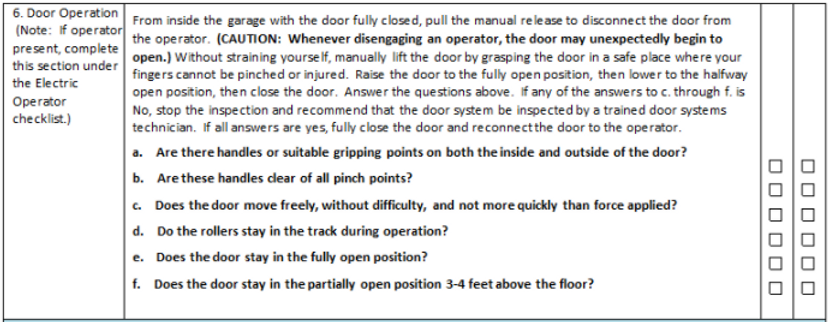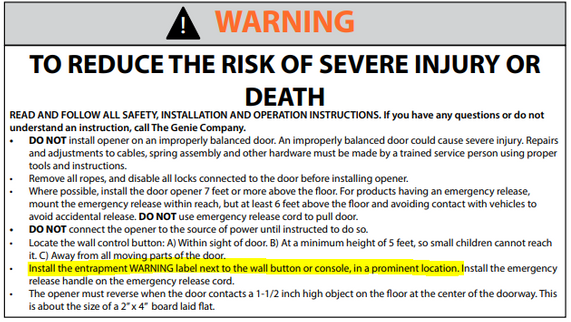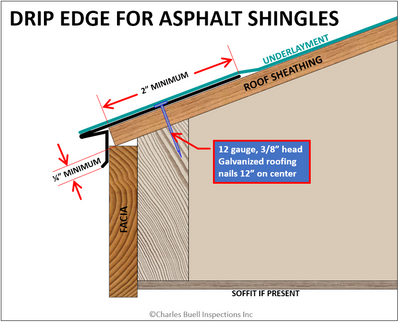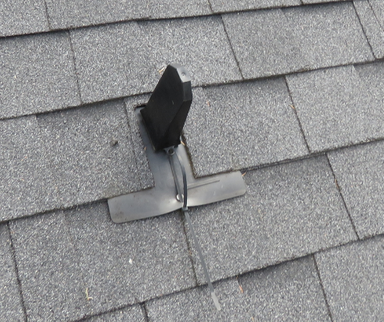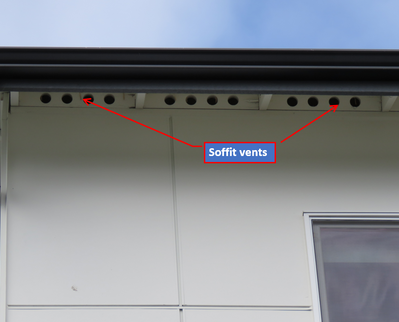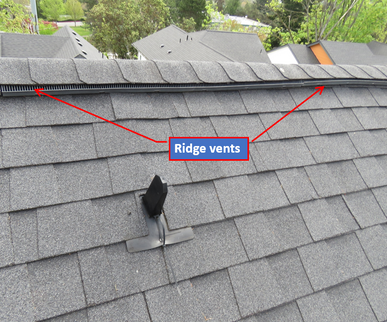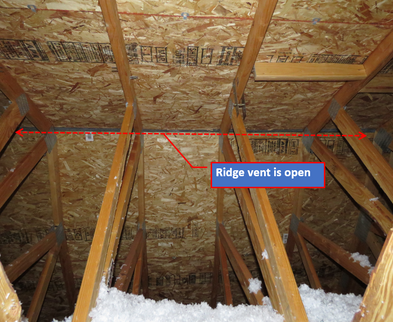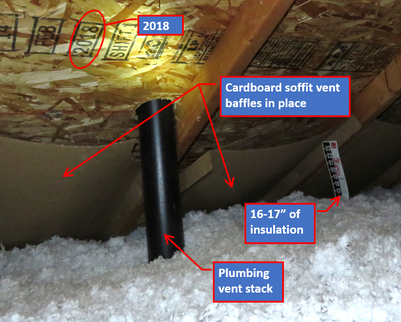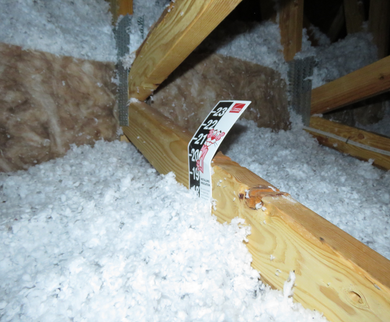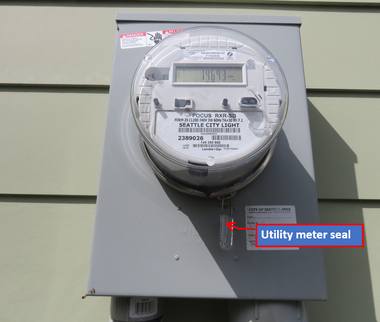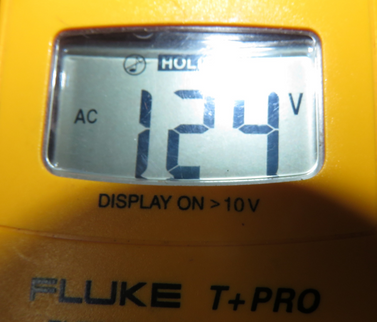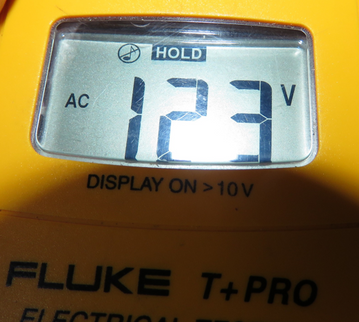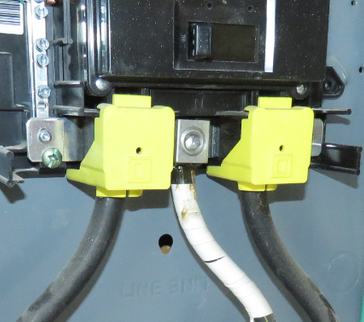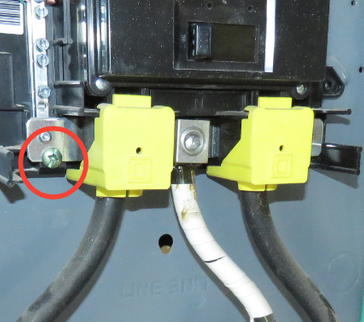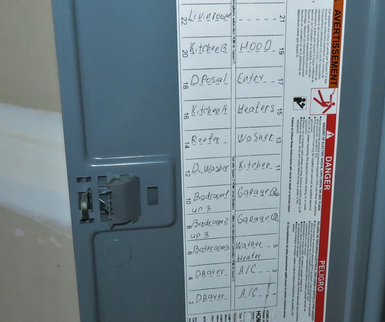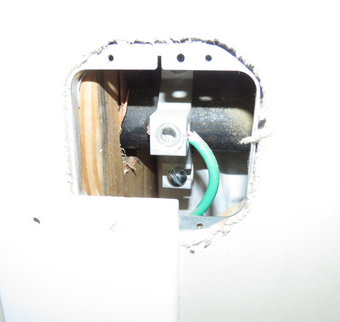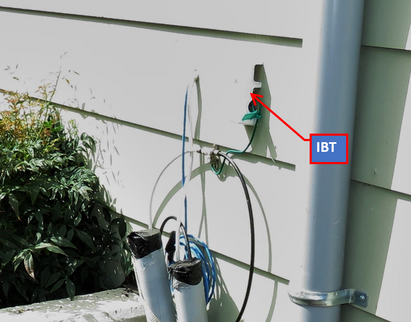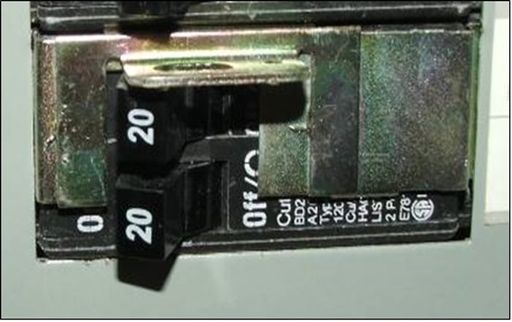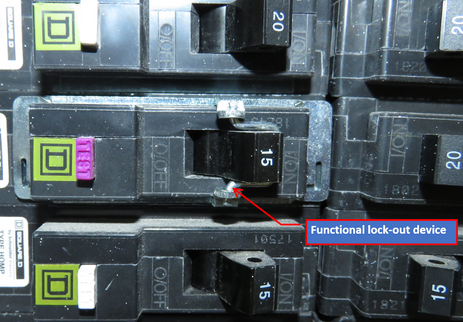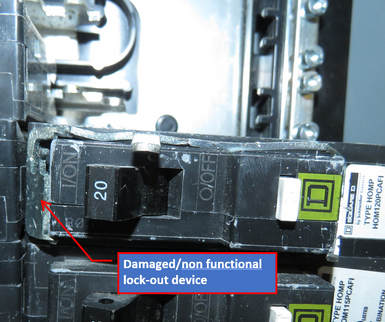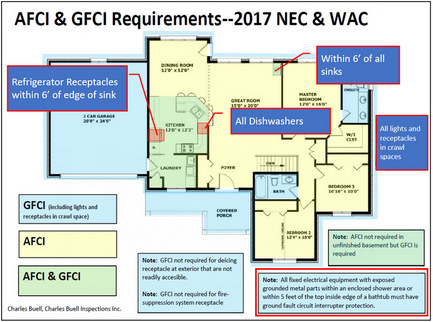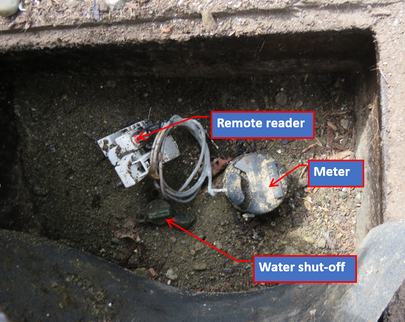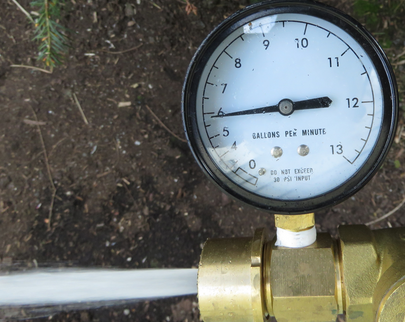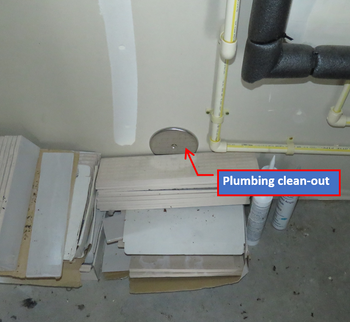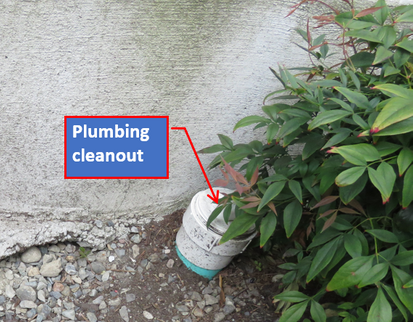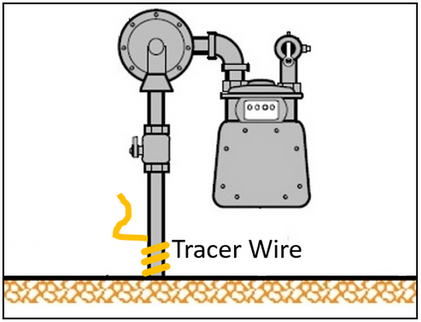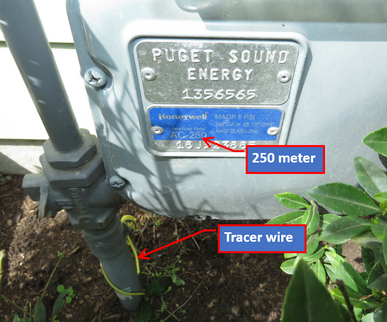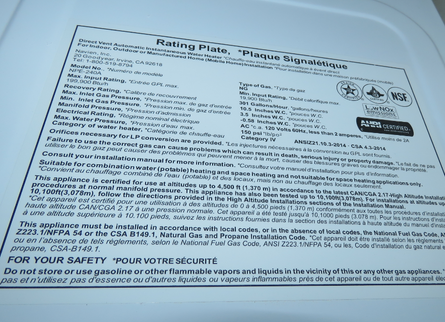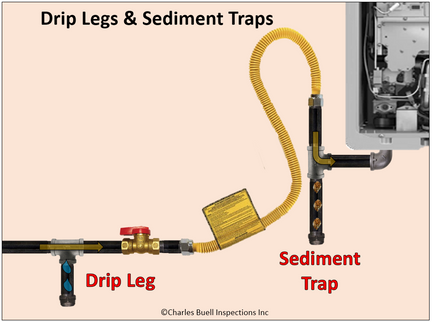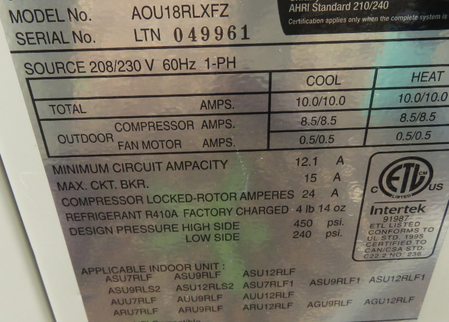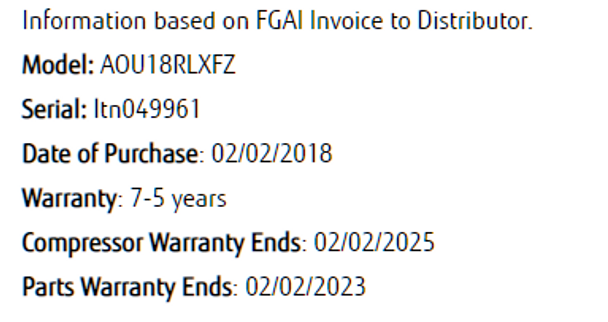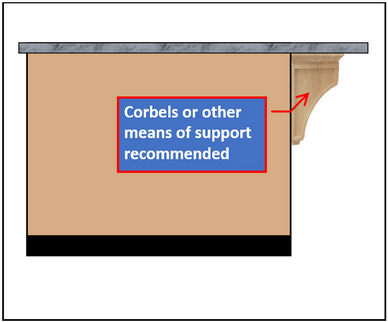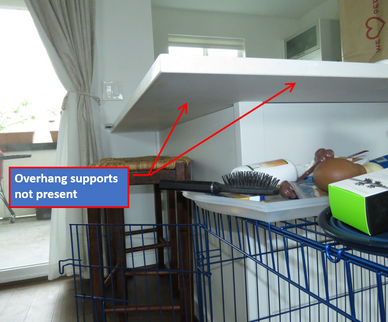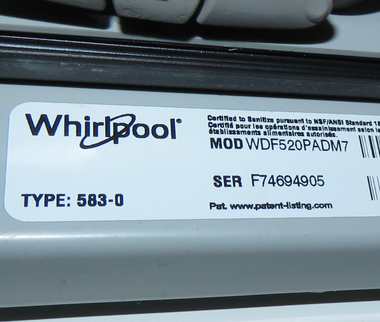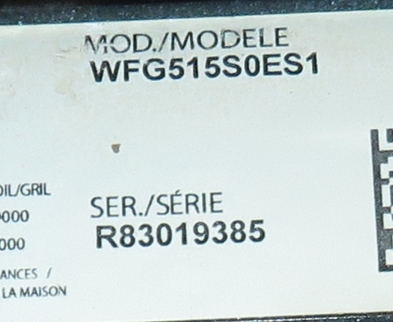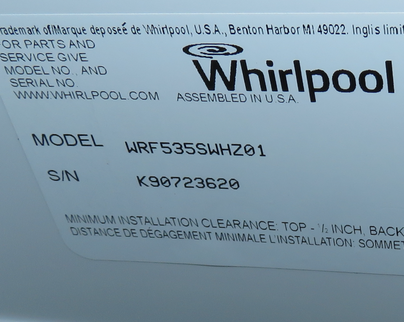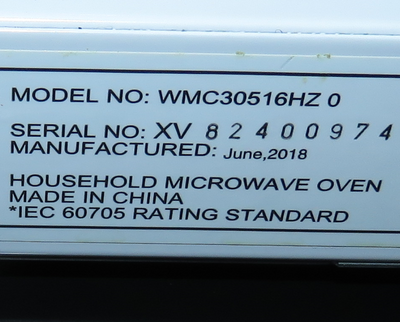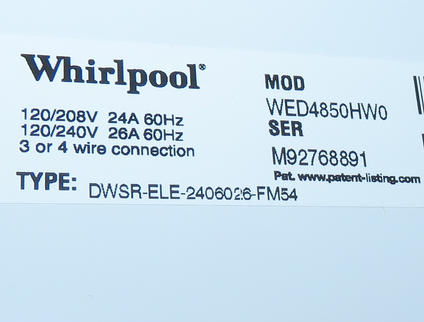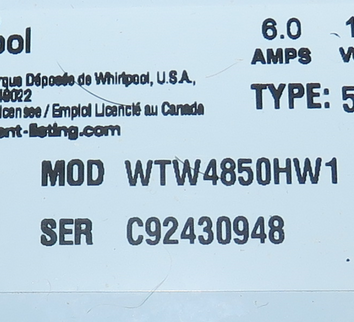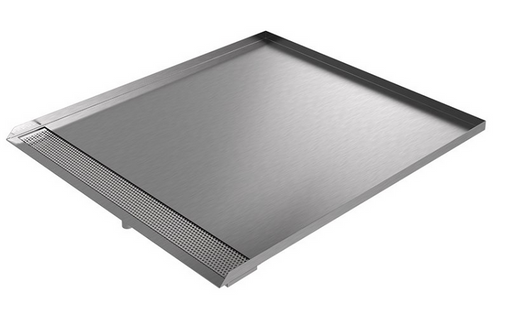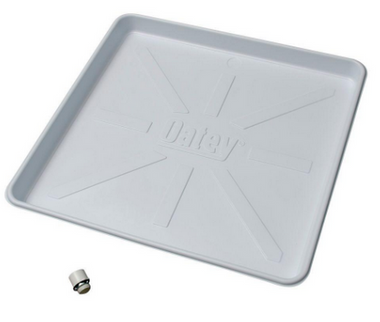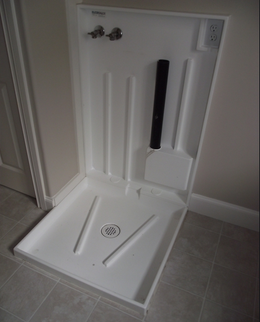The Scope and Purpose of a Home Inspection
Purchasing a property involves risk
💲The purpose of a home inspection is to help reduce the risk associated with the purchase of a structure by providing a professional opinion about the overall condition of the structure. A home inspection is a limited visual inspection and it cannot eliminate this risk. Some homes present more risks than others. We cannot control this, but we try to help educate you about what we don’t know during the inspection process. This is more difficult to convey in a report and one of many reasons why we recommend that you attend the inspection.
These reports are typically created with time constraints. While I do my best to proof them and send them out without errors, some typographical errors and other errors and omissions will occur. I apologize in advance, and if any of these errors result in the report being unclear, confusing or incomplete, please contact me immediately for clarification/correction.
A home inspection is not an insurance policy
This report does not substitute for or serve as a warranty or guarantee of any kind. Home warranties can be purchased separately from insuring firms that provide this service.
A home inspection is visual and not destructive
The descriptions and observations in this report are based on a visual inspection of the structure. We inspect the aspects of the structure that can be viewed without dismantling, damaging or disfiguring the structure and without moving furniture and interior furnishings. Areas that are concealed, hidden or inaccessible to view are not covered by this inspection. Some systems cannot be tested during this inspection as testing risks damaging the building. For example, overflow drains on bathtubs are generally not tested because if they were found to be leaking, they could damage the finishes below. Our procedures involve non-invasive investigation and non-destructive testing which will limit the scope of the inspection.
☢️Environmental/Mold Exclusions
The reported or actual health effects of many potentially harmful, toxic or environmentally hazardous elements that may be found in building materials or in the air, soil, water in and/or around any house are varied, and, in some cases controversial. A home inspection does not include the detection, identification or analysis of any such elements or related concerns such as, but not limited to, mold, allergens, legal/illegal drugs and other biological contaminants, radon, , bed bugs, cockroaches, fleas, lice, formaldehyde, asbestos, lead, electromagnetic fields, carbon monoxide, insecticides, Chinese drywall, refrigerants and fuel oils. Furthermore, no evaluations are performed to determine the effectiveness or appropriateness of any method or system (e.g., water filter, radon mitigation, etc.), designed to prevent or remove any hazardous or unwanted materials or elements. An environmental health specialist should be contacted for evaluation of any potential health or environmental concerns. The noting of the presence of materials commonly considered to contain asbestos, formaldehyde, lead, mold etc in the inspection report, should not be construed to mean the inspector is inspecting for these things but instead should be seen as a "heads-up" regarding these materials and further evaluation by qualified professionals may be warranted.
This is just my opinion and just for you
The contents of this report are for the sole use of the client named above and no other person or party may rely on this report for any reason or purpose whatsoever without the prior written consent of the inspector who authored the report. Any person or party who chooses to rely on this report for any reason or purpose whatsoever without my express written consent does so at their own risk and by doing so waives any claim of error or deficiency in this report.
Construction techniques and standards vary. There is no one way to build a house or install a system in a house. The observations in this report are my opinions based on my training and experience. Other inspectors and contractors are likely to have differing opinions. You are welcome to seek opinions from other professionals in the context of doing your due diligence.
When the definitions of terms used in this report are not obvious through context, refer to the legal definitions used in the modern building standards and/or manufacturer instructions.
The scope of this inspection
The inspection and report are intended to provide the client with information regarding the condition of the systems and components of the property as observed at the time of the inspection. I examine the readily accessible systems and components using normal operating controls. The inspection is not technically exhaustive and will not identify concealed conditions or latent defects. Any comments offered by me that could be construed as over or beyond the standards of practice or the language of this contract, are offered as a professional courtesy. Refer to the Washington State, Standards of Practice and/or Pre-Inspection Agreement for additional information regarding the scope and limitations of the inspection. The Standards of Practice are linked below and describe the "minimum" standards a Licensed Washington State Home Inspector must adhere to: Standards of Practice
All homes are likely to have some faults which may range from cosmetic defects to major safety hazards. Not all defects will be found. While some minor deficiencies may be mentioned, the emphasis of this report is to inform the buyer of the property condition by detecting deficiencies or circumstances that may affect the structural integrity of the building and its components and its safe use as a residence.
You are encouraged to obtain competitive estimates for major repair needs. Safety and health issues should be addressed promptly. It is recommended that all corrective work, other than routine maintenance activities, be performed by qualified licensed contractors.
It is beyond the scope of the Standard Home Inspection to identify components within the home that may have been part of a "manufacturer's recall". Mention of specific recalls within this report must not be construed to mean that all such recalls have been identified, or that such identification is part of a Standard Home Inspection. When possible, appliance Model Numbers and Serial Numbers are included in the report and can be used to check for recall related issues. If you have any question about specific appliances, information can be found at the CPSC (Consumer Products Safety Commission) website or contact the manufacturer directly.
I recommend you obtain as much history as is available concerning this property. This historical information may include copies of any seller's disclosures, previous inspection or engineering reports, reports performed for or by relocation companies, municipal inspection departments, lenders, insurers and appraisers. You should attempt to determine whether repairs, renovation, remodeling, additions or other such activities have taken place at this property, and this report will attempt to identify such items when possible.
Ranges, Dish Washers, and Refrigerators, Microwaves (and the like) are typically tested for basic function (Do they turn on). No assertions are made as to how well they function. Clothes washers/dryers are typically not operated.
Throughout this report, comments will be made as to the presence or absence of components or parts of components. This must not be construed to mean that these components or parts of components exist (or don't exist) in concealed areas or behind finished surfaces. For example: if foundation bolting was seen in one area, it does not mean that the bolting exists (or doesn't exist) in areas that are concealed. Also if an item was noted as "not being visible," that should not be construed to mean that none of whatever was "not visible" does not exist on the premises---it just means none was noted at the time of inspection and should be seen as a "heads-up" that the concern or condition might be present but hidden, or that the conditions that would allow its presence to be known was not replicated at the time of inspection.
Many of the non-narrative observations/documentation detailed in the report that are related to more "cosmetic" issues should not be construed as "all inclusive" but should instead be seen as "suggestive" or a "guideline" of conditions that may exist elsewhere in the home. It is not the focus of the report to comment extensively on cosmetic issues, but I do make note of them at times to help complete the "snap-shot" of the home at the time of inspection. For example, "nail-pops" seen in one room are likely to be seen (and should be anticipated) in other rooms even though I may not have noted them in the report.
Throughout the report I may make recommendations as to possible repairs. These recommendations are not intended to be substitutes or construed to be more appropriate than the recommendations of the professionals making the repairs. Conflicts in recommendations should be resolved prior to repairs being made.
Who should make repairs and what should their qualifications be?
Worker qualifications: In the text of the report, in some instances, I recommend that work be done by a "qualified" persons or "qualified" parties. I consider qualified parties, in licensed trades, to be those individuals who hold the necessary licenses to legally work in their profession -- licensed electricians, licensed pest control applicators, licensed plumbers, licensed HVAC professionals, licensed engineers, licensed general contractors, etc. In instances where a task may not, typically, need to be done by a person with a professional license, my recommendation is to hire an individual to do the work who is, based on past training, experience or expertise, qualified to further evaluate the condition or problem listed in the report and to then make appropriate repairs.
For additional fees, I can perform invasive inspection of concealed areas if desired. Please contact me for more information regarding this service.
💧Moisture meters used
Throughout the report, reference may be made to moisture conditions and percentages of moisture content. These moisture readings are obtained by the use of a Protimeter, Surveymaster Moisture Meter or the Extech MO55 or the Tramex MEP. Generally moisture meters are used "qualitatively" as opposed to "quantitatively." This means that actual percentages shown by meter are meant to be indicative of moisture as compared to likely dryer areas. False positives are not always possible to eliminate entirely, but moisture meters can give good guidance.
🌈Infrared'
I routinely use infrared cameras when helpful but typically only qualitatively, so specific temperatures captured by the camera should not be seen as a quantitative analysis of surfaces but only used as a guide to thermal differences that would then be verified visually, by moisture meter or more invasive investigation.
Your participation is requested
Your presence is requested during this inspection. A written report will not substitute for all the possible information that can be conveyed verbally by a shared visual observation of the conditions of the property. If you were not present during the inspection, you are urged to contact me for a verbal consultation. I am happy to do a zoom meetup to go through areas of concern in the report. If you choose not to be present or contact me after, I cannot be responsible for misinterpretation of the report.
How to Read This Report
Getting the Information to You
This report is designed to deliver important and technical information in a way that is easy for anyone to access and understand. If you are in a hurry, you can take a quick look at our "Summary Page” and quickly get critical information for important decision making. However, we strongly recommend that you take the time to read the full Report, which includes digital photographs, captions, diagrams, descriptions, videos and hot links to additional information.
The best way to get the layers of information that are presented in this report is to read your report online, which will allow you to expand your learning about your house. You will notice some words or series of words highlighted in blue and underlined – clicking on these will provide you with a link to additional information.
For the most reliable viewing experience, I recommend viewing the report on as large a screen as practical, as much detail can be lost on small devices like smart phones. For similar reasons, reports should only be printed in color to retain as much detail as possible and minimize misinterpretation.
This report can also be printed on paper or to a PDF document.
Chapters and Sections
This report is divided into chapters that parcel the home into logical inspection components. Each chapter is broken into sections that relate to a specific system or component of the home. You can navigate between chapters with the click of a button on the left side margin.
Most sections will contain some descriptive information done in black font. Observation narratives, done in colored boxes, will be included if a system or component is found to be significantly deficient in some way or if we wish to provide helpful additional information about the system or the scope of our inspection. If a system or component of the home was deemed to no noteworthy defects or was in some way operational, there may be no narrative comments in that section and it may simply describe the components.
Observation Labels
All narrative observations are colored, numbered and labeled to help you find, refer to, and understand the severity of the observation. Observation colors and labels used in this report are as follows:
- Significant Repair :Significant repairs involves either multiple or singular components that will require considerable expense or replacement.
- Repair:Repair and maintenance items noted during inspection. Please note that some repair items can be expensive to correct such as re-finishing hardwood floors, but are considered simply repair items due to their cosmetic nature.
- Recommended Maintenance:These are repair items that should be considered "routine home ownership items," such as servicing the furnace, cleaning the gutters or changing the air filters in the furnace.
- Due Diligence:Observation such as a buried oil tank that may require further investigation to determine the severity and / or urgency of repair.
- Improve:Observations that are not necessarily defects, but which could be improved for safety, efficiency, or reliability reasons.
- Note:Refers to aside information and /or any comments elaborating on descriptions of systems in the home or limitations to the home inspection.
- Efficiency:Denotes observations that are needed to make the home more energy efficient as well as to bring the home up to modern insulation standards. This category typically includes windows and insulation. Other items, such as lighting and appliances, are not inspected for their energy status.
- Description:Detailed description of various aspects of the property noted during the inspection.
- Monitor:Items that should be watched to see if correction may be needed in the future.
- Future Project:A repair that may be deferred for some time but should be on the radar for repair or replacement in the near future.
Pest Inspection
All items with the bug logo ( ) are part of a structural pest inspection. If your inspector included a structural pest inspection as a part of the scope of your home inspection, you can distinguish pest inspection items by this logo. You can also go to the pest inspection summary page to see a summary of the items that are part of a pest inspection.
Summary Page of Findings
The inspection findings are summarized below. They are listed by importance with substantial safety hazard at the top in red or orange. These can be life safety hazards or issues that could result in a major short-term expense to correct or possible significant expense in the future if not addressed. This summary is not a complete listing of the findings in the report and reflects the opinion of the inspector. It should be considered highly likely there will be other issues you would like in the summary, and you should add these as desired. Please review all of the report pages. All repairs must be done by the applicable qualified, licensed & bonded trades or professionals. I recommend obtaining receipts and warranties for the work done (including copies of any necessary permits).
Many of these Narrative comments in the Summary have pictures and web links that better clarify the issues. Please refer to their place in the report body for additional clarification/information. Lack of information under any given component only means that, in my opinion, there was nothing in the body of the report that warranted posting it to the Summary. There will certainly be valuable information under each applicable component in the body of the report.
Summary
Significant Repair S
- E4-8 💡ELECTRICAL:
CARBON MONOXIDE ALARMS:
The CO Detectors of the home had the following concerns. The pictures and bulleted list below document some of those concerns, but not likely all of them. I recommend evaluation/repairs by the licensed electrical contractor or other qualified parties following manufacturer's instructions.
CO DETECTORS:
- 🚩None seen post 2011. I recommend that homeowner/handy-person install carbon monoxide alarm/detector according to the manufacturers specifications wherever missing. These alarm/detectors are currently required in all homes. They are currently required on each floor level of the home and outside each sleeping area of the home. A plug-in type detector with digital readout is preferred. They are required to be maintained to the manufacturer's instructions by the tenant of the home. Sometimes there are combination smoke/carbon monoxide alarm/detectors in the home (verify with builder). Carbon monoxide alarm/detectors had the following issues and/or were missing outside the sleeping room areas:
- 🔹all sleeping room areas and floor levels
- Present but not where required. One battery type Carbon Monoxide detector was noted in the family room. It is OK to have one here but it does not meet the current standards as to where they are "required" (outside each sleeping area and each floor level)
- CO Alarms not verified
🛑 Safety 🔧 Maintenance 🔨Repair 👁🗨 Monitor monthly ➕ Upgrade 🔍 Due Diligence
Repairs
- G-1 ⛺GROUNDS:
CONDITIONS RELATED TO THE GROUNDS:
There were issues related to the grounds that should be evaluated and repaired as deemed necessary by the appropriate qualified parties.
PONDING/WET AREAS:
- Areas of likely ponding evident depending on natural ability of soils to drain. Improving grading around the home to minimize the flow of surface water toward the foundation is recommended. This is primarily a concern along the west side of the home where the ground has settled creating an opportunity for ponding water against the foundation. Some amount of seasonal ponding can be expected in this area depending on the ability of soils to provide adequate drainage. Repairs should be done by a licensed landscape contractor (it is more complicated that merely adding dirt to the area--a proper drainage plane must be re-created).
GRADING CONCERNS RELATED TO:
- Reverse grade. Improving grading around the home to minimize the flow of surface water toward the foundation is recommended. This is primarily a concern at the north side of the home where the overall slant of the grade is toward the home. Improvements to the grading by a licensed landscaping contractor is recommended. Grade should slope away from the home for at least 10 feet or to whatever distance can be created due to close proximity to adjacent properties or have proper drainage to accommodate surface water that can impact the building:
- 🔹basement involved. This water can impact the foundation and find its way into the basement contributing to the overall moisture burden of the home.
🛑 Safety 🔨Repair 🔧 Maintenance 👁🗨 Monitor 🐞 WDO’s ➕ Upgrade 🔍 Due Diligence
- G-2 ⛺GROUNDS:
PROPERTY DRAINAGE:
Drainage systems around the property need ongoing vigilant maintenance/cleaning. Conditions mostly cannot be determined in the context of an inspection. The following conditions were noted and evaluation/repairs should be made by a qualified party as deemed necessary.
UNDERGROUND PIPES:
- Proper function of underground drainage systems cannot be determined at the time of inspection in new construction. Proper function of underground drains is beyond the scope of this inspection. I recommend that proper function be both determined and maintained. If drains are present and accessible, one method to verify function is to run a hose into them for a prolonged time and see whether water backs up out of the drain. While some can be inspected by remote camera, most sewer scoping companies do not scope these drains.
FOOTING DRAINS:
- Appropriateness of footing drain pipe termination not determined
🛑 Safety 🔨Repair 🔧 Maintenance 👁🗨 Monitor monthly 🐞 WDO’s ➕ Upgrade 🔍 Due Diligence
- G-4 ⛺GROUNDS:
PROPERTY RETAINING WALLS:
All retaining walls require maintenance and monitoring. The retaining wall at the stairwell to the basement has conditions that should be addressed by a qualified party that utilizes the services of a licensed structural engineer when necessary.
THE WALL HAS THE FOLLOWING CONDITIONS:
- No weep holes noted
RAILINGS AND GUARDS:
- missing guard
🛑Safety 🔨Repair 🔧Maintenance 👁🗨Monitor 🐞WDO’s ➕Upgrade 🔍Due Diligence
- BUILDINGEXTERIORSTRUCTURE1-1 🏡BUILDING EXTERIOR & STRUCTURE:
FIBER CEMENT CONCERNS:
Protection of the home from the elements requires ongoing maintenance and sometimes there are enough issues that entire replacement is warranted. The following issues were noted:
FLASHINGS:
- 1/4 inch gaps missing at horizontal flashings
- Penetrations. With cement board siding there are specific requirements related to penetrations of the siding. This includes pipes. There are numerous issues that do not meet modern requirements. Location (under overhangs for example) will dictate how important repairs will be. Sometimes maintenance is all that is necessary. I recommend evaluation/repairs by a qualified party experienced with cement board siding installation requirements at the following locations: outside faucets, etc. There are also other siding details that do not meet cement board installation related to penetrations:
- 🔹missing flashings
- 🔹missing blocks
INTERIOR CONCERNS:
- Evaluation/repairs are warranted. There are areas of the interior of the home that are in need of evaluation and repairs related to issues at the exterior of the home. After satisfactory repairs at the exterior, I recommend all repairs deemed necessary by qualified parties be made.
- 🔹the stains on walls, ceilings, floors at _____
I recommend a full evaluation by a qualified siding contractor to determine what repairs are necessary and to make proper repairs including where appropriate, evaluation/repairs of hidden damage. Some amount of hidden damage should be anticipated. It is also possible other trades may become involved in these repairs as well as relates to mechanical systems of the home that penetrate the exterior cladding. Window elements may also be involved and some amount of repair to window components should be anticipated.
🔧 Maintenance 👁🗨 Monitor 🐞 WDO’s ➕ Upgrade 🔍 Due Diligence
- BUILDINGEXTERIORSTRUCTURE1-3 🏡BUILDING EXTERIOR & STRUCTURE:
FLASHINGS RELATED TO THE EXTERIOR:
I recommend monitoring and repairs later when it becomes necessary or that proper flashings be installed now by a qualified siding contractor to avoid perhaps more costly repairs later. In the context of repainting the home you might want to consider having proper flashings installed. If flashings are not installed it will be necessary to be vigilant about keeping the connections well caulked and sealed to prevent water intrusion. The big drawback to caulking these connections as opposed to proper flashings is that water that finds its way behind the trim where it becomes trapped and promotes hidden decay/rot. These flashings are obviously less critical in areas well protected by overhangs. While a common installation practice with cement board siding it is still not best practice.
WATER INTRUSION:
- Noted at:
- 🔹window heads.
- 🔹Some likely occurred since interior finish work was completed.
- Staining noted at. While there is no way to be certain when this staining occurred, I recommend monitoring these areas for signs of continuing water infiltration and I recommend more invasive investigation if continued leaking is noted. At the window next to the front entryway door there is some staining and cracking of the caulk around the window that is consistent with past or ongoing moisture intrusion. I recommend monitoring this area and if the area outlined in the picture below gets larger or darker, further evaluation will be warranted. It can be helpful to lightly mark the edges of the stain with a pencil to make changes easier to notice. Discuss with the builder/seller to your satisfaction. Nothing was obvious at the exterior as to problems with the installation but most of what keeps water out is not visible on the surface.
🔨Repair 🔧 Maintenance 👁🗨 Monitor annually 🐞 WDO’s ➕ Upgrade 🔍 Due Diligence
- FES-1 Front Entryway Stoop:
ENTRYWAY:
Notes and documentation details about the stoop, will be detailed in the pertinent sections below this narrative. The stoop structure had some issues that should be further evaluated and repaired properly. Concerns were noted in relation to:
HANDRAILS:
- 🔹not present and would make a good improvement. Proper handrails on stairs can promote safe use of the stairs and prevent falls that can result in serious injury or even death. Handrails are required to meet specific guidelines on all stairs with 4 risers or more. In some cases they are prudent on stairs with fewer risers. The handrail is required to be graspable as defined in the building codes. As a safety improvement,
MASONRY:
- Conditions:
- 🔹Undermining. There is some undermining of the front entryway stoop. I recommend the surrounding area be built up to provide proper restraint of the materials under the stoop to stop this erosion.
The following pictures with descriptions are meant to convey the necessity for a full evaluation/repair or possibly even replacement of the structure by a qualified deck installation/repair contractor as deemed necessary.
🛑Safety 🔧Maintenance 👁🗨Monitor 🐞WDO’s ➕Upgrade 🔍Due Diligence
- G7-2 🚘GARAGE:
GARAGE AUTOMATIC OVERHEAD DOOR OPENER:
The automatic opener had the following concerns that should be addressed.
CONDITIONS:
- Push button too low. Newer requirements for garage door opener buttons require that they be located a minimum of 60" above the walking surface and that warning labels regarding the use of overhead doors be located near the push buttons. As a safety upgrade I recommend that the qualified garage door installation company make these repairs when they are at the premises for other reasons or that homeowner/handy-person raise the opener control and get the warning label from a garage door installation company and install it.
- 🚩Door did not reverse properly. The garage door auto reverse mechanism did not reverse at the time of inspection at the at the Floor-Level test. All garage door opening devices should have a safety feature which automatically reverses the door if it strikes something while closing within 2" of the floor, and when the Safety Beam is broken. This feature reduces the risk of liability, damage, injury, and possible death to a child or pet. Garage door openers equipped with this feature usually have a sensitivity adjustment. It is often set incorrectly or in need of adjustment.
- Keypad combination not determined. There is a key pad to open and close the door on the jamb at the exterior of the door. The combination was not determined at the time of inspection and it is good practice to change the combination even if the combination is known. I recommend asking the seller for the combination and then follow directions in the owner's manual as to how to alter the code.
- Remote control not found. The remote control devices for the door were not located. I recommend asking the seller for the remotes.
- Manual lock not disabled/removed. When garage doors have automatic opening devices, the Manual Lock Mechanism should be disabled/removed. This represents a serious safety issue as the opener can tear away from its attachments or force the door out of its tracks causing injury and damage to persons and property.
- Spring label missing. A warning label is required on the spring assembly of overhead doors. There is no warning label present on this opener and in the context of other repairs/improvements of the door, a proper warning label should be installed. Being a new door, this should be brought to the attention of the builder for proper repairs.
- General warning label missing. A general warning label is required to be located on one of the of overhead door panels. This provides information about the door and its operation. There is no warning label present and I recommend bringing this to the attention of the builder/seller for proper repairs.
- Safety beams too high. To prevent injury to children and pets the safety beams for garage doors should be located between 4-6" of the floor. The safety beams on this door are too high.
I recommend evaluation/repairs by a qualified overhead door installation company or other qualified party.
🛑Safety 🔧Maintenance 🔍Due Diligence
- R5-1 ROOF:
DIMENSIONAL SHINGLE CONDITIONS:
The roof surface had the following concerns that should be evaluated and repaired by a qualified roofing contractor as deemed necessary. The pictures below document some of the concerns related to this roof and should not be construed to mean there are no other conditions that need to be addressed. Hidden damage is common with roofs. I recommend factoring replacement of the roof within 3 years.
GENERAL CONDITIONS:
- Conditions:
- 🔹mechanical damage
- 🔹evidence of repairs/patching
- 🔹evidence of roof jacks being attached through shingles instead of under the shingles
- 🔹evidence of siding pump-jacks being attached through shingles instead of under the shingles
🛑 Safety 🔨Repair 🔧 Maintenance ➕ Upgrade 👁🗨 Monitor annually 🔍 Due Diligence 🐞 WDO’s
- R5-2 ROOF:
ATTIC ROOF STRUCTURE:
The roof and attic components had the following conditions that should be evaluated and repaired as deemed necessary by a qualified party.
INSULATION/WEATHER-STRIPPING:
- Protective paper still present on weather-stripping. The original paper separation paper that prevents the roll from sticking together was never removed.
🔨Repair 🔧Maintenance 🐞WDO’s 🌲Efficiency/IAQ 🔍Due Diligence
- R5-3 ROOF:
ROOF DRAINAGE:
The roof drainage system was in need of maintenance by a qualified gutter installation contractor or other qualified party. Failed gutters can cause damage to the home and not direct water properly away from the home. I recommend evaluation/repairs/replacement by a qualified roof drainage/gutter contractor. Care should be taken related to maintenance of gutters as they represent a safety hazard for falls and other injuries.
GUTTERS:
- Gutter conditions:
- 🔹Debris noted in gutters
🛑Safety 🐞WDO’s ➕Upgrade 🔍Due Diligence
- E4-1 💡ELECTRICAL:
ELECTRICAL SERVICE:
The electrical service has the following conditions that should be evaluated and repaired as deemed necessary by a licensed electrical contractor.
PANEL CONDITION:
- Conduit from meter base not sealed New Construction. Where the service entrance wires run into the panel in conduit, the conduit has not been properly sealed. This can allow for moisture, vermin and considerable air infiltration. When air can move into the panel it allows air movement into the building that can reduce energy efficiency.
- 🔹soil-gas infiltration from an underground feed.
- 🟪NEC 230.8 Raceway Seal. Where a raceway enters from an underground system, the end within the building shall be sealed with an identified compound so as to prevent the entrance of moisture or gases.
- 🟪NEC 300.7 Raceways exposed to different temperatures. Where portions of a raceway or sleeve are known to be subjected to different temperatures, and where condensation is known to be a problem, as in cold storage areas of buildings or where passing from the interior to the exterior of a building, the raceway or sleeve shall be filled with an approved material to prevent the circulation of warm air to a colder section of the raceway or sleeve.
- Panel not accessible. Minimum clearances of 30" wide and 36" deep in front of the panel, and from the floor to a height of 6'-6" above the floor is required is required. I recommend that proper clearances be maintained. Proper access should be maintained for both servicing and access during an emergency or to reset tripped breakers.
- 🔹storage should be kept clear of the area
🛑 Safety 🔨Repair 🔧 Maintenance 👁🗨 Monitor 👁🗨 Monitor monthly ➕ Upgrade 🔍 Due Diligence 🌲 Efficiency / IAQ
- E4-2 💡ELECTRICAL:
GROUNDING AND BONDING CONDITIONS:
The bonding of metallic systems of a building is important for electrical safety to keep grounded metal components at the same potential. I recommend all aspects of the bonding system be evaluated and repaired as deemed necessary by the licensed electrical contractor. The items below, should be seen as a guide and not necessarily all inclusive but more representative.
GAS PIPE BONDING:
- Cover plate screws stripped. The cover plate for the gas pipe bond at the location above the freezer has two damaged screws. I recommend evaluation/repairs by the licensed electrical contractor or other qualified party. the screw holes can be re-tapped to allow for new screws to tighten properly.
🛑 Safety 🔨Repair 🔧 Maintenance 👁🗨 Monitor ➕ Upgrade 🔍 Due Diligence
- E4-4 💡ELECTRICAL:
DISTRIBUTION WIRING:
The following concerns related to the distribution wiring in the home was noted and should be evaluated and repaired as deemed necessary by the licensed electrical contractor.
GENERAL CONCERNS:
- Conduit of unknown purpose. At the walkway to the front entryway there are several conduits sticking out of the ground with pull ropes of unknown purpose. I recommend asking the builder/seller if these need to remain if so, what is their future purpose and can they be buried in an enclosure?
🛑 Safety 🔧 Maintenance 🔨Repair 👁🗨 Monitor annually ➕ Upgrade 🔍 Due Diligence
- E4-5 💡ELECTRICAL:
DISTRIBUTION WIRING TYPES:
The wiring in the building has the issues below that should be evaluated and repaired as deemed necessary by a licensed electrical contractor. It should be seen as representative of the concerns and not all inclusive.
LIQUID-TIGHT FLEXIBLE METAL CONDUIT (LFMC)
- Not connected properly
- Improper connector
🛑 Safety 🔨Repair 🔧 Maintenance 👁🗨 Monitor ➕ Upgrade 🔍 Due Diligence
- E4-6 💡ELECTRICAL:
BUILDING LIGHTING:
There were numerous problems with lighting components in the home including: missing bulbs.
SWITCHES:
- Switch conditions:
- 🔹switches of unknown purpose at the east end of the kitchen next to the refrigerator Ask seller what this switch is for as desired.
EXTERIOR LIGHTS:
- Damaged fixture. At the north side of the home there is a damaged light fixture at the overhead door (east side). The bulb appears to be integral with the fixture and likely the entire fixture will need to be replaced. If matching the other side is not possible you may want to change both of them.
While the pictures below document some of these concerns, I recommend all lighting locations be checked and repaired as deemed necessary by a licensed electrical contractor.
🛑 Safety 🔧 Maintenance ➕ Upgrade 🔍 Due Diligence
- E4-7 💡ELECTRICAL:
GARAGE GFCI CONDITIONS:
The garage GFCI's had the following concerns. The pictures and bulleted list below document some of those concerns, but not likely all of them. I recommend evaluation/repairs by the licensed electrical contractor in the context of other electrical repairs at the home
GARAGE GFCI:
- GFCI protection not verified.
- Some Garage Receptacles that were tested, tested as NOT GFCI protected. Current requirements call for ALL 120 volt 15 amp and 20 amp receptacles in the garage be GFCI protected. Upgrading to current standards is recommended for improved safety. Some of the Garage receptacles are not GFCI protected at the following locations:
- 🔹near on demand water heater
🛑 Safety 🔨Repair 🔧 Maintenance 👁🗨 Monitor monthly ➕ Upgrade 🔍 Due Diligence
- PLUMBING5-1 🚿PLUMBING:
GAS METER CONDITIONS:
The gas meter and its regulator is located too close to the building components discussed below. The regulator vent can possibly be extended away from the meter to achieve proper clearances. Improper termination of the meter vent can result in the build-up of explosive gases resulting in a safety hazard. I recommend evaluation/repairs as deemed necessary by the gas utility.
GENERAL METER CONCERNS:
- Access to meter. All gas meters require a minimum of 2' to either side, and 3' in front for proper access, servicing and proper function of the meter. Meter access is compromised by:
- 🔹2' clearance to either side not present
- 🔹3' clearance in front of meter not present
- 🔹Vegetation encroaching on meter space
🛑 Safety 🔧 Maintenance 👁🗨 Monitor 🔍 Due Diligence
- PLUMBING5-2 🚿PLUMBING:
GAS TANKLESS WATER HEATER:
The water heater has the conditions discussed below that should be further evaluated and repaired as deemed necessary by a licensed plumber (or in some cases, repairs can be made by other qualified parties:
INSTALLATION INSTRUCTIONS:
- Instructions. Newer installations of water heaters require the installation and maintenance instructions to be located at the furnace. None were noted at the time of inspection and they can typically be found on line by searching the model number of the unit:
- 🔹not present
DRIP LEGS/SEDIMENT TRAPS:
- None present. Many appliances require sediment traps located as close to the appliance as practical. None is present on this appliance and I recommend evaluation/repairs as deemed necessary by a licensed plumber in the context of other plumbing repairs at the home.
DRAIN:
- Too many bends, more than 4, 90º elbows. Typically a maximum of 4, 90 degree bends are allowed in the drain of the TPRV of the water heater per TPRV manufacturer and water heater installation instructions. There are currently at least 6. Unless a way of terminating the drain to the exterior can be achieved with four or less elbows I recommend that it be properly terminated elsewhere. I recommend evaluation/repairs by a licensed plumber.
- Threaded plastic adapter at PRV. It was also noted the PRV drain has a plastic threaded adapter at the attachment to the valve. This is not allowed per the manufacturer of the CPVC type pipe.
WATER TEMPERATURE:
- Water temperature too hot. At 125°-126°±F, the water temperature is considered too high. I recommend lowering the water temperature to 120 degrees as required for safety. State of Washington Home Inspector Standards of Practice require me to note that the recommended safe water temperature is under 120 degrees F.
THERMAL EXPANSION DEVICE:
- Inadequately supported. The expansion tank is not properly supported. Full of water, these tanks become quite heavy and damage to the pipe connections can occur when the tank is not supported well and leaking or flooding can result.
- Tank not pressurized. The expansion tank tested as being under NO pressure. Pressure in the tank, for the tank to be functional, should be set to the house water pressure. I recommend evaluation/repairs by a licensed plumber---it may need to be replaced. The tank also should not be supported by the valve stem.
🛑 SAFETY 🔨Repair 🔧 Maintenance 👁🗨 Monitor monthly 🐞 WDO’s ➕ Upgrade 🌲 Efficiency / IAQ 🔍 Due Diligence
- PLUMBING5-3 🚿PLUMBING:
FIRE SUPPRESSION:
While Fire Suppression concerns are generally excluded from inspections some components will be reported on as a courtesy.
🔥FIRE EXTINGUISHER:
- 🔥None seen. A proper fire extinguisher should be provided for the home where recommended and maintained properly.
🛑 Safety 🔨Repair 🔧 Maintenance 👁🗨 Monitor 🔍 Due Diligence
- HEATINGCOOLING-1 🔥HEATING / ❄️COOLING:
MINI-SPLIT HVAC SYSTEM:
The following concerns were noted related to the HVAC system and the system should be evaluated and repaired as deemed necessary by a licensed HVAC contractor.
WIRING/FUSES/BREAKERS:
- Fuses oversized. The data plate on the AC/HP unit states the maximum circuit fuse size is to be no more than 15 amps. The fuses in the disconnect are 20 amp fuses. Oversized fuses can result in damage to the appliance but is generally not an issue as long as the breaker in the electrical panel is properly sized at 15 amps. However because the breaker is also 20 amps this should be repaired by a licensed electrical contractor.
UNIT CONDITIONS:
- General unit conditions:
- 🔹unit tilted too much
CONDENSATE DRAIN:
- Down elbow missing
Servicing of Unit:
- Unit should be serviced: The air conditioner/heat pump system was not tested during the inspection. I recommend a full inspection and servicing of all AC/Heat Pump components. Consult with HVAC contractor as to life expectancy. Units that are not serviced regularly or properly lose efficiency. This list is the minimum requirements to be expected of Air Conditioner and/or Heat Pump servicing:
- Check compressor efficiency.
- Check refrigerant level.
- Clean condenser coil.
- Clean condensate pan and trap.
- Change filters.
- Inspect contactors and wiring.
- Inspect drive-sheaves, pulleys, and belts as warranted.
- Check and adjust for proper air-flow.
- Lubricate all motors and shaft bearings as warranted.
- Check, calibrate, and program thermostat.
- Check unit smoke detector, clean filter if applicable
- Check safety disconnect, laser-temp---check across contacts.
- It was also noted the unit has an ANSI date of 1995. These dates typically change on a 4-6 year cycle meaning the unit was likely manufactured prior to 2002. The purchase date was 2018 and I cannot account for this discrepancy. Discuss with builder/seller to your satisfaction.
🛑 Safety 🔨Repair 🔧 Maintenance 👁🗨 Monitor monthly ➕ Upgrade 🌲 Efficiency / IAQ 🔍 Due Diligence
- HEATINGCOOLING-2 🔥HEATING / ❄️COOLING:
AIR EXCHANGE SYSTEM:
The concerns below should be evaluated and repaired by a qualified party.
ENERGY EFFICIENCY DOCUMENTS:
- Energy information sticker not present post 2012. The required (mandatory) energy information sticker is not present at the electrical panel. This informational sticker has been required since 2012. I recommend bringing this to the attention of the builder for proper completion. This Information Sticker records the results of the "required" blower door test as well as other energy features of the home. It is not likely that the house certificate of occupancy can be granted until this form is complete---or approval was inadvertent.
LAUNDRY FAN:
- Air intake at individual window vents--multiple story house. Window inlets for whole house ventilation can be problematic on two story homes as pressure differentials and stack effect in homes can result in a continuous drafting of air in the lower level inlets and out the upper level inlets. Most of the year these vents can be left open in our climate in the summer. In the Winter it can be counter-productive to leave the upper window vents open because of a convective effect between the upper and lower windows. Installation of one way barometric type air intakes can eliminate this problem. A solution to this problem is difficult to both meet the requirements of installation (providing fresh air to habitable rooms) and preventing unnecessary ventilation beyond recommended levels. It is my opinion, and not backed up by hard science, that it is better to leave the upper level vents closed and open the lower level vents if barometric type air intakes are not to be installed.
🛑 Safety 🔨Repair 🔧 Maintenance 👁🗨 Monitor monthly ➕ Upgrade 🌲 Efficiency / IAQ 🔍 Due Diligence
- EXTERIORDOORS-1 🚪EXTERIOR DOORS:
FRONT EXTERIOR DOOR:
The exterior doors of the home have the concerns discussed below. All should be evaluated and repaired as deemed necessary by a qualified door installation contractor or other qualified party. Concerns will be documented in the pictures below but should not be construed to be all inclusive but instead more representative:
JAMB/OPENING/THRESHOLD:
- Trim/Jamb conditions:
- 🔹not painted
HINGES:
- Hinge conditions:
- 🔹hinge pins out of place. Loose or missing hinge pins can cause damage to the hinges and create binding of the door.
DOOR STOPS:
- Conditions:
- 🔹hinge type stops on some doors
🛑Safety 🔨Repair 🔧Maintenance 👁🗨Monitor 🐞WDO’s ➕Upgrade 🌲Efficiency/IAQ 🔍Due Diligence
- ID-1 Interior Doors:
INTERIOR DOORS:
Many of the interior doors show minimal wear-and-tear associated with the age and use of the home. I recommend factoring replacement of the doors as desired in the context of overall remodeling plans. Adjustments/repairs/maintenance should be anticipated for the doors. I recommend repairs by a qualified party as warranted. There were issues with:
INTERIOR DOORS:
- Conditions:
- 🔹hanger racks present at some locations. These types of racks can cause damage to the door/jamb and prevent proper latching or unlatching of the door.
HAND-SET/LATCHING:
- Conditions:
- 🔹less than fully functional--don't latch--repair/replace as desired
- 🔹not properly attached
STOPS:
- Conditions:
- 🔹hinge-type damaging doors
🛑 Safety 🔨Repair 🔧 Maintenance ➕ Upgrade 🔍 Due Diligence
- MNSR-1 🛌Main NE Sleeping Room:
FLOOR CONDITIONS:
The following conditions were noted related to the carpeted floors:
CARPET FLOORING:
- Conditions:
- 🔹furniture "dents"
- 🔹wrinkles
- 🔹stains
- 🔹stains/wear present on carpet (consistent with age of carpet)
I recommend evaluation/repairs by a qualified party as desired.
🔧Maintenance 👁🗨Monitor ➕Upgrade 🔍Due Diligence
- F7-1 🔥Fireplaces:
FIREPLACES:
The gas fireplace had the following conditions that should be evaluated and repaired as deemed necessary by a qualified fireplace installation contractor:
FUNCTION:
- Unit not operated at time of inspection. The gas fireplace was not operated at the time of inspection due to the gas being shut off at the unit. I recommend demonstration of proper operation to your satisfaction by the seller and that keys to the shut-offs be provided
GLASS CONDITION:
- Condensate present on glass surface. One of the by-products of combustion in a gas fireplace is water. When initially starting the gas fireplace it is normal for a small amount of moisture to condense on the glass. This "fogging" of the glass usually disappears once the fireplace is warmed up. Over time this condensation leaves a white film on the glass that does not go away. This condensate should be removed with a Fireplace Glass Polish. Over time this condensate can cover all of the glass and permanently disfigure the glass making polishing difficult if not impossible. Regular maintenance of the glass will be necessary to keep the glass clear. (Rutland, "White Off" is one brand available and Stove & Hearth stores)
DOORS/OPERATING CONTROLS:
- Wall switch control to run fan--fan not installed
🛑 SAFETY 🔨Repair 🔧 Maintenance 👁🗨 Monitor monthly ➕ Upgrade 🌲 Efficiency / IAQ 🔍 Due Diligence
- K2-1 🥧Kitchen:
KITCHEN RANGE:
The range had the following:
CONCERNS:
- Anti-Tipping Device:
- 🔹not checked
I recommend evaluation/repairs by a qualified party.
🛑 Safety 🔧 Maintenance 🔍 Due Diligence
- MB-1 🛀Main Bathroom:
BATHROOM SINKS/COUNTERTOPS:
The sink has some concerns listed below.
DRAINAGE:
- Trap conditions:
- 🔹overflow odors. While draining and running water in the sink, odors associated with mold were noted at the sink overflows. This is not uncommon with sink overflows and sanitizing/cleaning the overflows is recommended. Here is an easy cleaning solution.
I recommend evaluation/repairs by a qualified party.
🛑Safety 🔧Maintenance 🐞WDO’s ➕Upgrade 🔍Due Diligence
- MB-2 🛀Main Bathroom:
BATHROOM SHOWER:
The shower in the main bathroom has the following concerns:
SHOWER:
- Installation:
- 🔹moisture in floor/shower connection as indicated by moisture meter
WALLS AROUND SHOWER:
- 🚩Caulk noted at tile wall/shower base connection. The grout around the bottom of the tiles where they connect with the shower in the _____ bathroom have been caulked over. Caulking this connection can result in trapping of moisture behind the tiles/caulk resulting in mold growth behind the caulk. This connection should either be grouted only or per current best practice recommendations should be filled with sanded caulk.
I recommend evaluation/repairs/replacement as deemed necessary by a licensed plumber or other qualified party.
🛑 Safety 🔨Repair 🔧 Maintenance ➕ Upgrade 🔍 Due Diligence
- 3FHB-1 🛀3rd Floor Hallway Bathroom:
BATHTUB/SHOWER:
The tub in the upper hallway bathroom has some concerns:
FAUCET COMPONENTS:
- Conditions:
- 🔹fill spout drips continually
I recommend evaluation/repairs/replacement as deemed necessary by a licensed plumber.
🛑 Safety 🔨Repair ➕ Upgrade 🔍 Due Diligence
- 2F1B-1 🛀2nd Floor 1/2 Bath:
BATHROOM WALL/CEILING CONDITIONS:
The walls show cosmetic concerns typical of a home of its age and type of construction. No further recommendation--repair/replace/maintain as desired.
CEILING CONCERNS:
- Conditions:
- 🔹unevenness
- 🔹painting touch-up/discoloration
- 🔹"ghosting" indicated by thermography
- Past/present water damage/staining evident
I was informed that there had been leaking a couple of years ago at the upper level tub that came through the ceiling of the bathroom below. The picture you provided with the exploratory hole at the leak location appears to match exactly an area of thermal anomaly at the time of inspection. This area tested normal for moisture by moisture meter and is apparently the result of material density and the ability of the patch to be cooler than the surrounding area or possibly even patched with some type of metallic patch material. The area should be monitored and if any staining or swelling is noted, further evaluation may be warranted.
🔧 Maintenance ➕ Upgrade 🔍 Due Diligence
- 2F1B-2 🛀2nd Floor 1/2 Bath:
BATHROOM TOILET:
The toilet in the 1/2 bath had concerns that should be evaluated and repaired as deemed necessary by a licensed plumber or other qualified party.
BOWL:
- Evidence of past/present leaking in floor around the toilet. There was indications of moisture in the floor around the base of the toilet as indicated by moisture meter. Moisture in floors at this location is common due to failed wax seals. The area should be thoroughly cleaned to eliminate the possibility of a "false positive" and I should be called back to check after cleaning. If moisture is still indicated after cleaning I recommend the toilet be removed and checked for leaks and then repaired by a licensed plumber.
🛑Safety 🔧Maintenance 👁🗨Monitor 🐞WDO’s 🔍Due Diligence
- L1-1 🧺Laundry:
DRYER CONDITIONS:
The dryer had the following concerns that should be addressed by a qualified party.
TRANSITION DUCT:
- Corrugated metal duct
- Piping damaged
VENT TERMINATION:
- 🚩Louver type cap. The louver type vent cap at the exterior are problematic in that the heat from the dryer tends to deform the louvers so that they don't open properly. Replacement of this type of cap with a type with a single flap is recommended. There is a type of flat metal vent cap that performs much better than the plastic louver type caps.
🛑 SAFETY 🔨Repair 🔧 Maintenance 👁🗨 Monitor monthly ➕ Upgrade 🌲 Efficiency / IAQ 🔍 Due Diligence
Recommended Maintenance Items
- G-3 ⛺GROUNDS:
VEGETATION AFFECTING THE HOME:
There was vegetation at the east side of the home that was too close to the home. All vegetation should be maintained away from the home at least 12 inches. Vegetation too close to the home can create a pathway to the home for moisture, insects and vermin. Inspection of some components of the home was limited by the proximity of vegetation to the home and further evaluation may be warranted when the vegetation is cleared away and some amount of damage should be anticipated.
NOTED CONDITIONS:
- Vegetation too close to the building
🛑Safety 🔨Repair 🔧Maintenance 👁🗨Monitor 🐞WDO’s ➕Upgrade 🔍Due Diligence
- BUILDINGEXTERIORSTRUCTURE1-2 🏡BUILDING EXTERIOR & STRUCTURE:
TRIM/EAVES/SOFFITS:
Some of the upper level overhanging structures have vents into the insulated spaces they cover. This can allow the circulation of air into the home and create colder floors than if they were un-vented. I think these vents should be sealed but there are ways the floor could be insulated (spray foam for example) that would make the vents less problematic. I recommend discussing this with the builder/seller to your satisfaction..
GENERAL CONDITIONS:
- Vents present in insulated soffits new construction. This can allow the circulation of air into the home and create colder floors than if they were un-vented. I think these vents should be sealed but there are ways the floor could be insulated (spray foam for example) that would make the vents less problematic.
🔧 Maintenance 👁🗨 Monitor 🐞 WDO’s ➕ Upgrade 🔍 Due Diligence
Due Diligences
- G7-1 🚘GARAGE:
GARAGE INTERIORS:
The garage floor had the following somewhat typical concerns.
GARAGE FLOOR CONDITIONS:
- some cracks. The cracks should be monitored on an annual basis and if there is evidence of them worsening, further valuation by a qualified party is recommended.
🔧Maintenance 👁🗨Monitor yearly 🔍Due Diligence
📚PORTAL to the WHOLE REPORT
Reading the Observations in This Report
The Observations (Narratives) are the Story about the Structure. Sometimes these narratives can benefit from additional qualifiers to better inform the reader. Below, is a list of the additional qualifiers used in this report.
Other Modifiers: in the report, only the applicable icons and bold text will be attached to the narratives for efficiency
🛑 Safety: The issue being reported on has relevant safety concerns that may or may not be the primary focus of the narrative.
🔨 Repair: Some amount of repairs will be necessary along with other considerations.
🔧 Maintenance: The issue being reported on has relevant maintenance aspects that are not the primary focus of the narrative.
👁🗨 Monitor: The issue being reported on warrants monitoring in a specified time-frame even while not being the primary focus of the narrative.
🐞 WDO's: While perhaps not the primary focus of the narrative, there are conditions conducive to Wood Destroying Organisms.
➕ Upgrade: While not the primary focus of the narrative, upgrading may be something that could be done to repair/improve/replace the issue.
🌲 Energy Efficiency and/or IAQ: While not the primary focus of this narrative, there are energy efficiency and/or indoor air quality aspects to it.
🔍 Due Diligence: Reasonable steps should be taken such that you are fully informed, confident and satisfied with your knowledge of the issue.
📝 Informational note: General information that typically requires no action.
👜 The gunnysack: The "gunnysack" is a tool used in the report to consolidate issues into single narratives in order to simplify the report, especially as related to components with a considerable number of issues.
General Property Info
Building Characteristics / Inspection Conditions
Type of Building: Single Family (3-story) above slab foundation
Approximate Square Footage: according to listing information, but not verified/measured, 1780
Approximate Year of Construction: 2018
🕔Inspection Start Time: 10:45 am
Finish Time: 2:45 pm
Total Time: 4 hours
👨👦👦 Those present at the property at the time of Inspection: Buyer/Client
Occupancy: Occupied, nobody home
🎥Surveillance Cameras & Security System noted: Not determine, none seen
Animals/Pets: past evidence noted (floor scratches), away at time of inspection
Weather during the inspection: ☀️Clear
🌡️Approximate temperature during the inspection: 60° F ± 5°
Ground/Soil surface conditions: Dry
Days since last significant precipitation: Weeks prior to inspection
Setting the Stage
Building Characteristics / Conditions
Suggested Repairs and Re-inspections: General Recommendations
When repairs are made on the home, I recommend that I be called back to verify that corrections have been satisfactorily made. A minimum assessment of 💲250.00 will be charged for each Work Order Evaluation Inspection that is requested and performed. Additional charges will accrue for anything in writing, beyond an email response, and for evaluations at more than 20 miles travel time--these costs to be agreed upon at the time of the request for further evaluation. REMEDIAL WORK – For any element or condition requiring attention, quotes should be obtained prior to closing from qualified specialists or contractors to determine actual repair/replacement costs. Any cost estimates provided, whether oral or written, represent only an approximation of possible costs. Also, any cost estimates do not reflect all possible remedial needs or costs for the property; latent concerns or consequential damage may exist. If the need for remedial work develops or is uncovered after the inspection, contact Charles Buell Inspections, Inc. to arrange an inspection to assess conditions prior to performing any repairs.
- IF THERE ARE ITEMS WITHIN THIS REPORT THAT REQUIRE RE-INSPECTION, YOU ARE ENCOURAGED TO HAVE ME COMMUNICATE DIRECTLY WITH THOSE HIRED TO MAKE THE CORRECTIONS TO ENSURE THAT REPAIRS ARE PROPERLY MADE AND THE RECOMMENDATIONS ARE UNDERSTOOD.
- Any suggestions of how something might be corrected is done as a courtesy and is based on my experience. It should not be construed to mean these suggestions are the only way to make repairs, the best way to make repairs, or even the wholly correct way to make repairs. Other factors not seen at the time of inspection can result in other requirements etc. The qualified parties hired to make the repairs should be relied upon for their solutions as they will be the ones liable for them and should be in the best position to determine the best course of action.
There are many things that can be done to improve safety and living conditions within any home. While many of these issues come to light in the course of the Standard Home Inspection there are likely to be other things that can be done to improve the home. Additional information can be found at: Center for Healthy Living
🔍 Due Diligence
🌈 A Note about thermal imaging: infrared
During this inspection, a thermal imaging camera was used superficially to check walls and ceilings for thermal anomalies and also to check specific appliances for verification of some degree of function. Thermal imaging cameras use the infrared light spectrum to build a picture of the house based on surface temperatures. Experienced thermographers look for clues in these thermal images that could lead us to find concealed water leaks or missing air or thermal barriers. In older homes, incomplete air and thermal barriers are so common, we will only report on items that look significantly deficient and are worthy of correction. In modern construction if could result in finding areas of missing insulation, weather-stripping and other deficiencies the builder would still be responsible for.
This limited service is included in the inspection and should not be construed to be a complete thermal mapping of the house. The use of an infrared camera is well beyond the minimum standards for a home inspection, but I offer this service because I know it can provide valuable information that cannot be gained in other ways. Relevant thermal images will be included in the report.
Even though sometimes the images will have what looks like specific temperatures displayed, the pictures should ONLY be seen as being "qualitative" and not "quantitative." (In other words, the numbers do not mean anything and should not be interpreted as if they do.)
📝 Informational note
Residential Homes: General Information
📝:During the inspection, I am looking for obvious, and not so obvious, clues as to problems with components or systems. At times, a repair can be as expensive as replacement and sometimes additional problems or damage are found when work begins. In fact, a defect in one system or component can cause a related problem at another location that was not apparent at the time of the inspection. It is recommended that you obtain -- at a minimum -- estimates from specialists for service/repairs or replacement/upgrades of any components or systems that may be potentially costly, dangerous, or complex to fix or replace--in a time frame consistent with proper due diligence.
If repairs are completed in an acceptable time frame, you will minimize chances of any unexpected surprises after closing. In performing one's due diligence, it is important the client not only follow through on the recommendations I make in this report but any other concerns that may arise when called for repairs.
This report should never be taken as an end in itself, but merely part of the ""process"" of due diligence. It is in no way meant to interfere with the decisions you must make in to move forward with the transaction, it is merely what I consider best advice.
While on-site, all professional repair persons should be asked to further evaluate the condition of the system, structural components, or device that he or she is working on. Often one problem will lead to another related issue which can require further repairs or replacement. If remodeling is done, where walls and ceilings are opened, wallpaper removed, homeowners may find some concealed issues that will also have to be addressed during the remodel. Because the home inspector is a generalist, this policy further protects the client.
🔍 Due Diligence
Property lines: What are the property boundaries?
Determining the location of property boundary lines is beyond the scope of a Standard Home Inspection and can typically only be determined by a licensed surveyor.
🔍 Due Diligence
Having Repairs Done: at the home
All construction work performed under these specifications must meet standard, good construction practices as to quality of workmanship and materials. Pest control measures must be performed by state licensed applicators in conformance with all current federal, state and local laws. A fee of 💲250.00 will be charged for each Work Order Evaluation Inspection or consultation that I am requested to do. Additional charges will accrue for anything in writing beyond an email response and for evaluations at more than 20 miles travel-- these costs to be agreed upon at the time of the request.
📝 Informational note
Houses in Developments: Association not determined
Homes in developments with Homeowner Associations often have covenants and easements and other encumbrances associated with them. This inspection makes no attempt at identifying or providing information regarding any such issues, but will mention observed "community" issues that may affect the property. I recommend discussing any such concerns with the seller. Typical concerns include, but are not limited to: utility easements, maintenance of driveways and walkways and other common areas, exterior maintenance, maintenance of underground drainage and sumps, maintenance of exhaust vents, etc. No determination is made as to whether this property is part of a homeowner association.
🔍 Due Diligence
Covenants/Easements/Encumbrances: Are present
Properties sometimes have covenants and easements and other encumbrances associated with them. This inspection makes no attempt at identifying or providing information regarding any such issues, but will mention observed "community" issues that may affect the property. I recommend discussing any such concerns with the seller. Typical concerns include, but are not limited to: utility easements, height restrictions, maintenance of underground drainage, etc. No determination is made as to whether this property is part of a homeowner association.
🔍 Due Diligence
Limited: consultation
Storage/Belongings: in house
There was storage and belongings around the building that made viewing of covered surfaces difficult. The chances that hidden defects will be found when these storage items are removed is possible. For a more complete opinion of the overall condition I recommend further evaluation when all of this storage is removed.
🔍 Due Diligence
Deferred/Cosmetic: Cosmetic inside/outside
There are some cosmetic and maintenance issues related to the interior & the exterior of the home. No attempt is made to identify all of these issues but will be mentioned in relation to more serious concerns throughout the report.
🔍 Due Diligence
Codes, Standards and Manufacturer's instructions: General guidance
This inspection and report are not intended for city / local code compliance. During the construction process, depending on the age of the home, structures are inspected for code compliance by municipal inspectors. Framing is open at this time and conditions can be fully viewed. Framing is not open during inspections of finished homes, and this limits the inspection. All houses fall out of code compliance shortly after they are built, as the codes continually change. National codes are augmented at least every three years for all of the varying disciplines. Municipalities can choose to adopt and phase in sections of the codes on their own timetables. There are generally no requirements to bring older homes into compliance unless substantial renovation is being done. That said, most recommendations get guidance from codes, manufacturer's instructions and other authoritative sources.
In the report there may be instances where specific building codes, other standards and manufacturer's instructions may be specifically quoted. This in no way should be construed to mean this inspection is a code compliance inspection or that all manufacturer's instructions are known or checked. These instances are only provided as a courtesy in assisting with specific instances. There may be other exceptions to these examples that are also applicable and a full evaluation by the appropriate trade is recommended.
🔍 Due Diligence
🧀 Mold or what appears to be mold: General information about mold is provided below
The Standard Home Inspection does not attempt to identify whether the type of Mold or what looks like Mold seen on the premises are of types considered to have adverse health affects. Concerns regarding the toxicity of Mold is deferred to qualified Industrial Hygienists who should be contacted regarding any concerns that you might have about Mold found on the property. Small areas under 10 square feet can typically be cleaned up by the building owner. Please see the information below regarding Mold from the EPA.
Mold (a type of fungus) is a wood inhabiting organism, not a wood destroying organism.
Ten Things You Should Know About Mold (from the EPA):
- Potential health effects and symptoms associated with mold exposures include allergic reactions, asthma, and other respiratory complaints.
- There is no practical way to eliminate all mold and mold spores in the indoor environment; the way to control indoor mold growth is to control moisture.
- If mold is a problem in your home or school, you must clean up the mold and eliminate sources of moisture.
- Fix the source of the water problem or leak to prevent mold growth.
- Reduce indoor humidity (to 30-60% ) to decrease mold growth by: venting bathrooms, dryers, and other moisture-generating sources to the outside; using air conditioners and de-humidifiers; increasing ventilation; and using exhaust fans whenever cooking, dish-washing, and cleaning.
- Clean and dry any damp or wet building materials and furnishings within 24-48 hours to prevent mold growth.
- Clean mold off hard surfaces with water and detergent, and dry completely. Absorbent materials such as ceiling tiles, that are moldy, may need to be replaced.
- Prevent condensation: Reduce the potential for condensation on cold surfaces (i.e., windows, piping, exterior walls, roof, or floors) by adding insulation.
- In areas where there is a perpetual moisture problem, do not install carpeting (i.e., by drinking fountains, by classroom sinks, or on concrete floors with leaks or frequent condensation).
- Molds can be found almost anywhere; they can grow on virtually any substance, providing moisture is present. There are molds that can grow on wood, paper, carpet, and foods.
Information from the EPA on MOLD.
The following link is a very good "practical" video about dealing with mold in the home: NW Clean Air Agency,
The following link is a very good source for the most current information regarding mold in the home: Health Effects of Indoor Mold,
🛑 Safety 🌲 Efficiency / IAQ 🔍 Due Diligence
⛺GROUNDS
Topography and Conditions around the building
GEOLOGICAL FACTORS: What about the land the house is built on?
This report does not include evaluation of any soils or geological conditions/concerns. Construction on certain soils, particularly expansive clays, fill soils, hillside and waterfront areas, necessitate special design consideration. Evaluation of these factors, or the need for them, is beyond the scope of this inspection. Pertinent information should be obtained from local officials and/or a qualified specialists, particularly if any concerns are detected or if the building is in a detrimental soils area.
🔍 Due Diligence
PROPERTY DRAINAGE: What about the property drainage?
To maintain proper drainage away from the structure soil adjacent to the foundation should slope at least 1 inch per foot for five feet away from the home. Paved areas should slope at least 1/4 inch per foot. Control of surface drainage is critical to keeping basements and crawl spaces dry. A clearance of 6 inches should be maintained from the soil to the bottom of wood siding or trim on the home, unless the material is pressure treated wood or other material approved for ground contact. Swales around homes can help manage water and reduce its impact on the home.
🔍 Due Diligence.
Site Conditions/Locations: Below the surface conditions not determined, Neighboring properties slope toward this property
Sometimes the surface around the home appears to slope properly but fill has been added on top of surfaces that actually slope toward the foundation. While this cannot be observed at the time of an inspection, moisture conditions in the interior of the basement may be related to this type of improper drainage. Underlying soils below the finish surface (grass etc) should slope properly away from the home and be relatively impermeable.
🔍 Due Diligence
It is common to have water run off from adjacent properties. Unless obvious at the time of inspection, no attempt is made to identify such concerns, and monitoring may be warranted seasonally. Remedy of such concerns will likely involved the property owners of those adjacent properties and/or installation of perimeter drainage systems if this water impacts the house structure.
🛑Safety 🔧Maintenance 👁🗨Monitor 🐞WDO’s ➕Upgrade 🔍Due Diligence
Building Finished Areas Below Grade: Present
When building finished areas are below grade, appropriate drainage is necessary whether through proper perimeter drains or surface water collection systems. When these systems are inadequate or missing, flooding of the interior is possible.
🔍 Due Diligence
Grading Around Home/Building: grass present
Moderate Slope: House on Moderate Slope
Buildings on moderate slopes can have water related issues that can not be adequately predicted or observed in a Standard Building Inspection. Vigilant monitoring of the sub-surface spaces (and the grading around the building) is recommended. Water intrusions/conditions should be evaluated/repaired by a licensed drainage installation company that utilizes the services of a licensed geo-technical engineer.
🔍 Due Diligence
CONDITIONS RELATED TO THE GROUNDS:
There were issues related to the grounds that should be evaluated and repaired as deemed necessary by the appropriate qualified parties.
PONDING/WET AREAS:
- Areas of likely ponding evident depending on natural ability of soils to drain. Improving grading around the home to minimize the flow of surface water toward the foundation is recommended. This is primarily a concern along the west side of the home where the ground has settled creating an opportunity for ponding water against the foundation. Some amount of seasonal ponding can be expected in this area depending on the ability of soils to provide adequate drainage. Repairs should be done by a licensed landscape contractor (it is more complicated that merely adding dirt to the area--a proper drainage plane must be re-created).
GRADING CONCERNS RELATED TO:
- Reverse grade. Improving grading around the home to minimize the flow of surface water toward the foundation is recommended. This is primarily a concern at the north side of the home where the overall slant of the grade is toward the home. Improvements to the grading by a licensed landscaping contractor is recommended. Grade should slope away from the home for at least 10 feet or to whatever distance can be created due to close proximity to adjacent properties or have proper drainage to accommodate surface water that can impact the building:
- 🔹basement involved. This water can impact the foundation and find its way into the basement contributing to the overall moisture burden of the home.
🛑 Safety 🔨Repair 🔧 Maintenance 👁🗨 Monitor 🐞 WDO’s ➕ Upgrade 🔍 Due Diligence
Drainage Systems
Underground Pipe Drainage Systems: Proper function cannot be determined
Catch Basin: Present
Proper function of catch basin is beyond the scope of this inspection. I recommend that proper function be both determined and maintained. If drains are present and accessible, one method to verify function is to run a hose into them for a prolonged time and see whether water backs up out of the drain. While some can be inspected by remote camera, most sewer scoping companies do not scope these smaller drains.
🛑 Safety 🔧 Maintenance 👁🗨 Monitor ➕ Upgrade 🔍 Due Diligence
Exterior surface drain(s): present
Tight-line drains (roof water drains): Tight-line drains are for the collection of roof water independent of footing drains., Point of termination not determined
Proper function of tight-line drains (drains that the downspouts connect to) is beyond the scope of this inspection. I recommend that proper function be both determined and maintained. If drains are present and accessible, one method to verify function is to run a hose into them for a prolonged time and see whether water backs up out of the drain. While some can be inspected by remote camera, most sewer scoping companies do not scope these drains.
🔍 Due Diligence
Footing drains: Presence of footing drain pipes not determined, Location or appropriateness of footing drain pipe termination not determined
The Perimeter/Footing Drains of homes cannot be evaluated in the context of a home inspection--including determining if they are even present. Evaluation relies on visual clues present at the time of inspection. I saw no evidence the perimeter drains are not functional at the time of inspection but seasonal conditions may apply.
🔍 Due Diligence
PROPERTY DRAINAGE:
Drainage systems around the property need ongoing vigilant maintenance/cleaning. Conditions mostly cannot be determined in the context of an inspection. The following conditions were noted and evaluation/repairs should be made by a qualified party as deemed necessary.
UNDERGROUND PIPES:
- Proper function of underground drainage systems cannot be determined at the time of inspection in new construction. Proper function of underground drains is beyond the scope of this inspection. I recommend that proper function be both determined and maintained. If drains are present and accessible, one method to verify function is to run a hose into them for a prolonged time and see whether water backs up out of the drain. While some can be inspected by remote camera, most sewer scoping companies do not scope these drains.
FOOTING DRAINS:
- Appropriateness of footing drain pipe termination not determined
🛑 Safety 🔨Repair 🔧 Maintenance 👁🗨 Monitor monthly 🐞 WDO’s ➕ Upgrade 🔍 Due Diligence
🌳Vegetation on Property
Vegetation 🌳: Satisfactorily maintained away from the building
All vegetation should be routinely maintained and not allowed to contact the house siding and other components. This is considered routine maintenance that any building owner should be vigilant about to prevent physical damage to the building, lower the risk of water intrusion to the building lower the risk of vermin entering the building and to lower the risk of wood destroying organisms affecting the building.
🔍 Due Diligence
VEGETATION AFFECTING THE HOME:
There was vegetation at the east side of the home that was too close to the home. All vegetation should be maintained away from the home at least 12 inches. Vegetation too close to the home can create a pathway to the home for moisture, insects and vermin. Inspection of some components of the home was limited by the proximity of vegetation to the home and further evaluation may be warranted when the vegetation is cleared away and some amount of damage should be anticipated.
NOTED CONDITIONS:
- Vegetation too close to the building
🛑Safety 🔨Repair 🔧Maintenance 👁🗨Monitor 🐞WDO’s ➕Upgrade 🔍Due Diligence
Driveways
Vehicle Access to Property: Public alley, Appears to be shared driveway, No determination is made as to who is responsible for maintaining the shared driveway (may be city street), Asphalt
Asphalt paving should be maintained and cracks sealed as necessary to discourage water entry to the underlying sub-grade which provides the principal support for this type of flexible pavement.
Settlement, water under-mining or heaving caused by expansive soils, tree roots and frost are other conditions associated with asphalt driveways. Repair is not generally necessary unless a trip hazard exists, in which case replacement/repairs to the asphalt is generally required.
🛑 Safety 🔧 Maintenance 👁🗨 Monitor 🐞 WDO’s ➕ Upgrade 🔍 Due Diligence
Overhead Clearances: No clearance concerns noted
Street Sidewalk
Street Sidewalk/Steps/Retaining Walls: None Present
Property Walkways
Property Walkways: Concrete
Retaining Walls
Retaining Wall General Information: Wall(s) present
Retaining walls are subject to movement if water pressure builds up behind a wall that has not been provided with proper drainage. Walls should be vertical or lean slightly to the high side of the slope. If the wall is cracked or tilted forward, it is likely to be failing and should be further evaluated by a structural engineer. The structural capabilities of retaining walls cannot typically be determined in a visual inspection and inspection relies on visible conditions present at the time of inspection.
🛑 Safety 🔍 Due Diligence
POURED CONCRETE Retaining walls: Along Sides of property, NW corner, Drainage/Weep Holes:, not determined
PROPERTY RETAINING WALLS:
All retaining walls require maintenance and monitoring. The retaining wall at the stairwell to the basement has conditions that should be addressed by a qualified party that utilizes the services of a licensed structural engineer when necessary.
THE WALL HAS THE FOLLOWING CONDITIONS:
- No weep holes noted
RAILINGS AND GUARDS:
- missing guard
🛑Safety 🔨Repair 🔧Maintenance 👁🗨Monitor 🐞WDO’s ➕Upgrade 🔍Due Diligence
Fences
Fences: Not inspected
Fences around the property are generally excluded from the Standard Home Inspection. However, some information is provided as a courtesy and points of connection to the home itself are inspected. Fences can represent safety issues when they become damaged, derelict or otherwise compromised. Wood decay/rot is common. It also typically cannot be determined who actually owns the fence and communication with neighbors is often necessary to accomplish repairs and/or replacement. Specific evaluation of the fences on the property may be warranted.
🔍 Due Diligence
Limitations/Exclusions Related to Grounds
Grounds Limitations and Exclusions: Standard Home Inspection Exclusions, No recent rains
A Standard Home Inspection does not include evaluation of elements such as site lighting. Evaluation of these elements, if present, may be warranted, any comments made or made as a courtesy, whether done verbally or included in the written report. The following limitations and exclusions were noted:
- Fences that surround the property are typically not inspected----except as an additional service.
- Soil and slope stability and hydrological conditions are not within the scope of this inspection.
- The functionality of underground drainage components cannot be determined during a typical inspection.
- Some components not included in this inspection
- Vegetation obstructed views of home
🔍 Due Diligence
-In the absence of rain, consideration must be given to the possibility that drainage function cannot be adequately assessed; and, indications of past conditions or damage from moisture may not be evident.
🔍 Due Diligence
💧Water Features on Property
Water Present
Decorative Water Features: Rainwater collection pond present, Rainwater collection planter present, Rainwater collection pond info
The rainwater collection planter at the South and East sides of the home were not inspected as a part of this inspection except as relates to readily visible electrical components and how the planters are attached to the home. No electrical components related to the planters were noted. Any electrical components discovered should be evaluated by a licensed electrical contractor in the context of other electrical work done at the home. No further recommendation beyond maintenance. It should be noted these can be an attractive nuisance to small children and proper precautions should be taken.
🛑 Safety 🔧 Maintenance 👁🗨 Monitor
Rain falling on our roofs, driveways, or compacted soil rushes off quickly to the nearest drain or stream. In big storms, this excess “storm water” can cause sewer backups, or pollute and erode our streams and waterways. There are many different approaches to creating ponds to collect rain water and slow its return to the earth. No determination is made as to how effective this pond will be. For additional information on these systems and their purpose, please see the following link: Rain Garden Handbook for Western Washington.pdf
🔍 Due Diligence
🏡BUILDING EXTERIOR & STRUCTURE
Exterior Walls
Wood Frame: 2x6 wood wall construction, Make-up of most wall structures could not be determined due to finishes
Building Identification: House Numbers/Letters
In an emergency it is important for authorities and service personnel to readily locate the home. The homeowner should make sure that house numbers are maintained visible from street (both night and day). Modern requirements call for numbers/letters to be a minimum of 4" high and placed on a contrasting surface and being lighted is recommended.
🛑 Safety 🔧 Maintenance 🔍 Due Diligence.
Visibility: Numbers/Letters are visible
-Street-curb numbers should not be relied on for house identification and should not be the only means of identifying the house as they can be easily hidden or covered by debris, vegetation or snow--and may not be lighted.
VISIBILITY:
- Visible from street
🛑 Safety 🔧 Maintenance 🔍 Due Diligence
Building Sheathing: Present
OSB: Typical of time of construction
I saw no evidence to think that the house structure is not performing as intended. However hidden damage is always a possibility---as it is with any type of siding/sheathing installation.
WHERE SEEN:
- Visible at ends of attic
📝Informational note
Flashings: General Information
Whether related to the roof or other exterior components, it is important for all changes of materials to have appropriate flashings or overlaps to shed water from upper surfaces to lower surfaces. Roofing has its requirements and Windows & Claddings have their requirements. Noted deficiencies in these details will be discussed in the relevant sections below and ongoing monitoring of these areas should be ongoing. Hidden damage is common and should be anticipated. Evidence is often not found in the course of the inspection---especially after long periods of no rain.
🛑Safety 🔧Maintenance 👁🗨Monitor 🐞WDO’s 🔍Due Diligence
Fiber Cement Cladding
General information: Manufacturer not determined
It is not always possible to determine the manufacturer of the fiber cement siding on the home. While I may refer to this installation with examples of Hardi-Plank installation details/requirements, this should not be construed to mean it IS a James Hardi product. CertainTeed, ChemPlank and Allura can be found in this market but are less common. Most manufacturer's have similar installation requirements. Problems specific to this installation would require "proper" identification of the product to determine what actual installation requirements are and what remedies might be possible--including any recalls that might be available.
🔍 Due Diligence
Panels: Panels, Z flashings in place
Horizontal and Shake Lap: Horizontal Lap, Butt joints appear to be flashed properly (only one or two joints checked at random)
Surface Finishes: Painted
Penetrations larger than 1-1/2" in diameter: at the following locations
Hose Faucets: Block present, Flashing present
HVAC vents: present
HVAC line-sets: Proprietary flashing present
Receptacle Blocks: Proprietary flashing present
FIBER CEMENT CONCERNS:
Protection of the home from the elements requires ongoing maintenance and sometimes there are enough issues that entire replacement is warranted. The following issues were noted:
FLASHINGS:
- 1/4 inch gaps missing at horizontal flashings
- Penetrations. With cement board siding there are specific requirements related to penetrations of the siding. This includes pipes. There are numerous issues that do not meet modern requirements. Location (under overhangs for example) will dictate how important repairs will be. Sometimes maintenance is all that is necessary. I recommend evaluation/repairs by a qualified party experienced with cement board siding installation requirements at the following locations: outside faucets, etc. There are also other siding details that do not meet cement board installation related to penetrations:
- 🔹missing flashings
- 🔹missing blocks
INTERIOR CONCERNS:
- Evaluation/repairs are warranted. There are areas of the interior of the home that are in need of evaluation and repairs related to issues at the exterior of the home. After satisfactory repairs at the exterior, I recommend all repairs deemed necessary by qualified parties be made.
- 🔹the stains on walls, ceilings, floors at _____
I recommend a full evaluation by a qualified siding contractor to determine what repairs are necessary and to make proper repairs including where appropriate, evaluation/repairs of hidden damage. Some amount of hidden damage should be anticipated. It is also possible other trades may become involved in these repairs as well as relates to mechanical systems of the home that penetrate the exterior cladding. Window elements may also be involved and some amount of repair to window components should be anticipated.
🔧 Maintenance 👁🗨 Monitor 🐞 WDO’s ➕ Upgrade 🔍 Due Diligence
Trim & Eaves
Open Soffits: Open soffits with exposed rafters and vented bird-blocking
Wood Trim: present
Surface Finishes: Painted
Metal Trim: As relates to siding installation, As relates to roof installation
Surface Finishes: Painted
Soffits
Soffits: Cantilevered floor structures, Entryway ceilings
Soffit coverings: Cement board
TRIM/EAVES/SOFFITS:
Some of the upper level overhanging structures have vents into the insulated spaces they cover. This can allow the circulation of air into the home and create colder floors than if they were un-vented. I think these vents should be sealed but there are ways the floor could be insulated (spray foam for example) that would make the vents less problematic. I recommend discussing this with the builder/seller to your satisfaction..
GENERAL CONDITIONS:
- Vents present in insulated soffits new construction. This can allow the circulation of air into the home and create colder floors than if they were un-vented. I think these vents should be sealed but there are ways the floor could be insulated (spray foam for example) that would make the vents less problematic.
🔧 Maintenance 👁🗨 Monitor 🐞 WDO’s ➕ Upgrade 🔍 Due Diligence
Flashings
Flashing locations: See details below
Horizontal flashings at material changes: present
Window head flashing: present
Door head flashing: present
Garage overhead door head-flashing: present
FLASHINGS RELATED TO THE EXTERIOR:
I recommend monitoring and repairs later when it becomes necessary or that proper flashings be installed now by a qualified siding contractor to avoid perhaps more costly repairs later. In the context of repainting the home you might want to consider having proper flashings installed. If flashings are not installed it will be necessary to be vigilant about keeping the connections well caulked and sealed to prevent water intrusion. The big drawback to caulking these connections as opposed to proper flashings is that water that finds its way behind the trim where it becomes trapped and promotes hidden decay/rot. These flashings are obviously less critical in areas well protected by overhangs. While a common installation practice with cement board siding it is still not best practice.
WATER INTRUSION:
- Noted at:
- 🔹window heads.
- 🔹Some likely occurred since interior finish work was completed.
- Staining noted at. While there is no way to be certain when this staining occurred, I recommend monitoring these areas for signs of continuing water infiltration and I recommend more invasive investigation if continued leaking is noted. At the window next to the front entryway door there is some staining and cracking of the caulk around the window that is consistent with past or ongoing moisture intrusion. I recommend monitoring this area and if the area outlined in the picture below gets larger or darker, further evaluation will be warranted. It can be helpful to lightly mark the edges of the stain with a pencil to make changes easier to notice. Discuss with the builder/seller to your satisfaction. Nothing was obvious at the exterior as to problems with the installation but most of what keeps water out is not visible on the surface.
🔨Repair 🔧 Maintenance 👁🗨 Monitor annually 🐞 WDO’s ➕ Upgrade 🔍 Due Diligence
🔆 Exterior Wall Thermal Barrier (other thermal performance info in the roofing section)
Wall Thermal Performance Information: How energy efficient is the building?
The thermal efficiency of any home is a very complicated subject and cannot likely be adequately assessed during a home inspection. I can give you clues as to breakdowns in the thermal boundaries, but thermal efficiency can still have problems related to the types of insulation, how much insulation there is and how well air sealed the thermal boundary is. A more complete analysis by a Building Performance Professional can give much insight as to how and where to make improvements that will be cost effective and worthwhile. When the entire home is finished off, there is often no way to directly assess methods and types of insulation in the home. Being a visual inspection, I can only look for the results of hidden conditions related to missing insulation or poor air sealing. Evaluation of how well the home is insulated and air sealed can be done by thermal imaging devices under appropriate temperature differentials. Proper testing conditions were not likely ideal at the time of inspection and not the focus of the inspection. The amount of imaging done at the inspection are not intended to be true analysis and should not be considered such. They are merely meant to show the need for proper evaluation. There will be additional information about the building thermal performance in the Roofing Section of the report and this informational note will not be repeated to minimize duplication.
➕ Upgrade 🌲 Efficiency / IAQ 🔍 Due Diligence 📝 Informational note
Rim Joists: Not determined due to finish surfaces
Wall Cavity: Not determined due to finish surfaces
West Deck/Porch
Structure
Structure : Part of House
Structure visible/construction: Not Visible
Decks with support structures that cannot be seen to be inspected come with inherent risks. Hidden damage that can compromise the structure to the point of causing collapse of the deck is all too common. Invasive investigation by a licensed structural engineer may be warranted and is encouraged on all such decks. The Danger of Wood-Framed cantilevered Balconies
🛑 SAFETY 👁🗨 Monitor annually 🐞 WDO’s ➕ Upgrade 🔍 Due Diligence 🔧 Maintenance
Post and Pier: Supported on house/building, Poured concrete
Support Beams: Not visible
Support Posts/Columns: Not visible, wrapped with siding materials
Ledgers: Not visible, methods of construction not determined
Joists: Not visible, methods of construction and materials not determined
Surface
Applied Surface Finishes: Unidentified applied coating
Surface Drainage
Drainage: Slopes away from home, Drains over edge with metal flashings with drip edge
Barrier/Guards/Top Cap
Guard Conditions: Present where required, Greater than 36" high, Sided same as house
Metal: Present, Top cap
Space Under Structure
Conditions: Open/no enclosure
Roof Structure
Roof Structure: Upper level of home
Limitations/Exclusions Related to Decks/Porches/Balconies/Stoops
Limitations & Exclusions: Related to Decks
The following limitations and exclusions related to the porch was noted:
- No access below
- Storage on surface
- Plant containers on deck surface--often conceal hidden damage
🔍 Due Diligence
Front Entryway Stoop
Overview of Stoop
ENTRYWAY:
Notes and documentation details about the stoop, will be detailed in the pertinent sections below this narrative. The stoop structure had some issues that should be further evaluated and repaired properly. Concerns were noted in relation to:
HANDRAILS:
- 🔹not present and would make a good improvement. Proper handrails on stairs can promote safe use of the stairs and prevent falls that can result in serious injury or even death. Handrails are required to meet specific guidelines on all stairs with 4 risers or more. In some cases they are prudent on stairs with fewer risers. The handrail is required to be graspable as defined in the building codes. As a safety improvement,
MASONRY:
- Conditions:
- 🔹Undermining. There is some undermining of the front entryway stoop. I recommend the surrounding area be built up to provide proper restraint of the materials under the stoop to stop this erosion.
The following pictures with descriptions are meant to convey the necessity for a full evaluation/repair or possibly even replacement of the structure by a qualified deck installation/repair contractor as deemed necessary.
🛑Safety 🔧Maintenance 👁🗨Monitor 🐞WDO’s ➕Upgrade 🔍Due Diligence
Structure
Structure : Concrete
Structure visible/construction: proper landing present
Surface
Masonry: Concrete
Surface Drainage
Drainage: Slopes away from home
Barrier/Guards/Top Cap
Presence of Guard: None present and not required but is recommended
While not required, the balcony could benefit from installation of guards around the walking surface. For improved safety I recommend installation of a proper guard by a qualified party.
🛑 Safety ➕ Upgrade 🔍 Due Diligence
Stairs
Supports/foundation: Poured Concrete
🚘GARAGE
Types of Parking Structures on Property
Attached Garage: 2 car bays (1 door)
Garage Foundation: included in House Foundation
Garage Exterior Siding & Trim: Included in House Siding and Trim
Garage Electrical: Included in House Electrical
Garage Plumbing: Included in House Plumbing
Garage Floor
Garage Floor: Concrete
Cracks: Picture documentation, Cracking typical of age and type of construction, Other cracks possible in areas covered by storage
Slope of floor: Down toward vehicle door(s)
Indications of moisture: None seen
Indications of PAST moisture in garage: None seen
Efflorescence: None seen
GARAGE INTERIORS:
The garage floor had the following somewhat typical concerns.
GARAGE FLOOR CONDITIONS:
- some cracks. The cracks should be monitored on an annual basis and if there is evidence of them worsening, further valuation by a qualified party is recommended.
🔧Maintenance 👁🗨Monitor yearly 🔍Due Diligence
Garage Interiors
Walls/Ceilings: mudded and taped, Appears to be fire-resistant Surfaces (actual thickness not determined)
Walls and ceilings that separate the garage from living space are required to be constructed of fire-resistant materials. These requirements for abutting walls, ceilings, and doors are intended to reduce the spread of gasoline fires to living areas.
While materials may be "described" in the report, it is beyond the scope of a Standard Home Inspection to determine if the particular materials installed on the walls and ceilings of garages meet past/present fire-resistant surface requirements. Any concerns should be addressed by the local jurisdiction.
🛑 Safety 🔍 Due Diligence
Ignition sources below 18": None noted
The codes state that all appliances/devices covered by IRC that are "ignition sources" must be elevated at least 18" above the floor. None were noted at the time of inspection, but care should be taken to be careful to not allow combustion sources below 18".
🛑Safety 🔍Due Diligence
Overhead Door (Auto-opener present)
Overhead Door: Inspected and opener is present
Door Jambs/Trim: See Exterior Trim section of the report
Door Constructed of: Metal
Door Conditions: No defects noted
Lifting points: Horizontal support struts present for lifting door, NO exterior lift point is present
When the garage door is opened manually there should be a gripping point at the exterior of the door to allow for ease of opening. This door has no/inadequate means of lifting it manually. While required, these are not common in this area and likely of little consequence unless there is a keyed opener release present. If the door needs to be opened manually it can be done from the interior. To assist with opening the door manually, I recommend evaluation/repairs by a qualified party as desired.
🛑 Safety ➕ Upgrade 🔍 Due Diligence
Lift Cables & Drums: No issues noted
Horizontal support struts: Present at top, Present at bottom
Top & Sides Weather-stripping: Present
Bottom of Door Weather-stripping: Present
You should be able to lift the door smoothly and with little resistance. It should stay open around three or four feet above the floor. If it does not, it is out of adjustment. Have it adjusted by a qualified service person.
🔍 Due Diligence
Torsion Tube & Springs: No defects noted
Side Extension Springs: No defects noted
Security mechanisms: Manual lock present
Manual operation/Door Balance: General information, Stayed open 3-4 feet above the floor
You should be able to lift the door smoothly and with little resistance. It should stay open around three or four feet above the floor. If it does not, it is out of adjustment. Have it adjusted by a qualified service person.
🔍 Due Diligence
Automatic Opener: Automatic Opener Post 1990, Door security information🛑
The Consumer Product Safety Improvement Act of 1990 mandated that automatic residential garage door operators manufactured on or after January 1, 1991 conform to the entrapment protection requirements (reversing mechanisms) of the 1988 version of UL 325. You should be able to lift the door smoothly and with little resistance. It should stay open around three or four feet above the floor. If it does not, it is out of adjustment. Have it adjusted by a qualified service person. Be aware the overhead door security mechanism is extremely vulnerable to to being tampered with by unauthorized persons. There are ways to protect against this tampering. There are guards that can be installed and even a simple zip tie around the manual release can help. Transparent glass in the door also makes unauthorized entry easier and covering them or having them replaced with translucent glass can help.
🛑 Safety 🔧 Maintenance
Force Control: adjustable settings
For the overhead door to reverse properly the up and down force setting must be adjusted properly along with the distance of travel settings. If the UP and DOWN setting are not between 3 and 5 (or midway) in the range, caution must be exercised in testing the reversing functions. Some doors have force settings that are programmable instead of having adjustment screws. You will need the owner's manual for these types of openers.
🛑Safety 🔧Maintenance 👁🗨Monitor 🔍Due Diligence
👆 Force Control: Up-control was set between 3 and 5 (or midway-normal)
👇 Force Control: Down-control set between 3 and 5 (or midway-normal)
✅DASMA TESTING PROTOCOLS (Part B), How to test and inspect your overhead: door
For additional information on proper maintenance and testing of garage doors see: Overhead Door DASMA Testing Protocols and the attached inspection checklists. These testing instructions will not be repeated for other overhead doors to minimize repetition. This checklist covers a basic inspection of a residential sectional garage door connected to an automatic garage door operator. These protocols should be no substitute for the actual manufacturer instructions. The protocol is a recognized testing procedure developed by the association of overhead door manufacturers.
The procedures below are a combination of Part A and Part B, therefor the numbers will necessarily not correspond to DASMA 167 exactly, but are still consistent with the testing procedures.
🛑 Safety ➕ Upgrade 🔍 Due Diligence
✅DASMA Test results and associated issues for the: overhead door
❗Answering "no🛑" to 2,3,5,6,7,8,9,10,11,12, or 13 would justify halting testing per DASMA 167: ▫
1. Warning labels: ▫
a. A spring warning label is present: no
Spring Label: Missing new construction
b. There is a general warning label attached to a door panel: no
General Label: Missing new construction
c. There is a warning label at the opener button: yes
Manufacturers installation instructions require that garage door opener buttons be located more than 60" above the floor to prevent use by small children.
IMPORTANT SAFETY INSTRUCTIONS (UL & CPSC)
WARNING-To reduce the risk of severe injury or death:
- READ AND FOLLOW ALL INSTRUCTIONS.
- NEVER LET CHILDREN OPERATE OR PLAY WITH THE DOOR CONTROLS. Keep remote control away from children.
- Always keep the moving door in sight and away from people, pets and objects until it is completely closed. NO ONE SHOULD CROSS THE PATH OF A MOVING DOOR.
- TEST THE DOOR OPERATOR MONTHLY. The garage door MUST reverse on contact with a 1-1/2 inch high object (or a piece of two-by-four lumber laid flat) on the floor. If the door doesn't stop and reverse after contact with the object, disconnect the operator and use the door manually until the operator is replaced or repaired by a qualified technician.
- When possible. USE THE EMERGENCY RELEASE ONLY WHEN THE DOOR IS CLOSED. Use caution when using this release with the door open. Weak or broken springs are capable of increasing the rate of door closure and increasing the risk of severe injury or death.
- KEEP GARAGE DOORS PROPERLY BALANCED. See owner's manual. An improperly balanced door increases the risk of severe injury or death. Have a qualified service person make repairs to cables, spring assemblies and other hardware.
🛑 Safety 🔍 Due Diligence
d. The door bottom bracket warning labels are present on both sides: yes
2❗ Are all hardware parts securely and appropriately attached? (most components discussed above--prior to DASMA requirements): yes
3❗ Is spring containment present?: yes, Torsion Tube
4. Door panels: ▫
a❗ Are door panels free of any signs of fatigue (mechanical damage etc): yes
b❗ Are door panels free of any sign of cracking?: yes
c❗ Are door panels free of any signs of separation of materials?: yes
5. Red manual release handle is present?: yes
a. Lamps: present
6. Wall Station Push-Button: present
a❗ Are push buttons in clear view of the door?: Yes
b❗ Are all push buttons >60" above the adjacent floor?: no 🛑, Button too low--lower than 60"
d. Remote control device: General information, None seen--I recommend asking seller
. Other than to perhaps use the remote control to operate the door, the devices are not inspected and function often is not determined. Sometimes I will note locations where they seen. They have batteries that need to be maintained. If it does not function, the batteries should be the first thing checked. Sometimes LED and CFL bulbs can interfere with operation but this is less common with newer bulbs.
- 📝 Informational note
7❗ Manual locking mechanism has been removed/disabled?: no 🛑, Manual lock still functional--I recommend removal for improved safety.
8. Door operation (manual): ▫
a❗ Are there suitable gripping points both inside and outside the door?: no🛑
b❗ Are handles free of pinch points?: yes
c❗ Does door move freely, without difficulty: yes
d❗ Do rollers stay in the tracks during operation: yes
e❗ Does the door stay in the fully open position: yes
f❗ Does the door stay in the partially open position (3-4 feet above the floor)?: yes
9. Door Operation (With Push Button): .
a❗ Does the garage door have at least one working wall mounted push button.: yes
b❗ Does the door fully open and stop above the opening.: yes
c❗ Does the door fully close and rest on the floor with no gap.: Yes
10❗ Is an electrical outlet with receptacle within 3 feet of the operator?: Yes
11. Secondary Entrapment Features: Photo-electric sensors
a❗ Are photo-electric sensors >4" & <6" above the floor: no🛑
12❗ Blocking the sensors immediately returned the door to the fully open position?: yes
a. Sensor reversal results: Light flashed as required
13. Force Settings in normal positions: yes
14. When the door contacts a 2x4, it reverses and returns to the fully open position: no🛑
a. 2x4 reversal results: Door did NOT reverse within 2 seconds--repairs by door company
GARAGE AUTOMATIC OVERHEAD DOOR OPENER:
The automatic opener had the following concerns that should be addressed.
CONDITIONS:
- Push button too low. Newer requirements for garage door opener buttons require that they be located a minimum of 60" above the walking surface and that warning labels regarding the use of overhead doors be located near the push buttons. As a safety upgrade I recommend that the qualified garage door installation company make these repairs when they are at the premises for other reasons or that homeowner/handy-person raise the opener control and get the warning label from a garage door installation company and install it.
- 🚩Door did not reverse properly. The garage door auto reverse mechanism did not reverse at the time of inspection at the at the Floor-Level test. All garage door opening devices should have a safety feature which automatically reverses the door if it strikes something while closing within 2" of the floor, and when the Safety Beam is broken. This feature reduces the risk of liability, damage, injury, and possible death to a child or pet. Garage door openers equipped with this feature usually have a sensitivity adjustment. It is often set incorrectly or in need of adjustment.
- Keypad combination not determined. There is a key pad to open and close the door on the jamb at the exterior of the door. The combination was not determined at the time of inspection and it is good practice to change the combination even if the combination is known. I recommend asking the seller for the combination and then follow directions in the owner's manual as to how to alter the code.
- Remote control not found. The remote control devices for the door were not located. I recommend asking the seller for the remotes.
- Manual lock not disabled/removed. When garage doors have automatic opening devices, the Manual Lock Mechanism should be disabled/removed. This represents a serious safety issue as the opener can tear away from its attachments or force the door out of its tracks causing injury and damage to persons and property.
- Spring label missing. A warning label is required on the spring assembly of overhead doors. There is no warning label present on this opener and in the context of other repairs/improvements of the door, a proper warning label should be installed. Being a new door, this should be brought to the attention of the builder for proper repairs.
- General warning label missing. A general warning label is required to be located on one of the of overhead door panels. This provides information about the door and its operation. There is no warning label present and I recommend bringing this to the attention of the builder/seller for proper repairs.
- Safety beams too high. To prevent injury to children and pets the safety beams for garage doors should be located between 4-6" of the floor. The safety beams on this door are too high.
I recommend evaluation/repairs by a qualified overhead door installation company or other qualified party.
🛑Safety 🔧Maintenance 🔍Due Diligence
Garage/House Door
Garage/House Door: Requirements for fire separation, No defects noted for age
The garage/house door has fire-separation requirements it must meet. The door should be a solid wood door not less than 1-3/8 inches thick, a solid or honeycomb-core steel door not less than 1-3/8 inches thick, or 20-minute fire-rated door. All doors between the house and the garage are required to have a self-closure device (since 2012, and prior to that for 20-minute rated doors). It should also be weather-stripped at threshold, sides and top. Improper doors can allow fumes from the garage to enter the home.
🔍 Due Diligence
Auto-Closure Device: Automatic closer device is present, Door closed and latched itself from 1/2 way open position
Finish Surface of Door: No defects noted
Jamb/Opening: No defects noted
Threshold: No defects noted
Weather-Stripping: Present on top and sides
Type of Weather-stripping: Foam Compression Type Weather Strip
Hinges: No defects noted
Lockset & Security Mechanisms: No locking mechanisms present on door, or handset lock only
Insulation in Garage
Insulating Garages: Insulation is deferred to 🔆 Exterior Wall Thermal Barrier section
Inspection Limitations / Exclusions Related to the Garage
Garage Limitations and Exclusions: Present
The following limitations and exclusions related to the garage were noted:
- Some components not included in this inspection
- Storage/Appliances in Garage
- Water Heater located in garage
🔍 Due Diligence
BASEMENT Foundation
Foundation/Footings/Framing
Basement Foundation: Poured Concrete Foundation/Stem Wall
Basement Foundation Footings: Not visible
Conditions of Foundation: No adverse conditions noted
Foundation Sealing/Coating: Drainage plane materials
Cracks/Settlement/Uplift/Movement: None seen
I noted no large cracks (greater than 1/4" or smaller cracks that cumulatively would add up to more than 1/4") at the time of inspection but that should not be construed to mean there are none considering that so little of the foundation is visible.
👁🗨 Monitor 🔍 Due Diligence
Foundation Sill Plate: NOT visible
Foundation Anchors: Bolting/Strapping/Anchoring
While this report will either document bolting or not, determining whether a foundation is adequately bolted is not possible. Over the years there have been many changes in the requirements of bolting and whether this building meets all the requirements of the time of construction likewise cannot be determined. Obvious deficiencies will be noted below with any recommendations in the narratives of the observations below.
BOLTING/STRAPPING/ANCHORING:
- not visible/not determined
🛑 Safety 🔍 Due Diligence
Foundation Pony Walls: Not visible due to finish surfaces, Conventional framing
Basement Space Moisture: None Seen
Indications of Past/Ongoing Moisture in Basement Space: None Seen
Building Framing
Type of floor system over basement : Floor system framing information
It is outside the scope of a Standard Home Inspection to determine the load capabilities of floor systems. When heavy objects are to be located within the home (like pianos, waterbeds, etc) care must be taken, and determinations made as to the load capabilities of the floors where heavy objects are to be located.
🔍 Due Diligence
Floor Framing Visibility (primary floor system) (basement ceiling joists) : Floor system not visible due to finishes
Basement Fire-blocking/Draft-stopping: General Information on Fire-blocking
Finish surfaces and/or insulation can conceal missing fire-blocking. When the basement space is fully finished off and/or insulated, evaluation of fire-blocking deficiencies is not usually possible.
Requirements for fire-blocking and draft-stopping in homes has changed over the years and varied from jurisdiction to jurisdiction. In general more modern requirements call for "blocking" the spread of fire from lower level spaces to upper level spaces. Some structures also have requirements for installation of protection against the flow of fire horizontally. To achieve this there are specific requirements as to sealing/blocking of spaces around pipes, ducts, chimneys, wiring, framing, laundry chutes, chases etc.
It is beyond the scope of this inspection to determine if all fire-blocking and/or draft-stopping is in place, but where it is "obviously" missing I attempt to identify the condition/location and recommend appropriate repairs for improved fire safety.
🛑 Safety 🔧 Maintenance 🔍 Due Diligence
Support Posts/Columns: Not visible due to finish surfaces
Basement Space/Ground Floor, Wall, Ceiling finishes
Basement Space: Finished surfaces restrict structural evaluations, Garage In Ground Floor Space
In addition to the obvious fact that finished surfaces may restrict structural evaluations, it should be noted that no evaluations are made regarding local permits or approvals for such work or use. Compliance regarding egress, escape & rescue, plumbing, heating or electric requirements should be determined by contacting local building officials.
🔧 Maintenance 👁🗨 Monitor 🐞 WDO’s 🔍 Due Diligence
Floors: Fully finished, Fully finished except for small area at:, garage
Walls: Fully finished
Ceilings: Fully finished
Limitations/Exclusions Related to Basement Foundation
Basement Limitations/Exclusions: Present
The following limitations and exclusions related to the basement were noted:
- Built-in wood structures
- Storage/furniture in ground floor space limited inspection
- Limited access to space under stairs
- Basement Ceilings Finished/Covered / Not visible
- Very little of Foundation Walls visible at exterior
- Foundation Walls Covered/Not Visible
🔍 Due Diligence
🐞Wood Destroying Organisms and Conducive Conditions Related to the Basement Space
Conditions Conducive to WDO's around the Basement Space: Evidence noted in basement
This list of conditions conducive to wood destroying organisms (rot and insects) related to the basement of the home is not specific and is only designed to comply with reporting requirements of the WSDA . More details are provided at specific locations within the report. Conducive conditions were noted as relates to:
- finish wall surfaces covering foundation
- sleeper floors present
🔧 Maintenance 👁🗨 Monitor 🐞 WDO’s ➕ Upgrade 🔍 Due Diligence
ROOF
Roof General Information
Roof Inspection: Walked on
Inspection Method: Some areas not walked on
Roof Configuration: Combination (Gable, Shed)
Gable Area Slopes: 6/12±
Shed Roof Area Slopes: 4/12±
Layers of Roofing: Likely original roof covering, 1 layer
Extra Roof Materials were noted in: None seen ask seller
Present leaks: None seen
Past leaks: No evidence noted
Dimensional Composition Shingles
Dimensional Composition Shingles: Dimensional "Architectural" Grade Composition Shingle, 25-35 year life span
"Guesstimate" of age: How is the age determined?, ± 3 years old
Many criteria are used to "guesstimate" the age of the roof. Listing information, age of home, assessor information, google map drive-by pictures, disclosure statements, deterioration or lack thereof, of pipe flashings, exposure, date stamps on pipe flashings, roof type and color, and experience. One or more of these indicators are used to make this judgment--it is NOT absolute and should not be taken as such.
📝 Informational note
Dimensional Composition Conditions: Installation related
Underlayment: General information slopes 4/12 and greater, On top of bottom edge flashing, Under rake flashing
Underlayment is required under finish roof coverings of most types of roofing in modern construction. While evidence was visible at the eaves, it cannot be determined how complete the coverage is in covered areas. Roofs under 4/12 typically require multiple layers or ice & water-shield or both. Determining the presence and appropriateness of underlayment is beyond the scope of this inspection.
For roof slopes of 4/12 or greater, underlayment shall be one layer applied in the following manner: underlayment shall be applied shingle fashion, parallel to and starting from the eave and lapped 2 inches, Distortions in the underlayment shall not interfere with the ability of the shingles to seal. End laps shall be 4 inches and shall be offset by 6 feet.
🔍Due Diligence
Method of Shingle Attachment/Sealing: 3/8" head nails present, Tabs sealed where checked
Mechanical Damage: Cosmetic concerns only
DIMENSIONAL SHINGLE CONDITIONS:
The roof surface had the following concerns that should be evaluated and repaired by a qualified roofing contractor as deemed necessary. The pictures below document some of the concerns related to this roof and should not be construed to mean there are no other conditions that need to be addressed. Hidden damage is common with roofs. I recommend factoring replacement of the roof within 3 years.
GENERAL CONDITIONS:
- Conditions:
- 🔹mechanical damage
- 🔹evidence of repairs/patching
- 🔹evidence of roof jacks being attached through shingles instead of under the shingles
- 🔹evidence of siding pump-jacks being attached through shingles instead of under the shingles
🛑 Safety 🔨Repair 🔧 Maintenance ➕ Upgrade 👁🗨 Monitor annually 🔍 Due Diligence 🐞 WDO’s
Flashings Related to Roof
Eave Flashings: Present
Eave flashings were noted where required. These flashings are necessary to direct water into the gutter that would otherwise roll around the shingles and onto the fascia and the edge of the roof sheathing. This can cause wood decay/rot to the sheathing as well as the fascia and rafter ends. It typically is not possible to tell if these flashings meet nailing requirements as shingle damage could occur while checking.
🔍 Due Diligence
Rake Flashings: Present
Rake flashings were noted where required. These flashings are necessary to keep water from running under the shingles. This can cause wood decay/rot to the sheathing as well as the fascia.
🔍 Due Diligence
Step Flashings: Present at all visible locations, Not all locations visible
Roof to Side-walls: Present at Roof to Side-walls
Roof to side-wall step flashings were noted where required. These flashings are necessary to keep water from getting into the roof/building structures. This can cause wood decay/rot when they are not present or not adequate.
🔍 Due Diligence
Barge Rafter flashings: Present, Flashed with shingles, Flashed with continuation of rake flashing
Where barge rafters extend past the edge of the roof to conceal the end of the gutter in a decorative function, flashings are required to protect the top edge from wood decay/rot.
Flashed with shingles
🔧 Maintenance 🐞 WDO’s 🔍 Due Diligence
Re-direct flashings: Above barge rafter ends, Above barge rafter ends recommended
Fall Protection Devices: Fall protection brackets noted, Weather-proof cap(s) present
Main Attic
Attic Location, Access and Limitations: Access location
Inspection Method: Viewed from Opening due to small size
Access Door/Cover: Located at, Located at the Upper West Bedroom
Access Door/cover Insulation & Weather-stripping: Weather-Stripping & Insulation present
Roof Construction: Trusses
Trusses: Engineered trusses, 24" oc
Engineered roof trusses are now commonly used for roof structures. Since the lower chord of a truss is usually not designed for vertical loading, attics should not be used for storage unless the trusses are specifically designed for such use.
Truss framing members should not be cut or field altered without design analysis. Once altered, a change in the loading pattern often dictates that the manufacturer, or structural engineer, must determine what remedial action is needed.
🔧 Maintenance 🔍 Due Diligence
Roof Sheathing: OSB
Attic/Roof Ventilation: Vents are present
Attic/Roof Insulation: General Information
All other things being equal, approximately half of the heat loss from a home is through the ceiling. It is typically easier and more effective to insulate the flat ceiling above living space rather than between the roof rafters. Adding insulation above the ceilings in poorly insulated older homes is generally a wise investment.
An energy assessment or audit is outside the scope of the standard home inspection. Any comments on amounts and/or materials are for general informational purposes only and were not verified. Pre-1970s homes are more likely to have been constructed with insulation levels significantly below present day standards.
Estimates of depth of insulation is not meant to imply that the attic is sufficiently insulated or that the estimated depth is consistent throughout the attic. Use these depth "guesstimates" as a guide in determining the necessity for upgrading/adding additional insulation or in determining if the amount is "close" to recommended current standards. Adequacy of insulation can best be determined by a professional Energy Audit.
🌲 Efficiency / IAQ 🔍 Due Diligence
Transition Walls: Transition walls due to vaulted ceiling areas insulated
Fiberglass Batts: Present, In Transitions Walls, Non-encapsulated--typical of time of construction
Moisture in Attic/Roof Space: None Seen
Attic Fire-Blocking/Draft-Stopping: General Information on Fire-blocking
Finish surfaces and/or insulation can conceal missing fire-blocking. When the basement space is fully finished off and/or insulated, evaluation of fire-blocking deficiencies is not usually possible.
Requirements for fire-blocking and draft-stopping in homes has changed over the years and varied from jurisdiction to jurisdiction. In general more modern requirements call for "blocking" the spread of fire from lower level spaces to upper level spaces. Some structures also have requirements for installation of protection against the flow of fire horizontally. To achieve this there are specific requirements as to sealing/blocking of spaces around pipes, ducts, chimneys, wiring, framing, laundry chutes, chases etc.
It is beyond the scope of this inspection to determine if all fire-blocking and/or draft-stopping is in place, but where it is "obviously" missing I attempt to identify the condition/location and recommend appropriate repairs for improved fire safety.
🛑 Safety 🌲 Efficiency / IAQ 🔍 Due Diligence
ATTIC ROOF STRUCTURE:
The roof and attic components had the following conditions that should be evaluated and repaired as deemed necessary by a qualified party.
INSULATION/WEATHER-STRIPPING:
- Protective paper still present on weather-stripping. The original paper separation paper that prevents the roll from sticking together was never removed.
🔨Repair 🔧Maintenance 🐞WDO’s 🌲Efficiency/IAQ 🔍Due Diligence
Roof Drainage
General Information about Roof Drainage: General Information
Even-if/Unless it was raining at the time of inspection, it is not always possible to determine if gutters leak/overflow. Monitoring the gutters for leaks when it is raining is recommended. Leaking/overflowing gutters should be repaired to prevent damage to roof/fascia structures.
Properly functioning gutters, downspouts, and splash blocks or drain piping are critical to protect the foundation from moisture intrusion. Gutters should be cleaned as needed and leaky joints sealed.
🔧 Maintenance 🔍 Due Diligence
Aluminum Gutters: Continuous (seamless)
Downspout/Roof Drain Termination: Underground pipes, Downspout/Pipe transition adapters present
ROOF DRAINAGE:
The roof drainage system was in need of maintenance by a qualified gutter installation contractor or other qualified party. Failed gutters can cause damage to the home and not direct water properly away from the home. I recommend evaluation/repairs/replacement by a qualified roof drainage/gutter contractor. Care should be taken related to maintenance of gutters as they represent a safety hazard for falls and other injuries.
GUTTERS:
- Gutter conditions:
- 🔹Debris noted in gutters
🛑Safety 🐞WDO’s ➕Upgrade 🔍Due Diligence
Limitations / Exclusions Related to Roof
Roof Inspection Limitations / Exclusions: Includes attic spaces dry season
This report provides an opinion of the general condition of the roof system based on a visual inspection of representative areas. The inspector does not offer an opinion or warranty as to whether the roof leaks or is subject to future leakage.
If it is dry, has been dry for a long time, or is not the rainy season the leaks not showing up at the time of inspection is not unusual. Water stains on ceilings, walls, and soffits that tested dry at the time of inspection may test elevated for moisture under other conditions or at another time.
Specific notation of leakage or stains does not preclude additional areas of leakage and/or hidden damage. Monitor attic for any changes; ongoing or questionable situations should be assessed and corrected. Leakage can lead to Mold or Mold-like/Fungal Growth.
It is common for there to be multiple layers of different kinds of insulation in the attic. It is possible for hidden layers to be discovered especially when the attics could not be inspected. The following limitations were present:
- Some areas not walked on
- Dry for some time
- Debris in gutters
- Attic not traversed
🔧 Maintenance 🔍 Due Diligence
💡ELECTRICAL
Electrical Service to Property
Electrical Service: 🛑 GENERAL ELECTRICAL SAFETY WARNING
🛑 GENERAL ELECTRICAL SAFETY WARNING: Even if the electricity has been turned off at the main disconnect, sections of the electrical system prior to the main breaker are still energized and can be lethal if contacted. I recommend that all changes/corrections made to the electrical system be performed by a licensed electrical contractor.
🛑Safety 🔍Due Diligence
Underground Service: GENERAL INFORMATION
The electrical service is the set of wires that run from the street or power pole to the main breaker panel or fuse box. In this building the service runs underground. Evaluation of the underground portion of these systems is limited to the portions that show above ground.
📝 Informational note
Utility Company Inground junction box: Present at
Low Voltage Utility Wires: Run to house in conduit
Meter Base: location, East side of garage exterior
Meter Access: Accessible
Meter Condition: Center of meter between 4' and 6' above ground
Torqueing of electrical connections: Lugs
Most electrical connection lugs have specific requirements as to torquing. Loose connections are a primary mode of failure of electrical connections potentially leading to arcing and fires. It is beyond the scope of the inspection to verify proper torquing of connections and it is recommended that proper torquing of connections be verified by the licensed electrical contractor in the context of other electrical repairs/improvements at the building.
🛑 Safety 📝 Informational note 🔍 Due Diligence
Service Equipment
Service Equipment Location at Interior: East side of garage interior
Service Rating: 💡
Home: 200 amps (120/240 volts)
Service Voltages: Note about testing voltages, Nominal 240 volts
Washington State Home Inspector Standards of Practice require us to report the Amperage and Voltages of the electrical system. Amperage is determined by a variety of factors, including the panel label, wire size and service disconnect size and the amount is recorded in the "Notes and Maintenance" section of the report. Voltages are more difficult to report, as there can be normal fluctuations of voltages of plus or minus a few volts. Any issues with voltages and amperage will be discussed below when applicable.
🔍 Due Diligence
Electrical service voltages supplied to buildings can fluctuate a few volts between legs but anything more than 10 volts should probably be further evaluated by a licensed electrical contractor. 120/240 volts is the "nominal" voltage supplied to this building and tested voltages were near these amounts.
🔍 Due Diligence
120/240: volts
Panel Manufacturer: Square-D (Homeline)
Panel age: Same as building
This electrical panelboard appears to have been installed when the home was constructed. At this age it should be considered to be in the middle of its life cycle. The panel should be maintained clean and free of debris and some authorities recommend "exercising" the breakers (turn them off and on). There is no way to tell if a circuit breaker is functional visually, and when panels are over 40 years old, most authorities recommend they be replaced.
🛑 Safety 🔧 Maintenance 👁🗨 Monitor
Panel Amperage/Voltage rating: 200 amps (120/240 volts)
Service Disconnect: Present Single breaker
Breaker(s): 200 amps (120/240 volts)
Service Conductors: Aluminum
Size: 4/0 awg
Service Feeder Lug Covers: Present
PANEL CONDITION: Present
Legend Data Plate: Present
Panel cover screws: All screws present
Grounding Electrode Conductor (GEC): Connected to neutral bar
Distribution Breakers/Fuses: Breakers, Room for expansion / Additional circuits, Vehicle Charging System Breaker Space (provision for) present
Circuit identification: Circuits labeled, No determination was made of individual circuit distribution or accuracy of any circuit labeling
For safety the homeowner should always see to it that the circuits in the panel are properly labeled. This can be done when the electrician is at the home for other reasons, but accurately identifying circuits can assist in shutting down circuits quickly when they need to be.
🛑 Safety 🔍 Due Diligence
Working Space at Panel: Access OK, Lighting present
ELECTRICAL SERVICE:
The electrical service has the following conditions that should be evaluated and repaired as deemed necessary by a licensed electrical contractor.
PANEL CONDITION:
- Conduit from meter base not sealed New Construction. Where the service entrance wires run into the panel in conduit, the conduit has not been properly sealed. This can allow for moisture, vermin and considerable air infiltration. When air can move into the panel it allows air movement into the building that can reduce energy efficiency.
- 🔹soil-gas infiltration from an underground feed.
- 🟪NEC 230.8 Raceway Seal. Where a raceway enters from an underground system, the end within the building shall be sealed with an identified compound so as to prevent the entrance of moisture or gases.
- 🟪NEC 300.7 Raceways exposed to different temperatures. Where portions of a raceway or sleeve are known to be subjected to different temperatures, and where condensation is known to be a problem, as in cold storage areas of buildings or where passing from the interior to the exterior of a building, the raceway or sleeve shall be filled with an approved material to prevent the circulation of warm air to a colder section of the raceway or sleeve.
- Panel not accessible. Minimum clearances of 30" wide and 36" deep in front of the panel, and from the floor to a height of 6'-6" above the floor is required is required. I recommend that proper clearances be maintained. Proper access should be maintained for both servicing and access during an emergency or to reset tripped breakers.
- 🔹storage should be kept clear of the area
🛑 Safety 🔨Repair 🔧 Maintenance 👁🗨 Monitor 👁🗨 Monitor monthly ➕ Upgrade 🔍 Due Diligence 🌲 Efficiency / IAQ
Electrical Grounding System (EGS)
Utility Grounding at In-ground Transformer: Not inspected
*Concrete Encased Grounding Electrode (Ufer): General information, Connection point, Minimum #4 copper
In the context of the inspection, I attempt to visually document electrical system grounding. Electrical system grounding creates a pathway to shunt static charges (that would otherwise build up on the metallic systems in the building) to earth, and to provide a pathway to trip a breaker in the event that these bonded metallic components became energized. There is no way in the context of a home inspection to verify the "effectiveness" of the grounding system. However, there are many things that can lead me to recommend further evaluation by a licensed electrical contractor and they will be documented in the observations below. When system grounding is accomplished by connection to the foundation rebar, it is required to be made at an "accessible" location (usually near the electrical panel). Sometimes it is done with a copper wire buried directly in the concrete for 20 feet. With a wire type installation there will be no accessible location to inspect and determining if this is how the installation was done or whether there is a hidden connection cannot be determined in the course of a standard home inspection.
🛑 Safety 🔍 Due Diligence
.
CONNECTION POINT:
Behind cover plate near electrical panel
*Amperage on grounding system: No amperage on ground wire at time of inspection
While none or very little amperage was noted on the grounding system at the time of inspection, there are too many variables to conclude that there is never any current on the system. Amounts can vary with house use of electricity, neighbor's electrical systems as well as the electrical utility itself.
🛑 Safety 🔍 Due Diligence
Electrical Bonding of Metallic Systems
General Bonding Information: Bonding of metallic systems
In the context of the inspection, I attempt to visually document electrical system bonding. There is no way in the context of a home inspection to verify the "effectiveness" of system bonding. All metallic systems in the building are required to be "bonded" (connected) to the the building's electrical grounding system. Bonding creates a pathway to shunt static charges (that would otherwise build up on the metallic systems in the building) to earth, and to provide a pathway to trip a breaker in the event that these bonded metallic components became energized. There are many things that can lead me to recommend further evaluation by a licensed electrical contractor and they will be documented in the observations below.
🛑 Safety 🔧 Maintenance ➕ Upgrade 🔍 Due Diligence
Water Pipe Bonding: NA/Plastic
Low Voltage System Wiring/Bonding: bonding noted at
Intersystem Bonding Terminal: bonding noted at
Phone System Bonding: Bonding of system not determined--have electrician verify when they are at the home for some other reason
Cable System: Bonding of system not determined--have electrician verify when they are at the home for some other reason
GROUNDING AND BONDING CONDITIONS:
The bonding of metallic systems of a building is important for electrical safety to keep grounded metal components at the same potential. I recommend all aspects of the bonding system be evaluated and repaired as deemed necessary by the licensed electrical contractor. The items below, should be seen as a guide and not necessarily all inclusive but more representative.
GAS PIPE BONDING:
- Cover plate screws stripped. The cover plate for the gas pipe bond at the location above the freezer has two damaged screws. I recommend evaluation/repairs by the licensed electrical contractor or other qualified party. the screw holes can be re-tapped to allow for new screws to tighten properly.
🛑 Safety 🔨Repair 🔧 Maintenance 👁🗨 Monitor ➕ Upgrade 🔍 Due Diligence
Appliance Disconnects
Location: HVAC Unit
Manufacturer: General Electric
Feeder Disconnect: At service equipment, Single Breaker
Breaker/Fuse size: 20 amps
Unit Disconnect: Fuses
Breaker/Fuse size: 20 amps
Lock-out/Lock-on Devices
May not have been required at time of construction: What is a lock-out/lock-on device?
Current standards require "lock-out" devices on appliances that are "hard-wired" back to the electrical panel disconnect (unless the appliance is in the line of sight of the electrical panel). This is for the safety of persons servicing the appliances.For improved electrical service the licensed electrical contractor can install these lock-out devices when they are at the building for other reasons.
🛑 Safety 🔧 Maintenance ➕ Upgrade 🔍 Due Diligence
Devices Present for: The following appliances
LOCKOUT DEVICES PRESENT FOR:
- dishwasher
- range hood, present but damaged
🛑 Safety ➕ Upgrade 🔍 Due Diligence
There are two lockout devices present in the panel, one for the dishwasher circuit and one for the range hood circuit. The one for the range hood is damage and not functional. I recommend bringing this to the attention of the builder/seller for proper repairs by the licensed electrical contractor.
🛑 Safety ➕ Upgrade 🔍 Due Diligence
Surge Protection Devices (SPD's)
SPD not present: Not present but considered best practice and installation is encouraged
Voltage surges can be a costly example of the power interference that occurs in Buildings every day. This momentary rise in voltage can start inside or outside a Building and damage sensitive electronic equipment such as computer, Building entertainment center, treadmills, and all the other --often expensive -- equipment found in most Buildings today.
Conventional surge protectors in the home cannot protect against large surges from lightning and it is still considered best practice to unplug expensive appliances during a lightning storm.
Whole Building surge arresters should be installed at the Building's electrical service panel by professional, licensed electrical contractors. There are dozens of different makes, models and styles of surge protectors on the market, which vary greatly in both price and quality. The type and size of the service panel, how full the panel is, as well as the investment in appliances and electronic devices that need to be protected all play a role in determining which surge protector should be installed. Your service professional, after inspecting the Building and service panel, will make the recommendation as to the appropriate product to be installed.
🔍 Due Diligence
Conductor Re-identification
Conductors re-identification: No defects noted
Distribution Wiring
Voltage readings above 120 volts: More than 120 volts noted
It is common in some areas for the voltage to be higher than 120 volts on the house circuits. (1-4 volts higher) When this occurs light bulbs rated at 120 volts do not last as long. I recommend installing bulbs rated for 130 volts. While these bulbs aren't as readily available they will last longer (they can be found at electrical supply stores). This condition is not considered problematic with LED type bulbs as they supposedly handle wider voltage ranges.
🔧 Maintenance 🌲 Efficiency / IAQ 🔍 Due Diligence
Wire Temperature rating: Beyond the scope
It is beyond the scope of this inspection to determine if incompatible electrical components are installed, or to determine the extent to which they're installed. Based on the age of this building, the client should be aware of potential for this safety hazard. This is for both existing fixtures and for when planning to upgrade to newer fixtures. The use of CFL and LED type light bulbs can greatly reduce any risk associated with the temperature ratings of the wire in the home. Consult with a qualified electrician for evaluation/repairs as necessary. Only trained professionals should perform work on electrical systems, especially older systems.
🛑 Safety 🔍 Due Diligence 📝 Informational note
DISTRIBUTION WIRING:
The following concerns related to the distribution wiring in the home was noted and should be evaluated and repaired as deemed necessary by the licensed electrical contractor.
GENERAL CONCERNS:
- Conduit of unknown purpose. At the walkway to the front entryway there are several conduits sticking out of the ground with pull ropes of unknown purpose. I recommend asking the builder/seller if these need to remain if so, what is their future purpose and can they be buried in an enclosure?
🛑 Safety 🔧 Maintenance 🔨Repair 👁🗨 Monitor annually ➕ Upgrade 🔍 Due Diligence
▫▫▫Types of Wiring
Wiring type(s): Present on the premises
Grounded Non-Metallic Sheathed Cable--NM--commonly called Romex: It is estimated the majority of the wring in the home is Copper Non-Metallic Sheathed Cable
Electrical conduit/tubing: The following type(s) were present
Liquid-tight Flexible Metal Conduit (LFMC): Minimal/Incidental to specific appliances, AC/Heat Pump
Rigid PVC Conduit: Minimal/Incidental related to the electrical service
DISTRIBUTION WIRING TYPES:
The wiring in the building has the issues below that should be evaluated and repaired as deemed necessary by a licensed electrical contractor. It should be seen as representative of the concerns and not all inclusive.
LIQUID-TIGHT FLEXIBLE METAL CONDUIT (LFMC)
- Not connected properly
- Improper connector
🛑 Safety 🔨Repair 🔧 Maintenance 👁🗨 Monitor ➕ Upgrade 🔍 Due Diligence
Receptacle Outlets
Receptacle replacement: Informational note
As of July 1st, 2014, any receptacle replaced in a home must be provided with AFCI protection when the receptacle is being replaced in circuits that require AFCI protection (See AFCI section of this report below). This can be accomplished at the receptacle itself, at a point downstream of the receptacle or at the panel where the circuit originates. Whenever possible protecting the entire circuit is considered best practice.
In the context of any electrical panel replacement, the installation of AFCI breakers on all circuits that currently require AFCI protection is considered best practice.
🛑 Safety ➕ Upgrade 🔍 Due Diligence 📝 Informational note
Grounded Receptacles: All receptacles that were tested, tested as being grounded
Tamper Resistant Receptacles (required after June 6, 2009): Present
By current regulations in place in Washington State, any receptacle that is replaced in a home is required to be replaced with a Tamper Resistant Type Receptacle. There are a few exceptions detailed in the links below. More absolutely shocking news! Washington State Amendments to the National Electric Code regarding Tamper Resistant Receptacles
NOTED LOCATIONS:
- Present at all observed receptacles
🛑 Safety 🔧 Maintenance 👁🗨 Monitor 🔍 Due Diligence
Weather Resistant Receptacles (required at all damp and wet locations): Present
By current regulations in place in Washington State, any receptacle that is replaced in a damp or wet location is required to be replaced with a Weather Resistant Type Receptacle.
NOTED LOCATIONS:
- Present at all locations currently required
🛑 Safety 🔧 Maintenance 👁🗨 Monitor 🔍 Due Diligence
💡Lighting Outlets
General Lighting info: LED bulbs noted at most locations to meet energy standards
Polarity: None noted in checked locations
Finding reversed polarity at light fixtures can be very difficult because many fixtures are not accessible. They may behind trim, globes or otherwise enclosed. Reverse polarity usually a problem in older homes but can be an issue where work was less than professionally done. This can be checked with an NCVT (non-contact voltage tester) by placing the tip of the tester at the metal socket and bulb connection when the light is on. If any are located, it should be properly corrected by a licensed electrical contractor in the context of other electrical repairs at the home.
🛑 Safety 🔍 Due Diligence 📝 Informational note 🔨Repair 🔧 Maintenance
Can Lights: Present at several locations
Can lights, whether modern air-tight type cans or older non-insulation contact cans, can be a major contributor to heat loss and air movement into roof structures. This is difficult to determine during the course of a home inspection but if moisture issues are apparent or become apparent in the roof structure, these lights should be considered one possible cause of the issue. Blower door tests can be performed to determine how well sealed can lights are.
🛑 Safety 🔧 Maintenance 🌲 Efficiency / IAQ 🔍 Due Diligence
Closet Lighting: Present in many closet locations, appear to be approved type
Light/Switch/Wiring Conditions: Switches of unknown purpose at
Light fixtures switched from multiple locations are present in the home: General Information when no issues noted
Lights that are switched from multiple locations (like 3-way and 4-way switches) can sometimes be wired improperly so that if one of the switches is in the wrong position the lights will not work from the other location. This miswiring of switches is often not found during the course of a Standard Home Inspection due to not testing the circuit with all possible combination of options. When this condition is discovered, repairs are usually quite simple when performed by a licensed electrician.
🛑 Safety 🔧 Maintenance 🔍 Due Diligence
Exterior lights: Present at all exterior door locations
BUILDING LIGHTING:
There were numerous problems with lighting components in the home including: missing bulbs.
SWITCHES:
- Switch conditions:
- 🔹switches of unknown purpose at the east end of the kitchen next to the refrigerator Ask seller what this switch is for as desired.
EXTERIOR LIGHTS:
- Damaged fixture. At the north side of the home there is a damaged light fixture at the overhead door (east side). The bulb appears to be integral with the fixture and likely the entire fixture will need to be replaced. If matching the other side is not possible you may want to change both of them.
While the pictures below document some of these concerns, I recommend all lighting locations be checked and repaired as deemed necessary by a licensed electrical contractor.
🛑 Safety 🔧 Maintenance ➕ Upgrade 🔍 Due Diligence
GFCI/AFCI DEVICES
Where Are AFCI required?: New construction
Currently all 120-volt, single phase, 15- and 20-ampere branch circuits supplying outlets installed in dwelling unit family rooms, dining rooms, kitchens, laundries, living rooms, parlors, libraries, dens, bedrooms, sunrooms, recreation rooms, closets, hallways, or similar rooms or areas are required to be AFCI protected per current standards. The home appeared to be wired to current requirements, however not every outlet was checked.
🛑 Safety 🔧 Maintenance 👁🗨 Monitor 🔍 Due Diligence
Where Are GFCI required?: New construction
Currently all 125-volt & 250-volt, single-phase, 15 and 20-ampere receptacles installed in the following locations shall have ground-fault circuit interrupter protection: bathrooms, garages, detached non-habitable buildings, outdoors, crawl spaces, unfinished or finished basements, kitchen countertop receptacles, within 6 feet of all sinks, boathouses, within 6 feet of a tub or shower, laundry areas, dishwasher branch circuit, crawl space lighting outlets. The home appeared to be wired to current requirements, however not every outlet was checked. Also exterior HVAC under 60 amps require GFCI protection.
🛑 Safety 🔧 Maintenance 👁🗨 Monitor 🔍 Due Diligence
Locations of GFCI & AFCI devices/Service Panel: What are AFCI devices?, What are GFCI devices?, # of Combination rated AFCI breakers in Service Panel, 11, # of Dual Function GFCI/AFCI Combination Breakers in Service Panel, 3
An arc-fault circuit interrupter is a device intended to provide protection from the effects of arc faults by recognizing characteristics unique to arcing and by functioning to de-energize the circuit when an arc fault is detected. They should be tested monthly by the homeowner.
- To test the AFCI, turn OFF all loads downstream of the circuit breaker. Make sure power to the electrical panel is ON and AFCI circuit breaker handles is in the ON position. Push the blue (sometimes yellow) test button on the AFCI circuit breaker. If the circuit breaker is operating correctly, it will trip, and the handle will move to the tripped (center) position. Remember to reset the AFCI circuit breaker by moving the handle to the OFF position and then back to the ON position. If these procedures fail contact a licensed electrical contractor.
- After July 1st, 2014, AFCI type breakers became required on most 120 volt 15 & 20 amp circuits (family rooms, kitchens, laundries, dining rooms, living rooms, parlors, libraries, dens, bedrooms, sunrooms, recreation rooms, closets, hallways, or similar rooms or areas).
🛑 Safety 🔧 Maintenance 🔍 Due Diligence
GFCI devices (Ground Fault Circuit Interrupt) have evolved over the years both in function and as to where they are required. They are currently required at: receptacles/outlets at kitchen countertops, within 6' of all sinks, dishwashers, laundry rooms, bathroom receptacles, exterior receptacles, garage and unfinished basements, crawl spaces, hot tubs, whirlpool baths, swimming pools, water features, sump & ejector pumps and other locations. It is recommended that older style GFCI receptacles and breakers be tested monthly.
New breakers and receptacles are "self-testing" and are preferred as they eliminate having to remember to test them or keeping receptacles accessible for testing. Upgrading to self-testing GFCI breakers and receptacles is recommended. Self-testing GFCI devices are especially recommended where routine testing might prove problematic, such as in rental properties.
🛑 Safety 🔧 Maintenance 🔍 Due Diligence
Testing GFCI's and AFCI's: See AFCI testing procedures below, See GFCI testing procedures below
An arc-fault circuit interrupter is a device intended to provide protection from the effects of arc faults by recognizing characteristics unique to arcing and by functioning to de-energize the circuit when an arc fault is detected. They should be tested monthly by the homeowner.
- Plug a nightlight (with an "ON/OFF" switch) or other product (such as a lamp or 3-bulb circuit tester) into the AFCI receptacle and turn the product "ON."
- Push the "Test" button located on the AFCI receptacle. The nightlight (or other product) or circuit should go "OFF."
- Push the "Reset" button. The light or circuit should go "ON" again.
- Circuit breaker type AFCI devices are checked by pushing the test button on the breaker.
Modern AFCI receptacles and breakers have "self-testing" capabilities but they still should be tested manually per manufacturer's instructions.
🛑 Safety 🔧 Maintenance 🔍 Due Diligence
Ground fault circuit interrupters (GFCI) can help prevent electrocution inside and outside the home. GFCIs are an effective means of protecting against electrical shock, however, they must be tested regularly -- UL recommends once a month -- to verify they are working properly.
- Plug a nightlight (with an "ON/OFF" switch) or other product (such as a lamp or 3-bulb circuit tester) into the GFCI receptacle and turn the product "ON."
- Push the "Test" button located on the GFCI receptacle. The nightlight (or other product) or circuit should go "OFF."
- Push the "Reset" button. The light or circuit should go "ON" again.
- Circuit breaker type GFCI devices are checked by pushing the test button on the breaker.
Modern GFCI receptacles and breakers have "self-testing" capabilities but they still should be tested manually per manufacturer's instructions.
🛑 Safety 🔧 Maintenance 👁🗨 Monitor ➕ Upgrade 🔍 Due Diligence
GFCI Protection in Kitchen and at Other Sinks
Locations of GFCI devices: All located Kitchen Receptacles tested as GFCI protected
Two Kitchen Circuits: Appears to be two separate appliance circuits
In the course of a Standard Home Inspection it cannot always be easily determined if there are two appliance circuits present and the presence of two GFCI devices is not always an indication of two "separate" circuits (two breakers in the electrical panel).
🛑 Safety ➕ Upgrade 🔍 Due Diligence
Countertop Receptacles Within 6' of Sinks: Receptacles at countertops are GFCI protected
Dishwasher GFCI: GFCI / AFCI breaker in service panel
GFCI Protection in Laundry
Laundry Area GFCI Protection: All located Laundry Area Receptacles tested as GFCI protected where currently required
GFCI Garage
Garage GFCI: Garage Receptacles that were tested, tested as GFCI protected
GARAGE GFCI CONDITIONS:
The garage GFCI's had the following concerns. The pictures and bulleted list below document some of those concerns, but not likely all of them. I recommend evaluation/repairs by the licensed electrical contractor in the context of other electrical repairs at the home
GARAGE GFCI:
- GFCI protection not verified.
- Some Garage Receptacles that were tested, tested as NOT GFCI protected. Current requirements call for ALL 120 volt 15 amp and 20 amp receptacles in the garage be GFCI protected. Upgrading to current standards is recommended for improved safety. Some of the Garage receptacles are not GFCI protected at the following locations:
- 🔹near on demand water heater
🛑 Safety 🔨Repair 🔧 Maintenance 👁🗨 Monitor monthly ➕ Upgrade 🔍 Due Diligence
GFCI Exterior and Miscellaneous
Exterior Receptacles: Weather resistant type receptacles, In-use covers noted in wet areas, GFCI protected
GFCI's Main Bathroom
BATHROOM GFCI's: All located Bathroom Receptacles tested as GFCI protected where currently required
Sink Receptacles: Redundant GFCI protection noted
AFCI Devices
Lighting Outlets: Lights that were checked tested as AFCI protected
Receptacle & Other Outlets: All tested outlets required to be AFCI protected tested as protected
Carbon Monoxide Detection Systems
See Notes 🛑: below about carbon monoxide detectors
At the time of inspection Carbon Monoxide alarm/detectors are not tested. I recommend that prior to move-in, that all Carbon Monoxide alarm/detectors be tested and have their batteries replaced. It is recommended that Carbon Monoxide detectors that are older than 10 years should be replaced by a licensed electrical contractor if they are hard-wired; and replaced by the building owner/handy-person if they are battery operated. These devices are currently required, according to Washington State Law to be maintained by the tenant/homeowner according to the manufacturer's recommendations/instructions and are required in all homes.
- For optimum safety, Carbon Monoxide alarm/detectors are required in the immediate vicinity of bedrooms and on each floor level of the home and inside of any sleeping room if there is a gas appliance in the room. "Immediate vicinity" is not defined but most manufacturers recommend they be installed between 5 and 20 feet of sleeping rooms. Alarm/detectors must be maintained free of dust and debris which can interfere with operation. They should be installed per manufacturer's instructions . While it is primarily fuel burning appliances the produce carbon monoxide, CO is also produced from electric appliances like toasters and ranges (especially ovens on self clean cycle).
- Please be aware that residential Carbon Monoxide detectors are cumulative and are designed to not sound with low levels of carbon monoxide. Some people are more susceptible than others to low levels of carbon monoxide and I consider it prudent to familiarize yourself with the symptoms/warning signs of Carbon Monoxide. Detectors that meet the UL-2034 requirements for detectors installed in residential construction are not allowed to sound at continuous CO levels up to 30 ppm, 70 ppm for 4 hours, 150 ppm for up to 50 minutes and 400 ppm for up to 15 minutes. CARBON MONOXIDE
- A good low level, UL-2034, 10 year alarm is made by Defender.
- Combination type alarms can be problematic even while meeting "legal requirements" for installation. Carbon Monoxide detectors in conjunction with Ionization type smoke detectors is problematic due to the poor ion technology (see links under smoke alarms previous to this section). The devices also can have different life spans. For best protection, combination type alarms should not be used, even though this is a standard recommendation of manufacturers. The International Association of Fire Fighters (IAFF) specifically recommends against installing combination alarms. Combination type alarms are required to be UL-217 and UL-2034 listed.
PLUG-IN TYPE CO DETECTOR LOCATIONS:
- Present at third floor main bedroom
🛑 Safety 🔧 Maintenance 👁🗨 Monitor ➕ Upgrade 🔍 Due Diligence
CO Alarm General Comments: now required prior to occupancy at the time of transfer of the property
CARBON MONOXIDE ALARMS:
The CO Detectors of the home had the following concerns. The pictures and bulleted list below document some of those concerns, but not likely all of them. I recommend evaluation/repairs by the licensed electrical contractor or other qualified parties following manufacturer's instructions.
CO DETECTORS:
- 🚩None seen post 2011. I recommend that homeowner/handy-person install carbon monoxide alarm/detector according to the manufacturers specifications wherever missing. These alarm/detectors are currently required in all homes. They are currently required on each floor level of the home and outside each sleeping area of the home. A plug-in type detector with digital readout is preferred. They are required to be maintained to the manufacturer's instructions by the tenant of the home. Sometimes there are combination smoke/carbon monoxide alarm/detectors in the home (verify with builder). Carbon monoxide alarm/detectors had the following issues and/or were missing outside the sleeping room areas:
- 🔹all sleeping room areas and floor levels
- Present but not where required. One battery type Carbon Monoxide detector was noted in the family room. It is OK to have one here but it does not meet the current standards as to where they are "required" (outside each sleeping area and each floor level)
- CO Alarms not verified
🛑 Safety 🔧 Maintenance 🔨Repair 👁🗨 Monitor monthly ➕ Upgrade 🔍 Due Diligence
🔥 Smoke Alarm/Detection Systems
See notes 🛑: Below about smoke alarms
SMOKE ALARM Maintenance
- Clean regularly. Dust and debris will interfere with normal operation.
- Replace batteries at least once a year---or better yet install 10-yr type batteries.
- Schedule regular maintenance and tests. The Consumer Products Safety Commission recommends checking these alarms every Spring & Fall time change. Tests should be performed according to manufacturer's instructions.
- It is not usually possible in the context of a building inspection to determine whether smoke alarms are Ionization type or photoelectric type.
🛑 Safety 🔧 Maintenance 👁🗨 Monitor ➕ Upgrade 🔍 Due Diligence
At the time of inspection smoke alarms are not tested. I recommend that prior to move-in, that all smoke alarms be tested according to manufacturer's recommendations and that their batteries be replaced. It is recommended that smoke alarms that are older than 5-7 years should be replaced by a licensed electrical contractor if they are hard-wired; and replaced by the building owner/handy-person if they are battery operated.
- For optimum safety, hard-wired smoke alarms with backup batteries are recommended. At least one smoke alarm should be installed on each floor of the building. Alarms must be maintained free of dust and debris which can interfere with operation.
- Smoke alarm technology is evolving and current wisdom is going in the direction of recommending that only Photoelectric smoke alarms be installed in the building due to the nuisance tripping and other human factors involved with misuse and maintenance associated with Ionization type smoke alarms. It is not possible in the context of the building inspection to determine why types of alarms are installed in the building. You are encouraged to install and maintain any type of alarm in the building and you are encouraged to upgrade alarms to photoelectric type alarms. See the following link for a discussion of Ionization vs. Photoelectric Alarms: Photo-Electric Smoke Alarms and Silent Alarms; Deadly Differences.
- After June 30, 2021 all smoke alarms will be required to meet the 9th (the 8th was never adopted) edition of UL 217. These alarms are designed to reduce issues with previous versions and will be more responsive to multiple kinds of fire scenarios as well as address nuisance tripping issues of previous versions.
- In anticipation of the adoption of the 8th edition of UL 217, Kidde produced a dual sensor alarm that is purported to meet those standards, but given those standards were never adopted, they may or may not be an improvement over just stand alone photo-electric type alarms.
HARD-WIRE SMOKE ALARM LOCATIONS:
- Present at basement level
- Present at second floor level
- Present at third floor level
- Present inside third floor bedrooms
- Present inside upper bedrooms
🛑 Safety 🔧 Maintenance 👁🗨 Monitor ➕ Upgrade 🔍 Due Diligence
Door Bell
Front Door Bell: Functioned chime heard
Inspection Limitations / Exclusions related to electrical
Electrical System Limitations/Exclusions: Present, Miscellaneous information
The following conditions limited inspection of the electrical system:
- Limited access to attic space (s)
- No access to wall structures--finished
- No access to floor structures--finished
- Insulation in Attic
- Furnishings / Storage prevented access to some receptacles outlets
- Very poor access to garage
🛑 Safety 🔧 Maintenance 👁🗨 Monitor ➕ Upgrade 🔍 Due Diligence
Low voltage wiring systems, including timers and sensors, are not part of this inspection.
Security and alarm systems are not within the scope of this inspection.
Evaluation of auxiliary, low voltage, electric or electronic equipment (e.g., TV, doorbell, computer, cable, lightning protection, surge protection, low voltage lighting, intercoms, site lighting, etc.,) is not performed as part of a standard home inspection.
Unless otherwise noted no determination is made as to whether any electrical component has the proper UL Listing. Permanently installed light fixtures made in other countries sometimes do not have the proper UL Listing indicated on them.
🛑 Safety 🔧 Maintenance 👁🗨 Monitor ➕ Upgrade 🔍 Due Diligence
🚿PLUMBING
Public Utility Water Supply
House Water Supply Meter: location, SE corner of yard
Main Water Shut-off Location: not located
Main Water Shut-off Conditions: At Meter at street (Even when there is a shut off located within the home the water to the home can always be shut off at the street)
No water shut-off was found within the home This is not uncommon. Water to the home can always be shut off at the street/meter. As an upgrade, I recommend having a licensed plumber install a shut-off inside the home for convenience unless it is determined that there is already one somewhere. I recommend asking seller if they know of any more accessible shut-off.
🔧 Maintenance 👁🗨 Monitor ➕ Upgrade 🔍 Due Diligence
Water Pressure: Measured water pressure, The outside faucet at the north exterior of the home (valve is street side of pressure regulator), 75psi, Normal
Please note that the water pressure to the home can vary considerably depending on supply controls of the system. If at the time of inspection the water pressure is close to the low end of the scale (40 psi) or toward the high end of the scale (80 psi), fluctuations above and below these parameters can adversely affect flow and pipe connections.
🔍 Due Diligence
Functional Flow: Measured flow rate in Gallons Per Minute
Normal household water flow rates should be between 6 and 12 gallons per minute for proper function of fixtures/appliances throughout the home. Lots of factors can influence flow rates, including types and conditions of pipes, distance of fixtures from source, height of fixtures above grade, as well as pressure differences. While I measured the flow rate as indicated above, adequate flow can be hard to verify or quantify. It is important to keep in mind, you can have good water pressure and still not have adequate functional flow. Determining functional flow throughout the home is based on subjective observation by operating fixtures. The way you use fixtures may not have been duplicated. This information covers the testing of all fixtures/appliances in the home that are tested, and only issues related to specific locations will be discussed where applicable. Measured flow is only somewhat accurate for the location where it was taken, and will be different at any other location. It is only useful as a guide to reliable flow throughout the home, and not a guarantee. This information covers the testing of all fixtures in the home that are tested, and only issues related to specific locations will be discussed where applicable.
🔍 Due Diligence
Main Water Line and Protection: Not visible--type and size of pipe not determined, Most of piping not visible
Pressure Regulator Conditions: None/Not seen
Back-flow Valve: None/Not seen
No assessment of the proper function of backflow valves can be made during a standard building inspection. These valves must be inspected and tested once a year in most jurisdictions. I recommend that this valve be tested by a qualified back flow valve testing company as required.
🔧 Maintenance 🔍 Due Diligence
💧Water Supply Piping Inside the Building
Water Supply Piping in the Building: Most of piping not visible
Copper Pipe: Piping related to installation at water heater
PEX Pipe: Present, Majority, Plastic fittings, Manufacturer and type of fittings not determined
In properly installed PEX plumbing systems the piping will be either insulated or otherwise covered. Typically determining the types of fittings and even the manufacturer of the piping itself cannot be readily determined.
For the purpose of this report it is assumed that the piping is plastic. If it is discovered that the supply plumbing is metal piping there are missing required electrical bonding elements.
🔍 Due Diligence
CPVC Pipe: Some present, Related to condensate drains
CPVC is a common type of piping for hot and cold supply in residential construction. Like any house supply plumbing, when properly installed, it is reliable, long lived and acceptable piping. It has a life expectancy of 50 to 75 years. Water quality can affect the pipe but generally this is not a problem in the Pacific Northwest. Manufacturing defects can also be a factor, but would only be relevant as part of an investigation of failure of the piping and not something that could be visually determined in the context of a home inspection. Some authorities argue the pipe becomes more brittle with age and therefor more subject to mechanical damage. Monitoring of any plumbing system is necessary, and any signs of leaking should be immediately evaluated by a licensed plumber and repairs/replacement made as deemed necessary. The piping should not be exposed to freezing or sunlight, and should be properly insulated. In any home, the majority of piping will not be visible to inspection and hidden conditions are always possible. A properly manufactured, designed, installed, and maintained CPVC piping system should not fail.
🛑 Safety 🔧Maintenance 👁🗨 Monitor 🔍 Due Diligence
Hot/Cold Water Pipe Insulation: INSTALLATION
The water supply piping was insulated at the following locations:
GARAGE SPACE HOT:
- insulated
GARAGE SPACE COLD:
- insulated
🔧 Maintenance
Water Filter: None seen
Water filters are not inspected. These filters can be more effective than the filters you put onto your sink tap or a filtered water pitcher.
- Non-filtered water may contain a variety of contaminants, such as lead, chlorine, rust and sediment. Refrigerator filters help remove these materials so you are not consuming them in your water.
- Most refrigerator water filters contain activated carbon inside them. The water that goes through the filter is cleaner and free from the particles. However, there are also reverse osmosis filters you might consider.
To ensure that your filter is safe and working effectively, it is important to change it regularly. If a filter gets too clogged with contaminant particles, it will not be an efficient filter, and can let contaminants through into your drinking. There are lots of contaminates these filters cannot remove.
🛑 Safety 🔧 Maintenance 👁🗨 Monitor 🔍 Due Diligence
Outside Faucets
Informational notes: General Information related to outside faucets
Outside faucets go by many names: sill-cocks, hose bibbs, bibcock, wall hydrants etc. I will refer to them as "outside faucets." The outside faucets listed below may not include all the faucets present on the property. Evaluation of other faucets located should be further evaluated in the context of other plumbing work done at the building. Outside faucets are typically tested as to basic function (turn off and on) and tested under back pressure with a pressure gauge. Above Information not repeated in relation to other outside faucets.
🔍 Due Diligence
Frost Free/Anti-Siphon Outside Faucet
Frost Free/Anti-Siphon Faucet: Present
Function: water was delivered
Anti-siphon device: Integral type present
Missing/damaged components: None seen
Valve attachment: Screws present
Waste Pipe/Drains
Public Sewer 🛑: Public Sewer
Stating the home is on a public sewage system is based on listing information, other public resources and lack of obvious observable indications of an on site sewage disposal system. It is possible that I may not be able to determine which type of disposal system is present with 100% certainty. It is it is not likely, sufficient water will be used during the course of the inspection that would duplicate actual use of the drainage systems of the home under all scenarios. Plugged drains are quite common in homes and the interior condition of drains can not typically be determined or predicted. I recommend you utilize all resources available to verify the type of system, to your satisfaction.
This is especially true of homes built prior to the mid 1960's when plastic piping became more common.
🔧 Maintenance 👁🗨 Monitor
Drain / Waste / Vent Piping (DWV): Most of drainage piping not visible
I test plumbing fixtures throughout the home by operating stoppers or flushing mechanisms and observe the flow of water out of the fixture after it is filled. I make no determination as to whether drainage is, or will be, sufficient. This approach is true of all points of water use throughout the home and will not be repeated elsewhere except as pertains to any issues with those sinks, tubs, showers toilets etc. Floor drains are typically not tested, and verification of their function is advised.
🔍 Due Diligence
ABS Drain Pipes: Manufacturer not determined, Majority of drainage piping
Traps ⭕: P-Traps
Modern standards require installation of a P-trap at sinks and most drain locations. The sink drains vertically into the trap and water is maintained in the trap to the weir. As water rises above the weir it run down the drain within a specified length based on the size of the drain. At all times the weir must be able to "see" the vent--typically hidden in the wall. Without a proper vent, the trap can siphon. Gurgling sounds while draining or siphoning while draining can be an indication of problems with the vent including its not being present. When venting is found to be missing/insufficient the addition of an Air Admittance Valve is typically an easy solution. No such issues were noted at the time of inspection.
🔧 Maintenance 🔍 Due Diligence
Venting
Vent Piping: Most of the vent piping not visible, At least one vent terminates above the roof
All plumbing drainage systems require at least one system vent to atmosphere (through the roof). This allows for sewer gases that could otherwise build-up in the system to have a way to escape.
🔧 Maintenance 🔍 Due Diligence
ABS Vent Pipes: Run through the roof
Vent Pipe Flashings: No defects noted, Rubber/Gasket type flashings
These rubber gasket type pipe flashings are prone to leaking. It is not always possible to tell from a visual inspection if these seals around the pipe are effective. I recommend that if leaking occurs or when the home is re-roofed that these flashings be replaced with lead type flashings that protect the roof and fold inside the pipe at the top
🔧 Maintenance 🐞 WDO’s ➕ Upgrade 🔍 Due Diligence
Gas Piping at Property
Gas Piping: Pipe size entering the Home (1")
Black Steel and Galvanized Pipe: Black Steel
Yellow CSST Pipe: Not seen--should be determined as special electrical bonding is necessary
Black CSST Pipe: None visible
▫▫▫Gas Meter
Location and Installation: located at, Tracer wire present, Access to meter has 2' x 3' clearance present
The gas meter is typically the property of the local utility. All concerns regarding the meter should be directed to the gas utility.
Where the gas pipe comes out of the ground to the meter there is often a Yellow (usually) Tracer wire. This wire is not supposed to be connected to anything and is only there to assist anyone trying to locate the underground plastic pipe out to the street.
🛑 Safety 🔍 Due Diligence
250 Meter: 1" Pipe off Meter
Regulator Vent: Meter regulator-vent appears un-obstructed
Gas meter regulators, while the property of the utility, have screens at the termination point that should be maintained free of debris. I recommend they be checked once a year and if found to be missing or clogged with debris it should be brought to the attention of the utility for evaluation and repairs as they deem warranted.
🛑 Safety 🔧Maintenance 👁🗨 Monitor 🔍 Due Diligence
✅Meter/Regulator Clearances per Puget Sound Energy (2018): ✅
Seismic Shut-off: Seismic shut-off NOT present/but recommended
In our area, seismic shut-offs on the gas meter are recommended. In the event of an earthquake the gas to the building is shut down automatically avoiding any damage that might occur from broken gas lines house-side of the meter. Discuss with a licensed plumber options for installation as a safety upgrade. It is best practice in the event the valve turns the gas off, to have the gas pipe system checked for breaches inside the house before being reset (unless the shut-down was inadvertent due to hitting the valve).
🛑 Safety 🔧 Maintenance 🔍 Due Diligence
GAS METER CONDITIONS:
The gas meter and its regulator is located too close to the building components discussed below. The regulator vent can possibly be extended away from the meter to achieve proper clearances. Improper termination of the meter vent can result in the build-up of explosive gases resulting in a safety hazard. I recommend evaluation/repairs as deemed necessary by the gas utility.
GENERAL METER CONCERNS:
- Access to meter. All gas meters require a minimum of 2' to either side, and 3' in front for proper access, servicing and proper function of the meter. Meter access is compromised by:
- 🔹2' clearance to either side not present
- 🔹3' clearance in front of meter not present
- 🔹Vegetation encroaching on meter space
🛑 Safety 🔧 Maintenance 👁🗨 Monitor 🔍 Due Diligence
Gas Tankless Water Heater
Gas Tankless Water Heater: Accessible, Natural Gas, Gas supply piping (Minimum 3/4" gas pipe)
Residential domestic tankless water heaters have life expectancies that vary but generally are in the 15 to 25 year range.
🔧 Maintenance 🌲 Efficiency / IAQ 🔍 Due Diligence
Manufacturer: Navien
Installation Instructions: present
BTU Rating: 199,900
Manufacture date: Age of manufacture NOT determined, likely 2018
Electrical connections: Plug-in cord to receptacle
Drip Legs and Sediment Traps: Sediment Traps (NOT seen/verified), Drip Legs
A sediment trap is located as close to the appliance as practical and is designed to filter out any small amounts of debris in the pipes that might be in the gas-stream that could clog the valves of the appliance. It is required to be located house side of the gas shut-off for the appliance and the flow of the gas must change direction as visible in the picture below.
🔧 Maintenance ➕ Upgrade 🔍 Due Diligence
A drip leg is located at the lowest point in the gas line system, and there may be more than one "lowest point" in that it is seldom that the gas piping is run horizontally or at a continuous slope, meaning the gas piping is usually run up and around things, then back down and around things, then back up, and each low point would require a drip leg IF the gas was considered to be wet gas. Generally the NW has what is considered to be "dry gas" and a drip leg may or may not be present.
🔧 Maintenance ➕ Upgrade 🔍 Due Diligence
Venting & Vent clearances at Exterior: Direct Vent/Air-Intake, PVC Plastic vent/air intake (2" pipe, Non-cellular core type pipe), Pipe connections (Glued, Primer present consistent with connections being glued)
PRV❗: PRV General Information
A pressure relief valve (PRV) is required on all water heaters to discharge any excessive pressure within the unit. A discharge pipe should be attached to the valve and directed to a safe location away from body contact. Newer installations must be directed to the building exterior or to an approved indoor drain receptor. Most manufacturers suggest that homeowners test these valve at least once a year by lifting the lever to ensure the valve discharges properly. The picture to the right shows a typical PRV. They may also be found on the side of the heater on some models. I do not test these valves due to the possibility that they may leak after testing. A leaking or inoperative PRV should be replaced immediately by a licensed plumber.
Most codes defer to manufacturer instructions and I favor those recommendations. The yellow tag on the valve states clearly the termination should be 6" above the floor which is more consistent with the UPC code requirements of between 6" and 24" of the floor. The picture below shows a typical PR Valve. I do not test these valves due to the possibility that they may leak after testing. A leaking or inoperative PR Valve should be replaced immediately by a licensed plumber.
🛑 Safety 🔧 Maintenance 👁🗨 Monitor ➕ Upgrade 🔍 Due Diligence
PRV (Pressure Relief Valve): PRV located at required location
PRV Drain: Drains to exterior at (Adjacent to heater), north side of home
Water Temperature: Degrees F, "read-out" on heater control panel, 140, degrees F
Tempering Valve: Present, At water heater, Typically the temperature of the water for hydronic heating systems will be between 135-145 degrees F.
The tempering valve can be adjusted to the desired temperature by turning the adjustment knob on the valve. It is recommended that the temperature not be raised above 120 degrees F.
🛑 Safety 🔧 Maintenance 👁🗨 Monitor ➕ Upgrade 🔍 Due Diligence
Supply Connections: Flexible connectors present
Cold Water Shut-off: Present at heater
Hot Water Shut-off: Present at heater
Condensate Drain: Present and drains from condensate trap, exterior north side of home
Drain Valve: Present
Leaks: No evidence of past/present leaking
Thermal Expansion Devices: Expansion Tank noted at the water heater
Information about Thermal Expansion When the house plumbing is a closed system (pressure regulator installed), some means of minimizing thermal expansion is required. The Expansion Tank noted at the water heater accomplishes this. These devices can fail and need to be checked annually for proper function.
🛑 Safety 🔧 Maintenance 🔍 Due Diligence
GAS TANKLESS WATER HEATER:
The water heater has the conditions discussed below that should be further evaluated and repaired as deemed necessary by a licensed plumber (or in some cases, repairs can be made by other qualified parties:
INSTALLATION INSTRUCTIONS:
- Instructions. Newer installations of water heaters require the installation and maintenance instructions to be located at the furnace. None were noted at the time of inspection and they can typically be found on line by searching the model number of the unit:
- 🔹not present
DRIP LEGS/SEDIMENT TRAPS:
- None present. Many appliances require sediment traps located as close to the appliance as practical. None is present on this appliance and I recommend evaluation/repairs as deemed necessary by a licensed plumber in the context of other plumbing repairs at the home.
DRAIN:
- Too many bends, more than 4, 90º elbows. Typically a maximum of 4, 90 degree bends are allowed in the drain of the TPRV of the water heater per TPRV manufacturer and water heater installation instructions. There are currently at least 6. Unless a way of terminating the drain to the exterior can be achieved with four or less elbows I recommend that it be properly terminated elsewhere. I recommend evaluation/repairs by a licensed plumber.
- Threaded plastic adapter at PRV. It was also noted the PRV drain has a plastic threaded adapter at the attachment to the valve. This is not allowed per the manufacturer of the CPVC type pipe.
WATER TEMPERATURE:
- Water temperature too hot. At 125°-126°±F, the water temperature is considered too high. I recommend lowering the water temperature to 120 degrees as required for safety. State of Washington Home Inspector Standards of Practice require me to note that the recommended safe water temperature is under 120 degrees F.
THERMAL EXPANSION DEVICE:
- Inadequately supported. The expansion tank is not properly supported. Full of water, these tanks become quite heavy and damage to the pipe connections can occur when the tank is not supported well and leaking or flooding can result.
- Tank not pressurized. The expansion tank tested as being under NO pressure. Pressure in the tank, for the tank to be functional, should be set to the house water pressure. I recommend evaluation/repairs by a licensed plumber---it may need to be replaced. The tank also should not be supported by the valve stem.
🛑 SAFETY 🔨Repair 🔧 Maintenance 👁🗨 Monitor monthly 🐞 WDO’s ➕ Upgrade 🌲 Efficiency / IAQ 🔍 Due Diligence
Water Temperature Control
Protection From Bacteria and Scalding: General Information regarding Storage Tank Water Heating Systems
Having plenty of hot water is not just a convenience, it is considered a necessity in modern homes. However, there are competing concerns related to having plenty of hot water. On the one hand we want to prevent scalding. On the other hand it is a good idea to keep water hot enough to prevent water-borne bacteria from flourishing. It is actually quite complicated to accomplish both goals with storage-tank type water heaters.
- This is further complicated by Washington State Home Inspector Standards of practice that require us to report when the tested water temperature is above 120 degrees Fahrenheit (including a statement that the generally accepted safe temperature is 120 degrees Fahrenheit). Another complication is that some dishwashers do not have integral water heaters and prefer much hotter water coming to it from the primary water heater.
- This information however only address one of the safety concerns--and can actually make the other concern worse. Temperature below 120 degrees Fahrenheit is considered ideal for the growth of harmful bacteria inside the tank--such as Legionella. Keeping the tank temperature between 135 and 140 degrees Fahrenheit can greatly reduce the risk of growing bacteria in the tank but is not a guarantee. For example, Legionella Bacteria can survive extreme hot water and chemical treatment by forming a parasitic relationship with amoebae that are not affected by these treatments. While rare, it is still considered prudent, given the current state of knowledge, to maintain the tank water temperature between 135 and 140 degrees Fahrenheit to at least provide some degree of protection.
- While "generally-healthy-people" are fairly resistant to infection, some patient populations (organ transplants, diabetes, cancers, kidney disease etc), immunocompromised persons, heavy smokers, heavy drinkers, the elderly and infants can be expected to have higher death rates or incidence of more severe illness if the bacteria is present in sufficient numbers. Some authorities assert that an increase in incidence can be expected with an increased focus on conserving energy (lowering the thermostat on the water heater). The science around all of this is ongoing and new information should be anticipated.
But what about scalding?
Preventing scalding requires a multifaceted approach.
- We must resort to good sense: • Never leave a child or the infirm alone while drawing water in a bathtub, and check the water temperature before putting your child or the infirm in the tub. • Test the water temperature before bathing or showering. • Turn the cold water on first, then add hot water until the temperature is comfortable. • Teach children to turn the cold water on first, and the hot water off first.
- Provide a mechanical means (Thermostatic mixing valve) of lowering the temperature to below 120 degrees Fahrenheit at either the points of use or at the water heater itself to protect the whole house. Because these devices can fail, we must always keep #1 in mind.
For additional information on this issue please check out the links below:
Thermostatic mixing valves:
Thermostatic mixing valves located at the water heater are designed to reduce hot water temperatures in the tank to levels considered safe at points of use (sinks tubs etc). They can be adjusted and should be periodically checked to verify function. These valves are desirable so that tank temperatures can be maintained high enough to limit bacteria growth inside the water heater while at the same time providing water a safe temperature where desired.
🛑 Safety 🔍 Due Diligence
Thermostatic Mixing Valve: Present at water heater
Yard Irrigation Systems
The System location: None Present
🔥 Fire Suppression System
The System location: None Present
Fire Extinguisher noted at: None seen---should be installed
FIRE SUPPRESSION:
While Fire Suppression concerns are generally excluded from inspections some components will be reported on as a courtesy.
🔥FIRE EXTINGUISHER:
- 🔥None seen. A proper fire extinguisher should be provided for the home where recommended and maintained properly.
🛑 Safety 🔨Repair 🔧 Maintenance 👁🗨 Monitor 🔍 Due Diligence
Inspection Limitations / Exclusions Related to Plumbing
Plumbing Limitations and Exclusions: Present
The following limitations and exclusions related to the plumbing of the home were noted:
- Water meter compartment filled with dirt---inspection limited
- Back-flow valve compartment not located
🛑 Safety 🔧 Maintenance 👁🗨 Monitor 🔍 Due Diligence
Water Supply Limitations and Exclusions: Present
The following limitations and exclusions related to the plumbing of the home were noted:
- Type of water supply pipes in walls not determined
- Piping insulated--condition and type not visible in some areas
- The adequacy of the domestic hot water supply or temperatures was not determined.
- Main water valve not located
- Type of pipe running from the street to the home not determined
🛑 Safety 🔧 Maintenance 👁🗨 Monitor 🔍 Due Diligence
🔥HEATING / ❄️COOLING
Hydronic Heating Associated with Water Heater
Function: Unit appeared to operate normally, using thermostat controls
Condition/Access: Accessible
Domestic Hot Water component present: Pump present, Pump normal operation is to run all of the time, Pump Control, runs whenever any of the thermostats call for heat
Electrical Shut-off: Plugs in
Thermostat at: Present a each location of wall heaters
Mini-Splits AC/HP Outdoor Unit
Mini-split system: General Information, Outdoor component location, SW corner of home, Electrical disconnect included in Electrical section of Report, Remote control operator present
This system is designed to operate all year to provide cooling and heating. Some heat pumps have supplemental heating systems for cold weather. Due to design, anticipate low air flow/temperatures from units at times of cold weather. These units cannot do both functions at the same time which can create uneven heating/cooling at different levels of the building or in areas with more or less solar gain. Average life expectancy is relevant to the amount of maintenance.
Due to system design factors, only a single mode operational test of a Heat Pump/Air Conditioner may be performed. While many of the same components function in both the heating and cooling modes, evaluation of the reversing valve function may not be possible, particularly if unit can only be operated in the cooling mode.
MAINTENANCE / SERVICE – Regular heating / cooling system maintenance is important. Due to the numerous causes of any system malfunction, assessment by a qualified cooling serviceman is advisable. Periodic refrigerant recharging may be needed; such conditions may not be predictable. Condensate back up or leakage can lead to Mold or what looks like mold.
The outdoor unit base should be maintained in a reasonably level position. The coils will require periodic cleaning; clearance from vegetation/obstructions should also be provided.
Clean air filters not only improve the living environment, they also help maintain the Heat Pump / Air Conditioner components by providing proper cooling of the internal parts and reducing dust accumulation in key components.
🔧 Maintenance 🔍 Due Diligence
Manufacturer: Fujitsu, Average life expectancy 15 -18 years
Installation instructions: not determined
Newer installations of heating/cooling equipment require the installation and maintenance instructions to be located at the unit. None were noted at the time of inspection and they can typically be found on line by searching the model number of the unit.
🔧 Maintenance 🔍 Due Diligence
Manufacture Date: Age of manufacture NOT determined, based on the ANSI date, the newest it likely could be, would be 2001
Years old: 20?
Data Plate Information: R410-A Refrigerant
Minimum Circuit Ampacity: 12.1
Minimum wire size based on data plate: #14
Installed wire size from unit to disconnect: #12
Conduit: Liquid-tight 60°/70°
Type of wire from unit to disconnect: Copper
Installed wire size from disconnect to panelboard: #12
Type of wire from disconnect to panelboard: Copper
Wire Label: 90° NM-B
Maximum Breaker Size per Data Plate: 15 amp
Size Breaker Installed: Breaker appears appropriate
Tubing Insulation: Is insulated
Modern requirements call for the larger suction line to be insulated to a minimum of R-6 which is typically accomplished with foam insulation with a nominal wall thickness of 3/4." R-value of insulation often cannot be determined in the course of a Standard Home Inspection. Tubes on AC/Heat Pump units should be kept insulated and protected from physical damage. If any damage/leakage is noted, a thorough inspection should be performed by a service company.
🔧 Maintenance 🔍 Due Diligence
Electrical Disconnect: See electrical section of report - Appliance Disconnects
MINI-SPLIT HVAC SYSTEM:
The following concerns were noted related to the HVAC system and the system should be evaluated and repaired as deemed necessary by a licensed HVAC contractor.
WIRING/FUSES/BREAKERS:
- Fuses oversized. The data plate on the AC/HP unit states the maximum circuit fuse size is to be no more than 15 amps. The fuses in the disconnect are 20 amp fuses. Oversized fuses can result in damage to the appliance but is generally not an issue as long as the breaker in the electrical panel is properly sized at 15 amps. However because the breaker is also 20 amps this should be repaired by a licensed electrical contractor.
UNIT CONDITIONS:
- General unit conditions:
- 🔹unit tilted too much
CONDENSATE DRAIN:
- Down elbow missing
Servicing of Unit:
- Unit should be serviced: The air conditioner/heat pump system was not tested during the inspection. I recommend a full inspection and servicing of all AC/Heat Pump components. Consult with HVAC contractor as to life expectancy. Units that are not serviced regularly or properly lose efficiency. This list is the minimum requirements to be expected of Air Conditioner and/or Heat Pump servicing:
- Check compressor efficiency.
- Check refrigerant level.
- Clean condenser coil.
- Clean condensate pan and trap.
- Change filters.
- Inspect contactors and wiring.
- Inspect drive-sheaves, pulleys, and belts as warranted.
- Check and adjust for proper air-flow.
- Lubricate all motors and shaft bearings as warranted.
- Check, calibrate, and program thermostat.
- Check unit smoke detector, clean filter if applicable
- Check safety disconnect, laser-temp---check across contacts.
- It was also noted the unit has an ANSI date of 1995. These dates typically change on a 4-6 year cycle meaning the unit was likely manufactured prior to 2002. The purchase date was 2018 and I cannot account for this discrepancy. Discuss with builder/seller to your satisfaction.
🛑 Safety 🔨Repair 🔧 Maintenance 👁🗨 Monitor monthly ➕ Upgrade 🌲 Efficiency / IAQ 🔍 Due Diligence
Mini-Split AC/HP Indoor Unit
Location: Upper main bedroom and dining room areas
Manufacturer: Manufacturer not determined
Unit Condition & Operation: Unit not operated at time of inspection, Servicing
Typical unit cleaning instructions for the indoor component of the mini-split heating and cooling unit but regardless of these rough guidelines you should follow specific instructions related to the MFG of your unit:
Dirty filters cause condensation in the air conditioner which will contribute to the growth of fungi such as mold. It is therefore recommended to clean air filters every 2 weeks.
1. Turn the power off before cleaning
2. Do not touch metal components with your hands
3. Do not use benzine, thinner, and polishing powder or insecticide.
4. Use only diluted mild detergents.
5. Do not expose parts to direct sunlight, heat, or fire to dry.
6. Do not use water hotter than 122°F.
Air Cleaning Filter:
1. Clean every 3 months
2. Vacuum filter
3. When vacuum is not sufficient, soak filter and frame in lukewarm water before rinsing it
4. Dry well in shade before re-installing
5. Replace filter once a year.
Deodorizing Filter:
1. Vacuum every 3 months
2. Soak filter in 86° - 104°F water for 15 minutes, rinse well.
3. Dry in shade
4. Replace when odors are no longer removed or cannot be cleaned.
🛑 Safety 🔧 Maintenance 🌲 Efficiency / IAQ 🔍 Due Diligence
Filter: Not inspected
Electrical Disconnect: Electrical disconnect at outdoor unit
Air Change System
Energy Efficiency Documentation and Current Requirements: Current requirements
A permanent certificate shall be completed by the builder or registered design professional and posted on a wall in the space where the furnace is located, a utility room, or an approved location inside the building. When located on an electrical panel, the certificate shall not cover or obstruct the visibility of the circuit directory label, service disconnect label, or other required labels. The certificate shall list the predominant R-values of insulation installed in or on ceiling/roof, walls, foundation (slab, below-grade wall, and/or floor) and ducts outside conditioned spaces; U-factors for fenestration and the solar heat gain coefficient (SHGC) of fenestration, and the results from any required duct system and building envelope air leakage testing done on the building. Where there is more than one value for each component, the certificate shall list the value covering the largest area. The certificate shall list the types and efficiencies of heating, cooling and service water heating equipment. Where a gas-fired unvented room heater, electric furnace, or baseboard electric heater is installed in the residence, the certificate shall list "gas-fired unvented room heater," "electric furnace" or "baseboard electric heater," as appropriate. An efficiency shall not be listed for gas-fired unvented room heaters, electric furnaces or electric baseboard heaters. (R401.3)
🔧 Maintenance 🌲 Efficiency / IAQ 🔍 Due Diligence
Air Change System: Present
Integrated with Laundry Exhaust Fan: Timer Location (Laundry room)
AIR EXCHANGE SYSTEM:
The concerns below should be evaluated and repaired by a qualified party.
ENERGY EFFICIENCY DOCUMENTS:
- Energy information sticker not present post 2012. The required (mandatory) energy information sticker is not present at the electrical panel. This informational sticker has been required since 2012. I recommend bringing this to the attention of the builder for proper completion. This Information Sticker records the results of the "required" blower door test as well as other energy features of the home. It is not likely that the house certificate of occupancy can be granted until this form is complete---or approval was inadvertent.
LAUNDRY FAN:
- Air intake at individual window vents--multiple story house. Window inlets for whole house ventilation can be problematic on two story homes as pressure differentials and stack effect in homes can result in a continuous drafting of air in the lower level inlets and out the upper level inlets. Most of the year these vents can be left open in our climate in the summer. In the Winter it can be counter-productive to leave the upper window vents open because of a convective effect between the upper and lower windows. Installation of one way barometric type air intakes can eliminate this problem. A solution to this problem is difficult to both meet the requirements of installation (providing fresh air to habitable rooms) and preventing unnecessary ventilation beyond recommended levels. It is my opinion, and not backed up by hard science, that it is better to leave the upper level vents closed and open the lower level vents if barometric type air intakes are not to be installed.
🛑 Safety 🔨Repair 🔧 Maintenance 👁🗨 Monitor monthly ➕ Upgrade 🌲 Efficiency / IAQ 🔍 Due Diligence
Inspection Limitations / Exclusions Related to Heating/Cooling
Heating/Cooling Limitations and Exclusions: Present
The following limitations and exclusions related to heating and cooling were noted:
- Furnishings/belongings/curtains/blinds impacting heaters at many locations
- Some components not included in this inspection
- filter not inspected
🔍 Due Diligence
WINDOWS
Windows
General Window Information: Double Pane Window info
Problems with double pane windows are common: sash issues, condensation issues, broken hinge mechanisms, broken/missing latches, corrosion, broken thermal seals, defective thermal coatings, failed paint, failed glazing etc.
While I attempt to identify as many defects with windows as possible, not all windows are tested and/or may be obstructed from view (screens, blinds, vegetation etc). This can mean that some issues may go undetected. Typically most issues with the individual windows would not typically be considered "deal breakers" in terms of the purchase of a home/building, and therefore the focus of the inspection is generally on more substantive issues. In addition, windows are typically left the way they are found. If locked they are re-locked, of not locked they are left unlocked, as the reasons for them being either locked or unlocked typically cannot be determined by the inspector. Obviously unlocked windows can represent a security/safety issue and this report will typically indicate when there are unlocked windows in the home.
🔍 Due Diligence
Manufacturer: Not determined
Styles of windows: Fixed (picture), Single-Hung, Slider
Interior Window Sills: Painted wood
Safety Glazing: Present at some locations
Vinyl Windows: Window air inlet vents present (atmospheric balancing), Warm Edge Spacers present
"Warm Edge Spacers" were noted on the windows of this home. This type of seal has a history of poor performance with failure occurring much earlier than thermal seals of other types. This failure mostly occurs on the south and west sides of the home but can happen anywhere. You should anticipate this failure and factor in that some windows will need to be replaced as desired. While mostly cosmetic, failed seals can become unsightly and affect resale value. Failure can occur within 10 years of installation.
🔧 Maintenance 👁🗨 Monitor 🔍 Due Diligence
Window Coverings/Blinds: Blinds not operated
Window coverings and blinds are not inspected for function at the time of inspection except in the process of testing windows for function. I recommend that you test these blinds as desired.
Draw strings and slatted type coverings can be a strangulation hazard for small children. I recommend considering some of the newer types of blinds that are less dangerous to small children. For more information regarding the safety hazards of blinds, see the Consumer Product Safety Commission website at: Window Blind Safety Information
- Move all cribs, beds, furniture and toys away from windows and window cords, preferably to another wall.
- Keep all window cords out of the reach of children. Make sure that tasseled pull cords are short, and that continuous-loop cords are permanently anchored to the floor or wall.
- To prevent inner-cord hazards, lock cords into position when lowering horizontal coverings or shades.
- Repair window coverings, corded shades and draperies manufactured before 2001 with retrofit cord-repair devices, or replace them with today's safer products.
- Consider installing cordless window coverings in children's bedrooms and play areas.
🛑 Safety 🔧 Maintenance ➕ Upgrade 🔍 Due Diligence
Limitations/Exclusions Related to Windows
Window Limitations/Exclusions: Restrictions
Inspection of windows was limited by the following conditions:
- Furnishing/Storage limited inspection
- Blinds can limit inspection of windows from interior
- Screens can limit inspection of windows from exterior
🛑 Safety 🔧 Maintenance 👁🗨 Monitor 🔍 Due Diligence
🚪EXTERIOR DOORS
Front Entryway Door
Home Security: How secure are your doors?
The "Security" of any home is never absolute. At the time of inspection I assess the "basic functionality" of door and window locking mechanisms. No assessment of the individual or overall effectiveness of security is implied. Glass, frames, locks and other elements can be prone to "tampering" and are "limiting factors" of locking mechanisms/systems. All security devices and systems must be balanced against the ease of escape in the event of emergency. Concerns about the home's overall security system should be addressed by a licensed home security company. This information will not be repeated for other exterior doors but does apply to them as well.
🛑 Safety 🔧 Maintenance ➕ Upgrade 🌲 Efficiency / IAQ 🔍 Due Diligence
General Door Information: Door is primary egress door 36" by 6'-8" minimum
Door Construction: Steel/Metal/Plastic-Insulated
Weather-Stripping: Present on top and sides, Foam Compression Type Weather Strip
Bottom of door weather-stripping: Weather-stripping is present on bottom of door
Threshold weather-stripping: Adjustable Type
Lockset & Security Mechanisms: Functioned under test
Door stops: Present
All doors should have a means of "stopping" the swing of the door before it hits walls etc. Door stops were noted at some locations but should be verified at all locations. Hinge type stops are NOT recommended. I recommend that proper stops be installed by a qualified party and all locations should be checked and stops installed wherever found missing.
🛑 Safety 🔧 Maintenance ➕ Upgrade 🔍 Due Diligence
Glass in Door: Safety Glazing, Double Pane Glass, Safety glass "etching" present
Glass Next to Door: Side lite, Safety glass "etching" present
FRONT EXTERIOR DOOR:
The exterior doors of the home have the concerns discussed below. All should be evaluated and repaired as deemed necessary by a qualified door installation contractor or other qualified party. Concerns will be documented in the pictures below but should not be construed to be all inclusive but instead more representative:
JAMB/OPENING/THRESHOLD:
- Trim/Jamb conditions:
- 🔹not painted
HINGES:
- Hinge conditions:
- 🔹hinge pins out of place. Loose or missing hinge pins can cause damage to the hinges and create binding of the door.
DOOR STOPS:
- Conditions:
- 🔹hinge type stops on some doors
🛑Safety 🔨Repair 🔧Maintenance 👁🗨Monitor 🐞WDO’s ➕Upgrade 🌲Efficiency/IAQ 🔍Due Diligence
West Porch Door
Door Construction: Vinyl
Slider: Present
General Conditions: No defects noted for age
Lockset & Security Mechanisms: Functioned under test
Glass in Door: Safety glass "etching" present, Double Pane Glass
Screen/Storm Door: Not inspected
Limitations/Exclusions Related to Doors
Limitations/Exclusions Related to Exterior Doors: Present
Inspection of doors was limited by the following conditions:
- Screens can limit inspection of doors from exterior
- Furnishing/Storage limited inspection
- Some doors not accessible
- Furnishing/Storage limited inspection and Screens can limit inspection of doors from exterior
🛑 Safety 🔧 Maintenance 👁🗨 Monitor 🔍 Due Diligence
Interior Doors
Interior Doors
General Interior Door Information: note regarding all interior doors, Minimum 1/2"-3/4" clearance under interior doors for proper function of exhaust fans and forced air heating system
For simplification, all of the home's interior doors will be discussed in this section, and specific locations will be noted as warranted in each narrative or in the general notes.
📝 Informational note
For proper function of forced air heating systems and exhaust fans, there must be sufficient air flow for the air entering at the heat registers to be able to flow to the furnace air return when it is not located in the same room. This is typically accomplished with adequate clearance under the door or with transoms or other means of allowing for air to enter the room. This flow of air must be maintained.
🔧 Maintenance 🌲 Efficiency / IAQ 🔍 Due Diligence
Styles of Doors: Flat panel doors
By-pass doors: Present at some locations
Interior doors: Doors show signs of "wear and tear" and some damage
Many of the interior doors Doors show signs of "wear and tear" and some damage. Upgrade as desired.
🔧 Maintenance 👁🗨 Monitor ➕ Upgrade 🔍 Due Diligence
Door Stops: Present at some locations, Present, Hinge type stops on some doors
All doors should have a means of "stopping" the swing of the door before it hits walls etc. Door stops were noted at some locations but should be verified at all locations. Hinge type stops are NOT recommended. I recommend that proper stops be installed by a qualified party and all locations should be checked and stops installed wherever found missing.
🛑 Safety 🔧 Maintenance ➕ Upgrade 🔍 Due Diligence
INTERIOR DOORS:
Many of the interior doors show minimal wear-and-tear associated with the age and use of the home. I recommend factoring replacement of the doors as desired in the context of overall remodeling plans. Adjustments/repairs/maintenance should be anticipated for the doors. I recommend repairs by a qualified party as warranted. There were issues with:
INTERIOR DOORS:
- Conditions:
- 🔹hanger racks present at some locations. These types of racks can cause damage to the door/jamb and prevent proper latching or unlatching of the door.
HAND-SET/LATCHING:
- Conditions:
- 🔹less than fully functional--don't latch--repair/replace as desired
- 🔹not properly attached
STOPS:
- Conditions:
- 🔹hinge-type damaging doors
🛑 Safety 🔨Repair 🔧 Maintenance ➕ Upgrade 🔍 Due Diligence
Limitations/Exclusions Related to Interior Doors
Interior Door Limitations/Exclusions: Present
Inspection of interior doors was limited by the following conditions:
- Furnishing/Storage limited inspection
- Some interior doors blocked--not tested
- Some interior doors blocked--hanger devices installed on top of door--not tested
🛑 Safety 🔧 Maintenance 👁🗨 Monitor 🔍 Due Diligence
INTERIORS
General Building Interiors
Information related to Interiors of the building: Things that make the inspection difficult
The items listed below were present at the time of inspection. These items can conceal damage to walls/floors. Concealed defects are not within the scope of the home inspection. Some of these conditions may only become apparent in the course of remodeling or other more invasive investigations.
IMPEDIMENTS TO INSPECTION:
- carpeting
- area rugs
- furnishings
- built-in cabinets
- appliances
- storage items
- curtains/blinds
- bookcases
- paintings/pictures
- mirrors
🔎 Due Diligence
Habitability, Egress and Escape & Rescue related to sleeping and non-sleeping areas: Current safety guidelines
Listing information for homes often call rooms sleeping rooms according to appraiser records and various other determinations. In this report, while I may refer to rooms as bedrooms, technically rooms that do not have a means of heat, secondary escape and rescue, or sufficient height (as well as numerous other habitability requirements) do not mean current requirements to be considered "habitable." These non-conforming "sleeping rooms" could almost always benefit from improvements for safety and habitability. Minimum height requirement is 7' and may indicate remodeling of the basement without permits or some variance that was permitted.
🔍 Due Diligence
Indoor Air Quality 🌲: IAQ Info
All houses are potentially subject to indoor air quality concerns due to numerous factors such as improper venting systems, out-gassing from construction materials, etc. Air quality can also be adversely affected by the growth of molds, fungi and other microorganisms – most are the result of adverse moisture conditions. A home inspection does not include assessment of potential health or environmental contaminants or allergens. If leakage occurs or detrimental moisture conditions exist or develop the possibility of potentially harmful contaminants exists and therefore should be immediately addressed. For air quality evaluations, a qualified testing firm should be contacted.
🔍 Due Diligence
Thermal Bridging (ghosting, thermophoresis): What is thermal bridging (new construction)
The dark shadowing (sooting) that can show up on ceilings and walls is common in homes with inadequate insulation. It forms quicker depending on the amount of dirt that there is in the air to collect on these cooler surfaces. However, it will build up over time in most any home but especially homes that have soot producing mechanisms. This could be fireplaces, wood stoves, candles, pets--even busy highways nearby--etc. Electric baseboard heaters can be a source of materials for collecting as thermophoresis. As dust settles in the heaters and it is burned off, the burned particles collect on walls above the heaters as well as become air-borne to collect in other areas as well. It is often referred to as thermal bridging, thermal tracking or ghosting. Another name for this condition is thermophoresis--the tendency for small particles to be attracted to surfaces of different temperatures. It is common on surfaces with batt type attic insulation where there are voids that allow air circulation around the insulation or where insulation is missing. In homes with attics, this ghosting can often be fixed by improving the insulation in the areas of ghosting. Even attics with some insulation, if it is not thick enough, some amount of thermophoresis can occur. In new construction homes or homes that have been recently painted, this condition may only be evidenced by thermal imaging.
🌲 Efficiency / IAQ 🔍 Due Diligence
Combustion/Dilution Air: This building has appliances that need combustion air
All combustion appliances require air for proper combustion. Homes with inadequate means of introducing air for these combustion appliances are at risk of the build-up of harmful combustion by-products and back-drafting of the exhaust from these systems. Other mechanical exhaust fans can also compete for intake air and complicate the problem. Assurances are warranted that there is adequate sources of makeup air for both combustion appliances and exhaust fans.
🔍 Due Diligence
General Floor Conditions: Floors typical of age/use/type of construction
Generally, throughout the home (including bathrooms, kitchen, laundry etc) the floors have some mechanical damage and wear consistent with age and use. Concerns that warrant additional mention, if any, will be described in more detail in the flooring section of the individual rooms below.
🔍 Due Diligence
General New Construction Floors/Walls/Ceilings: New Construction
Generally, throughout the home (including bathrooms, laundry rooms and kitchens etc) the walls, ceilings and floors have only cosmetic concerns, and some painting/repair/touch up noted typical of most new drywall installations--bring to the attention of the builder for completion to your satisfaction. Concerns that warrant additional mention, if any, will be described in more detail in the walls & ceiling sections of the individual rooms below or in the narrative portion of the report.
🔍 Due Diligence
Homes With Tile Floors/Walls/Countertops Etc: General information about sealing Tile and Stone, Are there any loose/damaged tiles?
Sealing Grout & Porous Stone/Tile surfaces throughout the home: I wish there was a simple recommendation for the sealing of grout and porous stone/tile surfaces. Grout and porous stone/tile surfaces should be properly sealed with a sealer appropriate to the materials. Since the types of sealers are different it is important this work be performed by qualified parties that understand the requirements of the surface being sealed. Some grouts should not be sealed for 30 days after installation, and is often not done with new installations. Sorting out whether grout and porous surfaces have been properly or improperly sealed typically cannot be determined in the course of a Home Inspection, however immediate color changes as a result of absorption of water would typically indicate lack of sealing.
🔧 Maintenance 🔍 Due Diligence
When buying a home with tile floors/walls and/or tile countertops, it is important to keep in mind that it is not within the scope of a Standard Home Inspection to determine if loose tiles are present. This is obviously true in areas that are covered with belongings and/or carpets. Cracks in tiles and/or grout are often consistent with loose tiles and any such conditions noted should be seen as an indication of at least some loose tiles. Typically tiles can be re-adhered without difficulty but it can sometimes be an indication of inadequate substrate and/or installation that would be difficult to determine in the course of the inspection. This applies to wherever tile installations are found in the home.
🔍 Due Diligence
Finished Floors Over Concrete: What is the condition of the concrete floor?
It is usually not possible to determine how floors were installed over concrete when there is no access, and as to whether necessary moisture barriers/separations are present or not, or how well they will perform if they are present.
🔍 Due Diligence
Bathrooms: The following bathrooms were present
1/2 Baths: 1
3/4 Bathrooms: 1
Full Bathrooms: 1
Sleeping Rooms: 3
Kitchens: 1
Laundries: 1
Limitations/Exclusions Related to Interiors)
Interiors Limitations/Exclusions: General Interiors Information
The following limitations and information were present related to the interiors:
- Belongings/Storage/Furnishings limited inspection
- Blinds and curtains limited inspection of windows
- Floor coverings over concrete limited inspection of Concrete Slab. Hidden conditions are common including: cracks, settlement etc.
- Area-Carpets limited inspection of floors: hidden conditions are common including: previous repairs water & pet damage etc.
🔍 Due Diligence
Stairs
Stairs to Second Floor
Stair General Information: Landings present at top and bottom, Enclosed storage under stairs "Under-side" fire stopping present
Stair Risers: Closed Risers
Stair Treads: Carpeted
Headroom: Headroom adequate
Presence of Stair Guard: Present
Stair Guard Conditions: Present where required
Handrails: Present
Stairs to Third Floor
Stair General Information: Landings present at top and bottom
Stair Risers: Closed Risers
Stair Treads: Carpeted
Headroom: Headroom adequate
Presence of Stair Guard: Present
Handrails: Present
Interior Barriers/Guards
Horizontal Barriers/Guards
Guard conditions: Present where required, 36" or higher
Openings in Vertical Metal Barrier (Interior Guard): Less than 4" spacings
Entryway/Hallways
Floors
Floor Coverings: Flooring installed over concrete
Wood: Laminate over concrete
Walls/Ceilings
Wall/Ceiling General Information: Localized cracks typical of age and construction present throughout home
Most homes with drywall ceilings and walls, unevenness, cracks, evidence of patching, and defects hidden behind wall paper, are fairly common. While I may comment on such flaws, cosmetic issues are not the focus of the inspection.
🔧 Maintenance 🔍 Due Diligence
Drywall: Present
Homes with drywall often have unevenness that is common and considered "normal." While I may comment on such flaws, cosmetic issues are not the focus of the inspection.
🔧 Maintenance 🔍 Due Diligence
⚡Heat
Room Heat: Forced Air (Rise in temperature noted at registers), hydronic
🪑Living Room/Dining Room
Floors
Wood: Laminate
Room Walls/Ceilings
Wall/Ceiling General Information: Localized cracks typical of age and construction present throughout home
Most homes with drywall ceilings and walls, unevenness, cracks, evidence of patching, and defects hidden behind wall paper, are fairly common. While I may comment on such flaws, cosmetic issues are not the focus of the inspection.
🔧 Maintenance 🔍 Due Diligence
Drywall: Present
Homes with drywall often have unevenness that is common and considered "normal." While I may comment on such flaws, cosmetic issues are not the focus of the inspection.
🔧 Maintenance 🔍 Due Diligence
⚡Heat
Room Heat: Mini-Split HP / AC Forced Air, Gas Fireplace
🛌Main NE Sleeping Room
Escape and Rescue openings
Escape and Rescue and Habitability Requirements for Sleeping Rooms: Current safety guidelines
Sleeping room windows that are to be used as secondary escape and rescue requirements, must meet certain size parameters. Not only are they required to be a "minimum" of 24" high and a "minimum" of 20" wide, these minimum dimensions will vary depending on how tall or wide the window opening is as well as whether the window is at grade or at upper levels of the home. There must also be a minimum of 5 sq ft (821 square inches) of "net opening" for windows at grade and 5.7 sq ft (720 square inches) at higher floor levels. The bottom of the window opening must also not be more than 44" above the floor as well. This informational note not repeated for other sleeping rooms.
🛑 Safety 🔍 Due Diligence
Sleeping Room Escape and Rescue Openings: window present
Floors
Carpet: Present
Carpeting when installed in the bathroom is vulnerable to damage from water where flooding can occur. It hides and holds water and odors. Carpet is not recommended in bathrooms for this reason and I recommend upgrading.
🔧 Maintenance 👁🗨 Monitor 🐞 WDO’s ➕ Upgrade
FLOOR CONDITIONS:
The following conditions were noted related to the carpeted floors:
CARPET FLOORING:
- Conditions:
- 🔹furniture "dents"
- 🔹wrinkles
- 🔹stains
- 🔹stains/wear present on carpet (consistent with age of carpet)
I recommend evaluation/repairs by a qualified party as desired.
🔧Maintenance 👁🗨Monitor ➕Upgrade 🔍Due Diligence
Walls/Ceilings
Wall/Ceiling General Information: Vaulted ceilings present
Drywall: Present
Homes with drywall often have unevenness that is common and considered "normal." While I may comment on such flaws, cosmetic issues are not the focus of the inspection.
🔧 Maintenance 🔍 Due Diligence
Sleeping Room Closets
Closet: Present, Hanger Bar present, Built-in shelving present
⚡Heat
Room Heat: Wall unit in conjunction with Heat Pump/AC
Smoke Detector
Present: see electrical section of report
🛌SE Sleeping Room
Escape and Rescue openings
Sleeping Room Escape and Rescue Openings: window present
Floors
Carpet: Present
Carpeting when installed in the bathroom is vulnerable to damage from water where flooding can occur. It hides and holds water and odors. Carpet is not recommended in bathrooms for this reason and I recommend upgrading.
🔧 Maintenance 👁🗨 Monitor 🐞 WDO’s ➕ Upgrade
Walls/Ceilings
Drywall: Present
Homes with drywall often have unevenness that is common and considered "normal." While I may comment on such flaws, cosmetic issues are not the focus of the inspection.
🔧 Maintenance 🔍 Due Diligence
Sleeping Room Closets
Closet: Present
⚡Heat
Room Heat: Hydronic (Forced Air wall heater)
Smoke Detector
Present: see electrical section of report
🛌West Sleeping Room
Escape and Rescue openings
Sleeping Room Escape and Rescue Openings: window present
Floors
Carpet: Present
Carpeting when installed in the bathroom is vulnerable to damage from water where flooding can occur. It hides and holds water and odors. Carpet is not recommended in bathrooms for this reason and I recommend upgrading.
🔧 Maintenance 👁🗨 Monitor 🐞 WDO’s ➕ Upgrade
Walls/Ceilings
Drywall: Present
Homes with drywall often have unevenness that is common and considered "normal." While I may comment on such flaws, cosmetic issues are not the focus of the inspection.
🔧 Maintenance 🔍 Due Diligence
Sleeping Room Closets
Closet: Present
⚡Heat
Room Heat: Hydronic (Forced Air wall heater)
Smoke Detector
Present: see electrical section of report
🔥Fireplaces
Living Room Gas Fireplace
Gas Fireplace 🛑 not for use with wood or solid fuels 🛑: Present
Gas Fireplace Function: Unit appeared to function using normal controls
Gas fireplaces are tested using basic controls to primarily see if they turn on properly. This can be with remote control devices or by operating controls within the unit itself. How it operates over time is not tested, and all units should be carefully monitored during use--including keeping children away from them.
🛑 Safety 🔧 Maintenance 👁🗨 Monitor 🌲 Efficiency / IAQ 🔍 Due Diligence
Appliance Gas Shut-off: location, Gas shut-off valve in compartment under unit
Unit Gas Controls: Unit gas valve/controls present
Venting/Vent clearances at Exterior: Direct Vent/Air-Intake, Cap Located adjacent to unit at, north side of home
Glass Doors/Operating Controls/Instructions: Air-tight type glass panel, Operating controls (Wall switch control to light fireplace, Wall switch control to run fan), Lighting & Maintenance instructions (Present under unit)
Blower: none present
There is no blower installed on the fireplace. This is common. I recommend adding fan. The life expectancy of these units is much greater when used in conjunction with the fan component. Consult with manufacturer of unit and/or licensed fireplace installation company.
🛑 Safety 🔧 Maintenance ➕ Upgrade 🌲 Efficiency / IAQ 🔍 Due Diligence
FIREPLACES:
The gas fireplace had the following conditions that should be evaluated and repaired as deemed necessary by a qualified fireplace installation contractor:
FUNCTION:
- Unit not operated at time of inspection. The gas fireplace was not operated at the time of inspection due to the gas being shut off at the unit. I recommend demonstration of proper operation to your satisfaction by the seller and that keys to the shut-offs be provided
GLASS CONDITION:
- Condensate present on glass surface. One of the by-products of combustion in a gas fireplace is water. When initially starting the gas fireplace it is normal for a small amount of moisture to condense on the glass. This "fogging" of the glass usually disappears once the fireplace is warmed up. Over time this condensation leaves a white film on the glass that does not go away. This condensate should be removed with a Fireplace Glass Polish. Over time this condensate can cover all of the glass and permanently disfigure the glass making polishing difficult if not impossible. Regular maintenance of the glass will be necessary to keep the glass clear. (Rutland, "White Off" is one brand available and Stove & Hearth stores)
DOORS/OPERATING CONTROLS:
- Wall switch control to run fan--fan not installed
🛑 SAFETY 🔨Repair 🔧 Maintenance 👁🗨 Monitor monthly ➕ Upgrade 🌲 Efficiency / IAQ 🔍 Due Diligence
🥧Kitchen
Kitchen Floors
Wood: Present, Laminate
Homes with drywall often have unevenness that is common and considered "normal." While I may comment on such flaws, cosmetic issues are not the focus of the inspection.
🔧 Maintenance 🔍 Due Diligence
Kitchen Walls/Ceilings
Drywall: Present
Homes with drywall often have Some "unevenness" typical of drywall installations, Some patching/repair/paint touch-up noted and Some mechanical damage noted that is common and considered "normal." While I may comment on such flaws, cosmetic issues are not the focus of the inspection.
🔧 Maintenance 🔍 Due Diligence
Kitchen Cabinets/Countertops
Countertops: Partially visible due to belongings present, Unidentified synthetic
When there are belongings/storage on countertops it is not possible to fully assess the condition of the countertop as items are typically not moved to check covered areas. There may be reasons why I would move something to check, but it should not be considered routine and hidden conditions should be anticipated.
🔍 Due Diligence
Backsplash: Tile
Eating Bar: Overhang is unsupported
Countertops that hang over the cabinets to create seating and eating areas can be damaged if they are not adequately supported with corbels or other means. People like to sit on these surfaces or even stand on them for various reasons (like cleaning and changing light bulbs etc). I recommend for safety that the support of this countertop be improved by a qualified party. Residential Stone Countertop Institute guidelines.
🛑 Safety 🔧 Maintenance ➕ Upgrade 🔍 Due Diligence
Cabinets: Painted Wood/Laminate Cabinets, Euro-Style Hinges
Euro-style hinges are prone to loosening and occasionally need tightening/adjustments to keep doors aligned etc. Falling doors can cause injury and property damage.
🛑 Safety 🔧 Maintenance 🔍 Due Diligence
Kitchen Sinks
Sink: Stainless Steel, Spray Wand switched modes normally, Single bowl, Sink caulked to countertop in readily visible areas
Kitchen Sink Faucet Installation: Water flowed, Water shut-offs present, push in/pull out type valves
Kitchen Sink Drainage: Water Drained
While the sink drainage was tested at the time of inspection and no leaking was noted, this should not be construed to mean the sink will not leak in the future or that even current leaking might be concealed. This is especially true of recent repairs/installations where work was done in a less than professional manner. Functional testing of the sink during the inspection will not duplicate normal use. Any leaking noted should be properly repaired as soon as practical and hidden damage is always possible.
🔧 Maintenance 👁🗨 Monitor 🔍 Due Diligence
Dishwasher
Manufacturer: Whirlpool (Sears/Kenmore), Average expected life, 12yrs
Manufacture Date: 2017
Years old: 4
Air Gap: Dish washer air gap device present on countertop
The dishwasher drain line should (and does) incorporate a proper air gap device, typically located on top of the kitchen sink or on the countertop. Water leaking from the air gap device during the dishwasher drain cycle indicates a blockage in the drain hose from the air gap device to the drain fitting.
🛑 Safety 🔧 Maintenance 👁🗨 Monitor 🔍 Due Diligence
Water shut-off: Present under sink cabinet, Push in/Pull out type valves
Installation: Straps attached under countertop
Function/Testing: Not Operated
Electrical connection: Electrical disconnect at Electrical Service Panel, "Lockout device" is present on breaker
Dishwasher Drain Terminates At: General information, Sink tail piece
Proper termination of the dishwasher drain, whether to its own drain, the disposal, or sink tailpiece, is important to promote good drainage from the unit. The requirements are different whether there is an air-gap device or a high loop. With a high loop most manufacturers recommend the drain termination be no more than 18" to 20" minimum above the floor and 30" to 32" minimum above the floor. If the drain termination cannot be more than 18" to 20" above the floor then an air-gap device would be required. Some manufacturers specify there must be at least 10" between the drain termination and the high loop. Consult with the washer manufacture's installation instructions for the final word.
🔍 Due Diligence
Hammer Arresters: present
Hammer arresters are required by modern standards at appliances that have quick shut-off electronic valves (dishwasher, refrigerator, ice-makers, clothes washers etc). These devices protect the valve and plumbing from damage.
📝 Informational note
Disposer
Manufacturer: In-Sink-Erator, Average life expectancy 10-12 years
Model #: Model # NOT determined--data plate missing/not found
Serial #: Serial # NOT determined--data plate missing/not found
Manufacture Date: Year of manufacture NOT determined--data plate not located
Function/Testing: Unit operated, using switch
Electrical connection: Switch at countertop, Proper power cord (with plug-in electrical disconnect)
Drain guard: Present
Range/Cooktop
Manufacturer: Whirlpool, Average expected life, 13-17yrs
Manufacture Date: 2018
Years old: 3
Function/Testing: Not inspected
KITCHEN RANGE:
The range had the following:
CONCERNS:
- Anti-Tipping Device:
- 🔹not checked
I recommend evaluation/repairs by a qualified party.
🛑 Safety 🔧 Maintenance 🔍 Due Diligence
Refrigerator
Manufacturer: Whirlpool, Average expected life, 10-18 yrs
Manufacture Date: 2019
Years old: 2
Refrigerator Installation: Operation of components in door not tested
Refrigerator Temperature: Verify proper temperature
Maintaining proper temperatures inside of refrigerators/freezers can be difficult. Obtaining thermometers to place in refrigerators and freezers to continually monitor interior temperatures is recommended for food safety. When the temperature of the refrigerator compartment is above 38 degrees F, the setting should be lowered for the safe keeping of food. When the temperature of the freezer compartment is above 5 degrees F, the setting should be lowered for the safe keeping of food.
🛑 Safety 🔧 Maintenance 👁🗨 Monitor 🔍 Due Diligence
Electrical Connection: "Plug-in" electrical disconnect behind unit
Water Filter: Water filters are not inspected and function is not verified, Not located
Water filters are not inspected. These filters can be more effective than the filters you put onto your sink tap or a filtered water pitcher. Non-filtered water may contain a variety of contaminants, such as lead, chlorine, rust and sediment. Refrigerator filters help remove these materials so you are not consuming them in your water. Most refrigerator water filters contain activated carbon inside them. The water that goes through the filter is cleaner and free from the particles. However, there are also reverse osmosis filters you might consider. To ensure that your filter is safe and working effectively, it is important to change it regularly. If a filter gets too clogged with contaminant particles, it will not be an efficient filter, and can let contaminants through into your drinking. There are lots of contaminates these filters cannot remove.
🛑 Safety 🔧 Maintenance 👁🗨 Monitor 🔍 Due Diligence
Ice Maker: Ice cubes present
Ice Dispenser: Not operated
Water Tap: Not operated
Hammer Arresters: not determined
Hammer arresters are required by modern standards at appliances that have quick shut-off electronic valves like dishwashers. These devices protect the valve and plumbing from damage. I recommend upgrading by a licensed plumber in the context of other plumbing repairs and this information will not be repeated for other locations.
🛑 Safety 🔧 Maintenance ➕ Upgrade 🔍 Due Diligence
Anti-Tipping Device: not inspected
Microwave
Exhaust Fan/Hood
Manufacturer: MFG not determined
Exhaust Fan: Range Hood, Fan maintenance
Over time exhaust fans can collect a lot of lint. This lint can become a fire hazard. Regular cleaning of these units should be performed by a qualified party. I recommend they be cleaned once a year until a cleaning history is established. At that point it can be determined if cleaning is necessary more or less frequently. I typically do not dismantle these units to see if they need cleaning or not, so being proactive about cleaning is recommended. This information will not be repeated for other fan locations in the home.
🛑 Safety 🔧 Maintenance 🌲 Efficiency / IAQ 🔍 Due Diligence
Function/Testing: Turned on, using unit controls
Vent Pipe: vent pipe not visible
Vent Termination: Venting to exterior at, north side of building adjacent to unit, Exterior cap with back draft damper is present, Damper opened during operation of fan
Electrical Connection: not visible
⚡Kitchen Heat
Room Heat: Same as adjacent areas
Limitations/Exclusions Related to Kitchen
Kitchen Limitations/Exclusions: General Information
Evidence of past leaks under kitchen sinks is common. While I endeavor to verify current leaks at the time of inspection sometimes leaks are incidental or due to specific uses not duplicated at the time of inspection. Monitoring of moisture conditions under sinks should be a normal part of routine home maintenance.
Appliances are not moved during the inspection.
Inspection of appliances, if done, should be considered "casual" and should in no way be construed to mean function is adequate. Any testing done is more related to whether they turn on/off or not, not how well they function or do not function. Any information provided is merely a courtesy, as our Standards of Practice do not require inspection of built-in or portable appliances.
- Dishes and other kitchen storage items can limit inspection of cabinets and countertops. These areas should be reviewed during a final walk-through
- Storage in Kitchen Cabinets
- Belongings/Storage/Furnishings limited inspection
- Area-Carpets limited inspection of floors: hidden conditions are common
.🔍 Due Diligence
Appliances/Components not inspected or partially inspected: Refrigerator(s), Dishwasher(s), Disposer(s), Microwave(s), Range(s), Exhaust vent(s)
🛀Main Bathroom
Bathroom Floors
Stone/Tile: Tile
Walls/Ceilings
Drywall: Present
Bathroom Left Sink
Sink: porcelain, single bowl, Sink caulked to countertop in readily visible areas
Bathroom Sink Faucet Installation: Water flowed, Water shut-offs present, push in/pull out type valves
Water shut-offs, even while having round handles, must be pushed in or pulled out to turn water off or on. These valves at this location are that type.
🔧 Maintenance
Hot side: water flowed
Aerator: present
Cold side: water flowed
Aerator: present
Bathroom Sink Drainage: Water Drained
While the sink drainage was tested at the time of inspection and no leaking was noted, this should not be construed to mean the sink will not leak in the future or that even current leaking might be concealed. This is especially true of recent repairs/installations where work was done in a less than professional manner. Functional testing of the sink during the inspection will not duplicate normal use. Any leaking noted should be properly repaired as soon as practical and hidden damage is always possible.
🔧 Maintenance 👁🗨 Monitor 🔍 Due Diligence
BATHROOM SINKS/COUNTERTOPS:
The sink has some concerns listed below.
DRAINAGE:
- Trap conditions:
- 🔹overflow odors. While draining and running water in the sink, odors associated with mold were noted at the sink overflows. This is not uncommon with sink overflows and sanitizing/cleaning the overflows is recommended. Here is an easy cleaning solution.
I recommend evaluation/repairs by a qualified party.
🛑Safety 🔧Maintenance 🐞WDO’s ➕Upgrade 🔍Due Diligence
Bathroom Right Sink
Sink: porcelain, single bowl, Sink caulked to countertop in readily visible areas
Bathroom Sink Faucet Installation: Water flowed, Water shut-offs present
Hot side: water flowed
Aerator: present
Cold side: water flowed
Bathroom Sink Drainage: Water Drained
Bathroom Cabinets and Accessories
Countertops: Countertop materials type not identified
Backsplash: Backsplash is the same as countertops
Mirrors: Clips visible
Cabinets: Painted Wood Cabinets, Euro-Style Hinges
Euro-style hinges are prone to loosening and periodically need tightening and adjustment to keep them lined up and secure. This will not be repeated for other locations of euro-style hinges.
🛑 Safety 🔧 Maintenance
Towel Bars/Hooks: present
Toilet Paper holder: present
Shower
Shower: General information, Floor/Shower Base was caulked
Shower enclosures, cannot be adequately tested for leaks in the context of Standard Home Inspection. Shower stalls installed under permit are required to be tested during installation, but whether this testing has been done cannot be determined. I recommend monitoring, especially at the ceiling below the enclosure. There are flood tests that can be performed, but I only recommend that these be done when you own the home and are willing to take the risk. Unfortunately this kind of testing will not help you after purchase, with getting repairs made from the previous owner. I cannot through a visual inspection, or with the amount of water run during the inspection, get to a place of confidence the shower base does not leak. These shower pans obviously should not leak, but they often do leak under flood-test and may or may not under normal use. Water should never be allowed to back up out of the clogged drains, as this flooding condition could result in leaking that would not otherwise happen, and be an indication the drains need cleaning. This informational note will not be repeated for other tile installations but nonetheless applies.
🔧 Maintenance 👁🗨 Monitor 🐞 WDO’s ➕ Upgrade 🔍 Due Diligence
Plastic Base: Present
Flow of water at Shower: Water flowed
Hot side: water flowed
Cold Side: Water flowed
Shower Drainage: Water drained
Walls around shower: Tile/Stone Wall enclosure
Curtain/Glass: Shower Door present, Safety Glass "Etching" is present
BATHROOM SHOWER:
The shower in the main bathroom has the following concerns:
SHOWER:
- Installation:
- 🔹moisture in floor/shower connection as indicated by moisture meter
WALLS AROUND SHOWER:
- 🚩Caulk noted at tile wall/shower base connection. The grout around the bottom of the tiles where they connect with the shower in the _____ bathroom have been caulked over. Caulking this connection can result in trapping of moisture behind the tiles/caulk resulting in mold growth behind the caulk. This connection should either be grouted only or per current best practice recommendations should be filled with sanded caulk.
I recommend evaluation/repairs/replacement as deemed necessary by a licensed plumber or other qualified party.
🛑 Safety 🔨Repair 🔧 Maintenance ➕ Upgrade 🔍 Due Diligence
Toilet
Toilets: Flushed properly at time of inspection, Water shut-off present, push in/Pull out type valves
Tank: No issues noted
Bowl: floor around toilet checked with a moisture meter, Caulked to floor
When applicable (not installed on concrete) floors around toilets are checked with a moisture meter. This information will not be repeated for other toilet locations.
🔧 Maintenance 🐞 WDO’s 🔍 Due Diligence
Bathroom Toilet Area Vent
Window : Present
By current standards, all bathrooms are required to have mechanical ventilation. At one time windows were considered adequate and and open window will still clear humid air from showering quicker than an exhaust fan. For best results, pre-heat the bathroom with a portable heater or other means for at least 10 minutes. Warm air can contain more moisture and will result in less condensation on the walls making moisture removal easier. Because exhaust fans can more predictably be used and even installed on timers, all bathrooms should have a functional exhaust fan. This information not repeated for other bathrooms.
🔧 Maintenance 👁🗨 Monitor 🐞 WDO’s ➕ Upgrade 🌲 Efficiency / IAQ 📝 Informational note
Bathroom exhaust fan: Present and some means of mechanical ventilation is required by modern standards
All bathrooms require some means of mechanical ventilation whether it is a ceiling fan, or through the wall exhaust fan. It is required to be ducted to the exterior with vent pipes that are insulated where necessary, and have a cap with screen and back-draft damper at its exterior point of termination. This bathroom has a ceiling type exhaust fan.
🔧 Maintenance 👁🗨 Monitor 🌲 Efficiency / IAQ 🔍 Due Diligence
Function: Fan turns on, Fan holds tissue paper
The typical test to see if a fan in pulling air from the room is done by placing a tissue on the fan grille when it is running. If it will not hold the tissue under test the unit is not functioning properly and further evaluation and repairs is recommended. A second method of testing involves seeing if during operation of the fan enough negative pressure is created for their to be air movement under the closed bathroom door. This can also be tested with tissue paper. These are both limited types of tests.
🔧 Maintenance 👁🗨 Monitor 🌲 Efficiency / IAQ 🔍 Due Diligence
Ductwork: not visible
Vent Termination: Through the wall type vent (Terminates at, Exterior cap with back draft damper is present), north side of building
Bathroom Shower Area Vent
Bathroom exhaust fan: Shower Area Vent Fan
Function: Fan turns on, Fan holds tissue paper
Ductwork: Not visible
Vent Termination: Through the wall type vent (Terminates at, Exterior cap with back draft damper is present), north side of building
⚡Heat
Room Heat: Hydronic (Forced Air wall heater)
Limitations/Exclusions Related to Bathroom
Bathroom Limitations/Exclusions: General Bathroom Information
The following limitations and information were present related to the bathroom:
- Storage under sinks(s) limited inspection
- Area carpets and other furnishings on floors can conceal damage to floors
- Towels and/or bathmats placed on tub surfaces can conceal damage
- Sink and Tub overflows are not tested.
- Shower pans are not flooded to test for leaks
- Concealed plumbing, including the water-tightness of shower pans, is beyond the scope of this inspection.
🔍 Due diligence
👃🏼Odors
Odors related to the bathrooms: Present
While I document odors around the home, this is informational only except in the case where it might be a danger (like a gas leak, which would be reported on elsewhere as well).
ODORS NOTED RELATED TO BATHROOM:
- mold or mold-like/fungal growth/musty odors associated with sink overflows
🛑 Safety 🔍 Due Diligence
🛀3rd Floor Hallway Bathroom
Bathroom Floors
Stone/Tile: Tile
Walls/Ceilings
Drywall: Present, Thermal Bridging present
Homes with drywall often have Ghosting staining that is common and considered "normal." While I may comment on such flaws, cosmetic issues are not the focus of the inspection.
🔧 Maintenance 🔍 Due Diligence
Bathroom Left Sink
Sink: Porcelain, single bowl, Sink caulked to countertop in readily visible areas
Bathroom Sink Faucet Installation: Water flowed, Water shut-offs present, push in/pull out type valves
Hot side: water flowed
Aerator: present
Cold side: water flowed
Bathroom Sink Drainage: Water Drained
While the sink drainage was tested at the time of inspection and no leaking was noted, this should not be construed to mean the sink will not leak in the future or that even current leaking might be concealed. This is especially true of recent repairs/installations where work was done in a less than professional manner. Functional testing of the sink during the inspection will not duplicate normal use. Any leaking noted should be properly repaired as soon as practical and hidden damage is always possible.
🔧 Maintenance 👁🗨 Monitor 🔍 Due Diligence
Bathroom Cabinets and Accessories
Countertops: Countertop materials type not identified
Backsplash: Backsplash is the same as countertops
Mirrors: Clips visible
Cabinets: Painted Wood/Laminate Cabinets, Euro-Style Hinges
Towel Bars/Hooks: present
Toilet Paper holder: present
Bathtub and Enclosure
BATHTUB AND/OR BATHTUB/SHOWER: Acrylic/Fiberglas type tub/shower unit
Acrylic, fiberglass and other resin-based pre-fab bathtub units are subject to damage with normal use or improper maintenance. Surfaces may become scratched, discolored and/or difficult to clean. Cracks can also develop. These may not be readily visible; and may open up depending on shower usage. Check periodically for damage and resultant leakage. This information not repeated for other similar units to avoid unnecessary repetition.
🔧 Maintenance 📝 Informational note
Tub faucet/fixture: Water flowed, Single handle mixing valve
Flow of water at shower: Water flowed
Tub Drainage: Water drained, Tub Overflow
Tub overflows are not tested due to the high likelihood the gaskets will leak. Care should be exercised in filling tubs to not allow water into the overflow. While they will drain away the bulk of water, some amount of leaking should be anticipated. As an improvement, have the licensed plumber check the gasket and make repairs deemed necessary in the context of other plumbing repairs made at the home. Again, it should be assumed these overflows will not be water tight. This informational note will not be repeated for other tub locations.
🔧 Maintenance 👁🗨 Monitor
Stopper: Pop-Up Stopper present
Curtain/Glass: Curtain Rod Present
Toilet
Toilets: Flushed properly at time of inspection, Water flowed to toilet, Water shut-off present, push in/Pull out type valves
Bowl: floor around toilet checked with a moisture meter, Caulked to floor
Bathroom Shower Area Vent
Bathroom exhaust fan: Tub Area Vent Fan, Present and some means of mechanical ventilation is required by modern standards
Function: Fan turns on, Fan holds tissue paper
Ductwork: not visible
Vent Termination: Through the ceiling type vent (Venting to exterior), south side of building, exterior cap with back-draft damper present
⚡Heat
Room Heat: Hydronic (Forced Air wall heater)
Limitations/Exclusions Related to Bathroom
Bathroom Limitations/Exclusions: General Bathroom Information
The following limitations and information were present related to the bathroom:
- Storage under sinks(s) limited inspection
- Area carpets and other furnishings on floors can conceal damage to floors
- Towels and/or bathmats placed on tub surfaces can conceal damage
- Sink and Tub overflows are not tested.
🔍 Due diligence
🛀2nd Floor 1/2 Bath
Bathroom Floors
Stone/Tile: Tile
Walls/Ceilings
Drywall: Present, Thermal Bridging present
Homes with drywall often have unevenness that is common and considered "normal." While I may comment on such flaws, cosmetic issues are not the focus of the inspection.
🔧 Maintenance 🔍 Due Diligence
Homes with drywall often have Ghosting staining and Seen in Thermal Imaging that is common and considered "normal." While I may comment on such flaws, cosmetic issues are not the focus of the inspection.
🔧 Maintenance 🔍 Due Diligence
BATHROOM WALL/CEILING CONDITIONS:
The walls show cosmetic concerns typical of a home of its age and type of construction. No further recommendation--repair/replace/maintain as desired.
CEILING CONCERNS:
- Conditions:
- 🔹unevenness
- 🔹painting touch-up/discoloration
- 🔹"ghosting" indicated by thermography
- Past/present water damage/staining evident
I was informed that there had been leaking a couple of years ago at the upper level tub that came through the ceiling of the bathroom below. The picture you provided with the exploratory hole at the leak location appears to match exactly an area of thermal anomaly at the time of inspection. This area tested normal for moisture by moisture meter and is apparently the result of material density and the ability of the patch to be cooler than the surrounding area or possibly even patched with some type of metallic patch material. The area should be monitored and if any staining or swelling is noted, further evaluation may be warranted.
🔧 Maintenance ➕ Upgrade 🔍 Due Diligence
Bathroom Sink
Sink: porcelain, single bowl, Sink caulked to countertop in readily visible areas
Bathroom Sink Faucet Installation: Water shut-offs present, push in/pull out type valves
Hot side: water flowed
Aerator: present
Cold side: water flowed
Bathroom Sink Drainage: Water Drained
Bathroom Cabinets and Accessories
Countertops: Countertop materials type not identified
Backsplash: Backsplash is the same as countertops
Mirrors: Clips visible
Cabinets: Painted Wood/Laminate Cabinets, Euro-Style Hinges
Towel Bars/Hooks: present
Toilet Paper holder: present
Toilet
Toilets: Flushed properly at time of inspection, Water flowed to toilet, Water shut-off present, push in/Pull out type valves
Tank: No issues noted
Bowl: floor around toilet checked with a moisture meter, Caulked to floor
BATHROOM TOILET:
The toilet in the 1/2 bath had concerns that should be evaluated and repaired as deemed necessary by a licensed plumber or other qualified party.
BOWL:
- Evidence of past/present leaking in floor around the toilet. There was indications of moisture in the floor around the base of the toilet as indicated by moisture meter. Moisture in floors at this location is common due to failed wax seals. The area should be thoroughly cleaned to eliminate the possibility of a "false positive" and I should be called back to check after cleaning. If moisture is still indicated after cleaning I recommend the toilet be removed and checked for leaks and then repaired by a licensed plumber.
🛑Safety 🔧Maintenance 👁🗨Monitor 🐞WDO’s 🔍Due Diligence
Bathroom Vent
Window : Present
Bathroom exhaust fan: Present and some means of mechanical ventilation is required by modern standards
Function: Fan turns on, Fan holds tissue paper
Ductwork: not visible
Vent Termination: Through the ceiling type vent (Venting to exterior), west side of building with damper
Limitations/Exclusions Related to Bathroom
Bathroom Limitations/Exclusions: General Bathroom Information
The following limitations and information were present related to the bathroom:
- Storage under sinks(s) limited inspection
- Area carpets and other furnishings on floors can conceal damage to floors
- Towels and/or bathmats placed on tub surfaces can conceal damage
- Sink overflows are not tested.
🔍 Due diligence
🧺Laundry
Laundry Floors
Stone/Tile: Tile, Damage to floors under washers and dryers is very common and should be anticipated
Laundry Walls/Ceilings
Drywall: Present
Dryer
Dryer 🛑: GENERAL DRYER SAFETY INFORMATION & RECOMMENDATIONS, Did not operate dryer
Dryer exhaust ducts should be independent of all other systems, should convey the moisture to the outdoors, should terminate on the outside of the building in accordance with the manufacturer’s installation instructions and should be equipped with a back-draft damper.
- Exhaust ducts (from the Laundry Room wall to the point of termination at the exterior) should be constructed of rigid metal ducts, having smooth interior surfaces with joints running in the direction of air flow. Screens should not be installed at the duct termination. Exhaust ducts should not be connected with sheet-metal screws or any means which extend into the duct more than 1/8". (Screens and screws can trap lint.)
- Every dryer should have a screen filter to help keep dryer lint from entering the vent pipe itself. This filter must be maintained clean at all times and clogging this screen will result in increased drying time as well be a fire hazard. It is recommended the filter be cleaned between every use of the dryer. Some fabric softeners, sheet or liquid types, also clog these screens and air flow is reduced even when the screen "looks" clean. Avoiding these products is recommended and using more natural alternatives is a possibility.
- The short piece of duct that connects the dryer to the pipe that runs to the exterior of the building is called the dryer transition duct or connector. This connector is required to be UL-2158A listed and be constructed of smooth wall metal, corrugated metal, or foil types that are UL-2158A listed. Dryer manufacturers do not recommend foil type connectors, and most “common” foil type air connectors do not meet the required standard. Under extreme heat (during field testing) aluminum ducts of all kinds do poorly as connectors (even when UL-2158A listed), but the common foil types perform much worse and should never be used as transition duct. All of these types of transition ducts are extremely vulnerable to mechanical damage, which results in either leaks or restriction of air flow. There is one foil type dryer transition duct, that exceeds UL-2158A standard that holds up much better under extreme heat than either smooth wall metal or corrugated metal and is the one I recommend as best practice. DryerFlex™ type of transition connector typically cannot be purchased from your local big-box stores and is sold by duct cleaning and maintenance companies--or can be ordered on line.
- Regardless of code or UL listing, the National Fire Prevention Association (NFPA) recommends only rigid metal or corrugated metal transition duct be used. NFPA Dryer Safety Tips
- Given dryers are one of the most common causes of household fires, I consider it prudent to use the best transition duct possible and to keep the vent system and dryer itself as free of lint build-up as possible. 🛑 Annual professional cleaning is recommended 🛑.
🛑 Safety 🔧Maintenance 👁🗨 Monitor 🔍 Due Diligence
Manufacturer: Whirlpool, Average expected life, 11 -18 yrs
Manufacture Date: 2019
Years old: 2
Electric Dryer: 240 Volt Dryer Outlet
Transition Duct (Dryer to permanent vent pipe): Corrugated metal duct
Ducting (from transition duct to exterior): Vent pipe from Transition Duct to point of termination at Exterior, Where vent pipe travels (Through the Wall), Conditions (Type of pipe not determined), Vent pipe from Transition Duct to point of termination at Exterior
Dryer vent pipe requirements for any particular brand of dryer cannot usually be determined during a typical home inspection. All dryer manufacturers have maximum lengths of runs and those lengths can be greatly reduced by whether the vent pipe is vertical or horizontal, how many elbows the run has and even the type of termination cap. All new or replacement installations should verify that any piping already in place meets the requirements of the specific dryer manufacturer and modified as deemed necessary by the appliance installer per manufacturer's installation instructions.
🔍 Due Diligence
Vent Termination: Exterior cap with back draft damper is present, Exterior Cap
DRYER CONDITIONS:
The dryer had the following concerns that should be addressed by a qualified party.
TRANSITION DUCT:
- Corrugated metal duct
- Piping damaged
VENT TERMINATION:
- 🚩Louver type cap. The louver type vent cap at the exterior are problematic in that the heat from the dryer tends to deform the louvers so that they don't open properly. Replacement of this type of cap with a type with a single flap is recommended. There is a type of flat metal vent cap that performs much better than the plastic louver type caps.
🛑 SAFETY 🔨Repair 🔧 Maintenance 👁🗨 Monitor monthly ➕ Upgrade 🌲 Efficiency / IAQ 🔍 Due Diligence
Washer
Washer: Did not operate Washer
Manufacturer: Whirlpool, Average expected life, 8-16 yrs
Manufacture Date: 2019
Years old: 2
Electrical connections: 120 Volt Washer Outlet, AFCI/GFCI protected
Water Supply: Water shut-off's present
Type of hoses: PEX type hoses
PEX type hoses, or any kind of hoses, on washing machines are under constant pressure and are at risk of spontaneous rupture. Some hose manufacturers even print expiration dates on the hoses as to when they should be replaced by. Consider installing new hoses with flood-stop devices; monitor existing hoses frequently--replacement is typically recommended every 5 years regardless the type.
🛑 Safety 🔧 Maintenance 👁🗨 Monitor 🐞 WDO’s ➕ Upgrade 🔍 Due Diligence
Hammer Arresters: not determined
Hammer arresters are required by modern standards at appliances that have quick shut-off electronic valves like dishwashers. These devices protect the valve and plumbing from damage. I recommend upgrading by a licensed plumber in the context of other plumbing repairs and this information will not be repeated for other locations.
🛑 Safety 🔧 Maintenance ➕ Upgrade 🔍 Due Diligence
Drains: Into Standpipe
Leak Tray under Washer: Overflow tray/drain NOT present but recommended/necessary
Washing machines located on finished floors should have trays to prevent damage from flooding. When possible it is also recommended that the tray have a drain to the exterior to prevent overflow of the tray. High water alarms can be installed to monitor trays without drains. There are many manufacturers of these trays and some trays are better than others. Inexpensive and flimsy trays should be avoided as damaged trays or trays with poor drain connections may provide no more protection against flooding than if there was no tray at all. Some of the many options are pictured below.
🛑 Safety 🔧 Maintenance 👁🗨 Monitor 🐞 WDO’s ➕ Upgrade 🔍 Due Diligence
Laundry Ventilation
Window : none present
Exhaust fan: Present
Ductwork: not visible
Vent Termination: Through the ceiling type vent, terminates at, south side of home, Conditions (Exterior cap with back draft damper is present)
⚡Laundry Heat
Room Heat: None present
Limitations/Exclusions Related to Laundry
Laundry Limitations/Exclusions: Laundry General Information
Evidence of past leaks under laundry sinks is common. While I endeavor to verify current leaks at the time of inspection sometimes leaks are incidental or due to specific uses not duplicated at the time of inspection. Monitoring of moisture conditions under sinks should be a normal part of routine home maintenance. The following limitations and exclusions were noted related to the laundry:
- Appliances are not moved during the inspection
- Inspection of appliances, if done, should be considered "casual" and should in no way be construed to mean function is adequate. Any testing done is more related to whether they turn on/off or not, not how well they function or do not function. Any information provided is merely a courtesy, as our Standards of Practice do not require inspection of built-in or portable appliances.
- Storage items can limit inspection of cabinets and countertops. These areas should be reviewed during a final walk-through.
- Belongings/Storage limited inspection
.🔍 Due Diligence
🐞WDO's
🐞Wood Destroying Insects, Fungi and Conducive Conditions
Washington State Rules and information related to WDO's: Duties of the Licensed Structural Pest Inspector
🐞 In accordance with the provisions of the Revised Code of Washington (RAW) 15.58.450, this report relates to a single sale, transfer, exchange, or refinance and is not transferable to and may not be relied upon by parties involved in any subsequent sale, transfer, exchange, or refinance of the same property.
The findings listed within this report are determined by the inspector based on a visual inspection conducted in accordance with Washington Administrative Code (WAC) 16-228-2005 through 2045 and are subject to the limitations within this report, the standards listed below, and as modified by any and all associated reports attached.
This inspector endeavors to perform their services in a professional manner consistent with the care and skill ordinarily exercised by structural pest inspection professionals. This inspector will re-perform any services not meeting this standard without additional compensation.
For every inspection, a "site-plan" diagram can be prepared detailing the locations of Wood Destroying Organism issues. WAC 16-228-2045 requires that a diagram be prepared for WDO Inspection Reports. A copy is available upon request.
- 🛑 Safety 🔧 Maintenance 👁🗨 Monitor 🐞 WDO’s 🔍 Due Diligence
Either wood destroying organisms are present or conducive conditions are present: WDO's and/or Conducive Conditions
Specific locations of Wood Destroying Organisms and Conducive Conditions are more completely described in the report component where the organisms and/or deterioration and or conducive condition was observed. This section gives more detailed information on the life cycles/habits of the various organisms and their recommended treatment/remediation.
- 👁🗨 Monitor 🐞 WDO’s 🔍 Due Diligence
Conducive Conditions: Buildings with no crawl spaces
Conducive Conditions in buildings with no crawl spaces consists of any materials on the property that can provide food or habitat for wood destroying organisms. These materials can consist of plumbing leaks, form boards left in place, storage items, roots and other vegetation etc.
- 👁🗨 Monitor 🐞 WDO’s 🔍 Due Diligence
Limitations and Exclusions related to WDO's: General considerations
❓Last-But-Not-Least
Things to remember
Things for buyer's due diligence: See notes below and, ask seller for
Remember to get:
- keys/combinations to all locks
- samples or records of paint colors used on the premises.
- the remote(s) for the garage door opener(s)
- the combination for the garage door exterior key pad
- the remote(s) for the gas fireplace(s)
- the "key(s)" for the gas shut-off(s) for the gas fireplace(s)
Left over paint was noted in the:
- garage
Records of major improvement /repairs for:
- Copies of construction records/permits.
- Plumbing work
- HVAC work
Request owner's manuals for:
- Water heaters
- AC/Heat Pump
- Thermostats
- Appliances
- Remote Control Devices
- Gas Fireplaces
- Overhead Door Openers
Some manuals were noted:
- in kitchen drawer
- in garage
🔍 Due Diligence
Receipt -- undefined
1947 Erehwon St, Shoreline, WA 98155
| Inspection with digital report | $860.00 |
| $860.00 | |
| PAID |
Charles Buell Inspections Inc
C/O Charles Buell
17123 22nd Ave NE
Shoreline , WA 98155
206-478-7371


